

A Japan Winter Itinerary + 7 Unique Things To Do In Japan In Winter
Thinking of visiting Japan in winter? Don’t leave these unique experiences off your Japan winter itinerary.
A Japan winter itinerary is going to be packed with magical sights that most tourists don’t get to see.
That’s because winter in Japan is a truly unique time – and that means you can enjoy some of the most unique things to do in Japan when you visit during the winter season.
If you’re still deciding when to visit Japan, this winter itinerary might just convince you that the colder months are one of the best times to visit Japan.
Even if you’ve visited Japan in the spring, summer or autumn, winter in Japan will be a completely new experience.
Here’s how to plan a trip to Japan in winter, including where to go, what to add to your Japan winter itinerary and must-know tips for visiting Japan in winter.
Is it worth visiting Japan in winter?
Japan 2-week itinerary: winter edition, the japan rail pass, tokyo in winter, day trips from tokyo in winter, hokkaido in winter, kyoto and osaka in winter, 1 – visit an onsen, 2 – slurp ramen, #3 make the most of indoor entertainment, 4 – stay in a traditional japanese house, 5 – indulge in the izakaya experience, 6 – go shopping, 7 – take part in a traditional tea ceremony.
Just to let you know… This post contains affiliate links, including Amazon Associates links. I may receive a small commission from them at no extra cost to you.
First things first, you’re probably wondering if winter is even a good time to visit Japan.
After all, even if you’re only just starting to plan your trip to Japan , you’re probably well aware of the famous cherry blossom festival .
And while taking part in the annual hanami (flower viewing) tradition should be on every traveller’s bucket list, it’s also, understandably, peak travel season in Japan.
Given that many visitors time their trip for the spring and summer seasons, places generally get busier (and more expensive!) at these times.
As much as I loved witnessing the cherry blossoms turn the streets of Kyoto pink, I still feel winter is a totally underrated time to visit Japan.
Not only will most places be quieter and have fewer crowds during the off-peak months, but winter is when Japan may just be at its most enchanting of all.
Japan in winter itinerary
When it comes to planning a Japan winter itinerary, I would largely follow this itinerary for 7 days in Japan, with a few extras added in.
Those extras would be two of my favourite places in Japan and both are better in winter: Hokkaido and the snow monkeys hot springs at Jigokudani Snow Monkey Park.
While both of these places can be enjoyed all year round, they really come into their own in the colder season when snow lines the ground.
The 2-week Japan itinerary below will help you see the best of Japan in winter in just a couple of weeks.
If you have more time, you could easily spend at least one more full day in each of the places included.
And if you don’t have a full two weeks to explore, I would reduce the number of city days and focus on spending a few days in Hokkaido.
While northern Japan has something to offer in every season, winter really is the best time to visit Hokkaido.
With heavy snowfall, snow festivals with snow sculptures – such as the Sapporo Snow Festival – and many of the best winter activities that Japan has to offer, it would be a shame to miss Hokkaido on a winter trip to Japan!
- Day 1: Arrive in Tokyo. Explore the city, including the eccentric Tokyo nightlife
- Day 2: Explore Tokyo
- Day 3: Day trip to Mount Fuji
- Day 4: Take the shinkansen to Hakodate
- Day 5: Explore Hakodate. Transfer to Sapporo for the night
- Day 6: Take a day trip to Noboribetsu and Jigokudani “Hell Valley”
- Day 7: Enjoy winter sports (or get cosy in one of the many ski resorts), visit seasonal events or take a day trip to a National Park
- Day 8: Travel back to Tokyo on the shinkansen
- Day 9: Take a day trip to see the snow monkeys (alternative: Hitachi Seaside Park)
- Day 10: Travel to Kyoto
- Day 11: Explore Kyoto during the day, then experience Kyoto at night
- Day 12: Visit Nara Park
- Day 13: Transfer to Osaka, visiting Himeji Castle on the way. Explore Osaka
- Day 14: Osaka/departure day
If one thing becomes abundantly clear when planning a 2-week winter itinerary for Japan, it is that the Japan Rail Pass is essential.
This handy little card gives you access to the entire network of high-speed trains (and some non-high-speed local trains) across the country, making it possible to squeeze much more into your winter trip to Japan.
If you plan to visit Hokkaido – I highly recommend it! – it will also save you a small fortune on the cost of travel in Japan.
It’s best to order your pass before you leave because it’s much cheaper than buying it once you arrive. Plus, it’s also much easier.
You can buy your pass on this website (the best place to buy!) and get free delivery to almost any country in 24-48 hours. If you prefer, you can also do as I did and pick your pass up when you arrive, but you’ll save time by getting it delivered.

Where to go in Japan in winter: in detail
Unlike other countries – like Spain or parts of the United States , for example – the fact that it’s winter won’t restrict you much in Japan.
If anything, it’ll mean you get to see a really special side to this already magnificent country.
Here’s a breakdown where to go during winter in Japan, including the places included in the winter itinerary above:
Most trips to Japan will begin with at least a few days in Tokyo since most international flights land at Narita Airport (or sometimes Haneda Airport).
Although you might not be able to enjoy strolling around the city’s expansive parks as much, there won’t be many things you’ll have to skip.
Even when it’s chilly outside, you can still enjoy all the city’s highlights, including Harajuku’s shopping street and Golden Gai’s unique nightlife . In fact, Golden Gai’s tiny bars are even cosier when it’s cold outside.
You also won’t have to skip the 24-hour karaoke, 24-hour sushi trains or the many ramen houses.
Insider travel tip
If you haven’t already booked your flights, I recommend using WayAway to find the best options. Not only do they aggregate the largest number of supplies and the best prices, but you can also get 10% cashback with a WayAway Plus membership!
WayAway Plus is one of my favourite travel hacks because you can save money on almost anything. You just use their search engine to find the best deals and get up to 10% of the cost back in cold hard cash (in your Paypal account).
I love it so much that I’ve teamed up with them to give Alajode readers an exclusive discount of 55% (less than $4 per month)! Sign up using this link and enter the code “ ALAJODE ” to save on your next travel bookings.
With a destination like Japan, you could save hundreds of dollars in just one trip.
The Japan winter itinerary above includes a couple of day trips from Tokyo.
While it’s possible to spend the night at most of these destinations, there’s really no need. As long as you have a Japan Rail Pass , it’ll be just as easy – or even easier – to head back to Tokyo at night.
My one tip would be to stay as central in Tokyo as possible. Being close to a train station – especially Tokyo station – will be super helpful when it comes to making the most of your time in Japan.
Plus, since winter in Japan can get quite chilly, it will minimise the amount of time you need to spend out in the cold.
Anywhere in the Shinjuku or Shibuya area will make a great base for exploring Tokyo and beyond via rail:
Recommended sustainable Tokyo hotels:
- Stay in the heart of the city in luxury: Imperial Hotel
- Apartment living with home comforts: Citadines Shinjuku Apart-Hotel
- A luxe stay with traditional touches: JR Kyushu Hotel Blossom
- Quirky and affordable: Book and Bed
- For unrivalled views of the city: Kimpton Shinjuku (by IHG)
While it’s not possible to hike Mount Fuji during the winter months, it’s still very possible to visit.
And it’s something you won’t want to miss!
Seeing Fuji capped in a layer of snow is a sight you’ll never forget, but is only possible for a few months of the year.
The best way to see Mt. Fuji is on a day tour such as this one that stops at several scenic spots. The bus picks up and drops off in Shinjuku, which is another reason to make it your Tokyo base.
Hotel deals in Shinjuku (updated live)
If you haven’t booked your Tokyo accommodation, these limited-time hotel deals are updated daily and many of them off free cancellation if you change your mind:
Shibu Onsen & Jigokudani Snow Monkey Park
One place you won’t want to miss in Japan in winter is Shibu Onsen.
A short bus ride and hike from this small onsen town you’ll find the famous snow monkey hot springs .
Winter is also the best time to see the Japanese snow monkeys bathing in natural hot springs because the cold weather means they spend more time in the water. Which means more cuteness and even better travel photos !
The easiest way to visit is on a day trip from Tokyo. It’s a long(ish) journey, but joining an organised guided tour from Nagano station is the easiest way to take the stress out of logistics.
This one-day tour meets where the shinkansen arrives and will drop you off after, so you can make the most of your JR Pass. It also includes lunch and sake tasting!
Hitachi Seaside Park
Hitachi Seaside Park is an expansive garden that changes with the seasons.
The park has been designed so that each area has different plants and flowers in bloom at each time of year.
That means that, if you v visit in the winter, you’ll see a completely different spectacle to what you would see in the summer.
Even if it wasn’t set up to change seasonally, the design of this park is a piece of art worth seeing.
You can visit on a day trip from Tokyo , but stay overnight if you want to make the most of it and get the Japanese onsen experience .

Outside of Tokyo, Hokkaido is a must if you’re visiting Japan in winter.
In fact, winter in Hokkaido is a pretty magical experience and probably the best time to visit Japan’s northernmost island. And since Hokkaido has a much longer winter than the rest of the country, it’s well-equipped for winter travellers.
If you’re an avid skier, you’ll love Hokkaido’s ski towns and resorts. And even if you’re not, staying at one is a great way to unwind in the Japanese mountains.
Whether you head there or not, make sure you leave time for Noboribetsu. If you only do one thing in Hokkaido during winter, take a soak in the hot springs and enjoy the incredible views.
You can visit on a day trip from Sapporo or, if you want the full onsen experience, book a night at the Noboribetsu Grand Hotel (if there are any rooms still available – it books up fast!).
Hokkaido loves winter and has several festivals celebrating the colder months of the year.
The Hokkaido Snow Festival is the most popular of all, taking place in late January and/or early February every year. If you can time your Hokkaido trip around it, it’ll almost definitely be worth it.
And if it doesn’t, you can still enjoy the Sounkyo Ice Festival which runs all the way until March.

Japan’s other major cities, Osaka and Kyoto, both have their own unique charm during winter. You could visit both on a day trip or overnight adventure from Tokyo, but stay a little longer if you can.
Kyoto may just be the most photogenic city in Japan, and even more so in winter. The only thing more magical than seeing its narrow streets and towering temples is witnessing them covered in snow.
Kyoto gets incredibly busy during cherry blossom season and the warmer months, so winter is a great time to see it without the crowds. Plus, there’s even more nightlife to enjoy there.
Osaka doesn’t suffer from the freezing temperatures that other Japanese cities face during the winter, so it’s a great time to visit Japan’s second-largest metropolitan area.
You can still enjoy all the same shopping, restaurants and entertainment , but with smaller crowds than in peak season. As a foodie hotspot, Osaka is a great place to try some local delicacies in the warm .
In addition to that, Osaka also has its own share of light festivals and celebrations to enjoy throughout the winter.
Once again, I’d recommend choosing Osaka accommodation that is centrally located and/or close to a train station because travel distances can be significant.
Both Kyoto and Osaka make a great base for exploring nearby tourist attractions. Some of the best ones to explore during the Japanese winter include:
- Himeji Castle

Activities to add to your Japan in winter itinerary
Wherever your trip to Japan takes you, make sure you add these unique experiences to your Japan winter itinerary.
They’re all just a little bit better when it’s cold outside!
There’s nothing like slipping into a natural hot bath when it’s freezing out. If you can, find an open-air one and enjoy the fresh surroundings.
Just make sure know the onsen rules first!
Ramen is good at any time of year, but it’s the best when it’s cold outside.
There’s nothing like feeling the warm, yummy noodle soup heat you up from the inside out.
I’m yet to try bad ramen in Japan, but the best by far was in Hokkaido. But perhaps that’s just because it was coldest there…
Japan has no shortage of indoor activities. From robot shows to karaoke contests, there’s always plenty to keep you entertained when you don’t want to be outside.
Do a little digging and you never know what you might find.
Japanese homes may just be the most logical houses on the planet.
From sliding doors that can make the room as big or as small as you like, to dining tables complete with blankets to cover your legs, there’s nowhere cosier to stay during the winter.
There are plenty of ryokan style accommodation options on Booking.com, Hotels.com and Agoda , including both hotels and homestays, and it’s well worth spending at least one night in one!
Izakaya are informal bars that serve drinks and snacks similar to tapas.
Every visitor to Japan should try to visit one of these bars, especially in the winter. When it’s cold outside, the cosy atmosphere is a great place to warm up.
Alternatively, sign up for an izakaya cooking class to learn more about Japanese culture while trying some food yourself.
Japan is home to some of the best brands on the planet.
From electronics to fashion, there’s no shortage of unique places to shop – especially in the capital city, Tokyo.
During the winter months, prices are often reduced as stores prepare for the new season, so it’s the perfect way to escape the cold and experience a new side of Japanese culture.
Tea plays an important role in Japanese culture – and is also the perfect way to warm up on a winter day.
You’ll learn all about it while sipping a warm cup of ceremony-grade matcha.
Tea ceremonies are available in Osaka, Kyoto , Tokyo and almost every big city so there’s no reason not to add one to your Japan winter itinerary!
RELATED READ: Norway’s Lofoten Islands are another great winter trip – here’s why.
Japan Travel Planning
Even though I found Japan surprisingly easy to travel, it still pays to be prepared.
In fact, it’s one country where you’ll really save yourself some time and money (not to mention stress!) by having as much prepped in advance as possible.
Here is a checklist of things to have prepared before you go:
Shinkansen Tickets
The Japan Rail Pass is a no-brainer for anybody who wants to see more than one part of Japan.
Booking in advance is super simple – much simpler than buying in Japan – AND comes with free 24-48 hour delivery.
I booked through JRailPass.com and can’t recommend them more for their price, efficiency and customer service.
GET YOUR TICKETS
Travel Insurance
The good news: things generally run smoothly in Japan and, when they don’t, the healthcare is some of the best in the world.
The bad news: when things don’t go to plan, it can be very expensive.
That’s why travel insurance is a must in Japan.
Since moving to Portugal, I use and recommend True Traveller because they cover a wide range of activities and circumstances.
If you’re resident outside of Europe, EKTA travel insurance offers affordable, transparent and extensive coverage all over the world.
WiFi/Sim Card
Getting a sim card in Japan is tricky (and expensive!). Unfortunately, I waited until I was there and learned the hard way, so I highly recommend arranging your WiFi situation before you go.
The best way to stay connected while travelling Japan is with an eSim that you can use right away or this local sim with unlimited data that you can pick up on arrival.
Save on flights to Japan
Did you know that you can save up to 10% on flights with a cashback service?
With WayAway Plus , you can find the cheapest flights, transfers and other travel services and receive part of your purchase back in cash. It goes straight to your Paypal account!
I use WayAway to book all my flights so that I can save extra and have secured an exclusive discount for Alajode readers to do the same.
Use this link and the code ‘ALAJODE’ to save a massive 55% on your yearly membership plan and start saving. That mean you’ll get up to 10% off all travel services for less than $4 per month. In just one trip to Japan, that could save you hundreds of dollars!
Not only does a VPN help protect you and your data while travelling, it can also help you access geo-locked content.
That’s something that comes in really handy in a place like Japan, especially if you don’t speak the local language!
NordVPN is the one I use and trust, and currently has this great deal available.
Airport Transfers
If you’ll be arriving late or staying somewhere fairly remote, consider booking an airport transfer on arrival.
This will take a whole lot of stress out of an already confusing situation when you land in Japan, especially after a long flight.
I’ve found this website has the best prices and the widest availability (sometimes in places where there aren’t even taxis!).
About Jodie Marie Dewberry
Jodie has been travelling the world full time since 2017, sharing the most unique places in the world along with tips for living as a digital nomad. She is a passionate wildlife photographer and has worked with a number of prominent travel brands, including airlines, tourism boards, hotels and tour operators.
Leave a comment Cancel reply
Save my name, email, and website in this browser for the next time I comment.
10 Best Winter Destinations in Japan 2023-2024

Here in Japan, we can enjoy four distinctive seasons: spring , summer , autumn , and winter. Each of them fascinates tourists with their respective characteristics. Especially winter, when the temperature drops and white snow completely transforms the landscape in mountainous areas, is the best time to travel around the country searching for stunning sceneries that you have never seen before. Here are the top 10 destinations for your winter trip to Japan!

1. Hakodate (Hokkaido)
2. monkey onsen (nagano), 3. ginzan onsen (yamagata), 4. kinkakuji (kyoto), 5. nabana no sato (mie), 6. shirakawago (gifu), 7. chichibu three largest icicles (saitama), 8. drift ice (okhotsk sea), 9. metasequoia (shiga), 10. kenrokuen (ishikawa), japan wonder travel tours , other articles you might like.
Hakodate is the third largest city located in the southern part of Hokkaido. It plays a role as a transport hub connecting Hokkaido to the main island, making it one of the most popular tourist destinations with almost 5 million visitors every year. During the winter season, the climate remains relatively mild with less snowfall compared to other areas in Hokkaido.

Goryokaku is a historical spot that was once used as a fort in the late Edo period . The construction was originally started aiming to strengthen the defensive force against Western countries after Japan opened some of the main ports including Hakodate Port for international trade. The unique shape of the fort is just like a star, which attracts a number of visitors along with Goryokaku Tower , an observation tower opened in 1964 to commemorate the 100th anniversary of Goryokaku!
Don’t forget to try fresh seafood caught and directly delivered from Hakodate Port! Hakodate boasts fresh seafood that is enjoyable all year round, but winter is definitely the best season as the ocean gets colder and offers a suitable environment for fish to grow. Hakodate Asaichi is a lively morning market with 250 small shops and restaurants selling high-quality seafood and local specialties. Start your day in Hakodate with a special breakfast that helps you get ready for the day!
Opening hours at Goryokaku 9am – 6pm Admission ¥1,000 (adult) ¥750 (high school and junior high school student), ¥500 (elementary school student) *Free admission for children under elementary school age
Hotels to stay in Hakodate
- HOTEL&SPA CENTURY MARINA HAKODATE
- Heiseikan Shiosaitei Hanatsuki
- La’gent Stay Hakodate Ekimae
Snow Monkey Park is one of the most popular tourist attractions in Nagano Prefecture . The park is home to wild monkeys that inhabit the area, and during the winter season, visitors can enjoy watching them bathing in outdoor hot springs! If you are lucky, you might be able to come across 50-60 monkeys bathing in the relaxing hot spring together. Enjoy taking pictures of the adorable monkeys but please note that touching them is not allowed. Winter is considered the best season as the temperature goes down and monkeys flock there more often to escape from the severe weather and heavy snow. Make sure to wear walking shoes as you need to hike a steep path until you finally get to the park located 850 meters above sea level.

Opening hours at Snow Monkey Park 8:30 – 5pm (summer season) 9am – 4pm (winter season) *It may be subject to change due to the activities of wild monkeys Admission: ¥800 (adult) ¥400 (child) ▶ Planning your visit to the Snow Monkeys in Nagano
Ginzan Onsen is one of the most famous hot spring resorts in Japan. Located in a deep mountainous area in Yamagata Prefecture , it was accidentally discovered by people working in a silver mine nearby during the Edo period. This was also the reason for its name; ginzan literally means silver mine in Japanese. The water is clear, a bit salty, and has a smell of hydrogen sulfide which offers a range of health benefits. Time seems to go by slowly, with a peaceful atmosphere created by historical buildings and inns dating back to the Taisho period . Winter brings a lot of snow every year which covers the entire area silently. Enjoy the breathtaking scenery of the white world while soaking in a relaxing hot spring!

Kinkakuji is a world-famous Buddhist temple located in Kyoto , the ancient capital of Japan. The main structure is often referred to as the Golden Pavilion , as most of its exterior is covered with shiny gold leaves, making it an outstanding tourist attraction among the other many shrines and temples of Kyoto. Buil in 1397, it was originally used as a private villa for Ashikaga Yoshimasa, the 3rd Shogun of the Muromachi Shogunate who ruled the nation during the time. Along with other prestigious historical spots in Kyoto, it is listed as a UNESCO World Heritage Site .
It has a beautiful traditional Japanese garden with a pond called Kyoko-chi , which allows visitors to take a relaxing stroll and take pictures of the iconic temple from different directions. It occasionally gets dressed in white snow during the winter season, and the contrast of gold and white is just amazing!

Opening hours Kinkakuji 9am – 5pm Admission ¥500 (adult) ¥300 (elementary and junior high school student) *Free admission for children under elementary school age
Nabana no Sato is a flower theme park located in Kuwana City, Mie Prefecture . It boasts a wide range of seasonal flowers and plants, making it the most popular tourist attraction in the city. You might feel a bit confused as winter is normally not suitable for enjoying blooming flowers, but it attracts many visitors all year round. Since they have a big greenhouse, which offers a suitable environment for flowers to grow regardless of season, you can enjoy some beautiful flowers throughout the year. It protects them from the cold weather in winter and fascinates visitors with countless beautiful flowers like the pretty begonias.
Winter is in fact the most visited season because there is a famous illumination event that is held every night during the winter season. The entire garden is brightly lit up with sparkly illuminations with a different theme every year! The Tunnel of Lights is one of the highlights; a spectacular light display where you can walk through and take stunning pictures!

Opening hours (During the illumination season) 10am – 9pm Admission ¥2,500 (adult) *Free admission for children under elementary school age
Designated as a UNESCO World Heritage Site in 1995, Shirakawago has been among the must-visits in Japan for foreign tourists for decades. The small village is located in a deep mountainous area with a number of traditional Japanese houses and buildings preserved in great condition. The peaceful landscape takes you back to old Japan, with the green rice field in summer and a world of white in winter. Take a deep breath, and walk around the small village where the local community has lasted for centuries in harmony with nature.

Gassho-zukuri refers to a traditional architectural style of houses typical to the village. The steep thatched roof prevents the houses from collapsing because of the heavy snowfall. Some of the houses are currently used as inns, which brings you a special experience.
Chichibu three largest icicles refer to three major icicle spots located in Chichibu City, Saitama Prefecture . It consists of the following three icicles: Misotsuchi Icicles, Onouchi Hundred Icicles, and Ashigakubo Icicles.

Misotsuchi Icicles is a beauty of nature created by clear water from the Arakawa River. The icicles grow to about 30 meters in width and 8 meters in height and appear only the coldest time from January to February. Onouchi Hundred Icicles and Ashigakubo Icicles are artificial icicles created and maintained by locals. Onouchi Hundred Icicles is located in a scenic valley, and visitors can take memorable pictures from a suspension bridge!
Hokkaido always brings us extraordinary experiences beyond our imagination. This is where you can feel the dynamic nature directly within Japan, and Okhotsk Sea is home to one of the most impressive sceneries that it can offer. The sea is located northeast of Hokkaido, geographically separated from the Pacific Ocean and the Sea of Japan by several islands.

During the winter season, almost 80% of the sea gets covered with drift ice. It continues to grow until it finally appears near the coastlines, transforming the sea into a frozen world overnight! Take a cruise ship “ Aurora ” to enjoy the stunning scenery up close, which also could give you a chance to witness the wildlife such as cute seals lying on the ice! It will definitely be one of the highlights of your trip.
The 2.4 km peaceful road with 500 metasequoia trees on both sides, located in Shiga Prefecture , never stops enchanting visitors. It is widely known as a scenic spot with beautiful trees standing straight to the sky silently, but strongly. As you drive through the road, the rows of tall metasequoia trees fascinate you with different scenery for each season and the beautiful white world created by snow makes it the best destination for your winter trip.
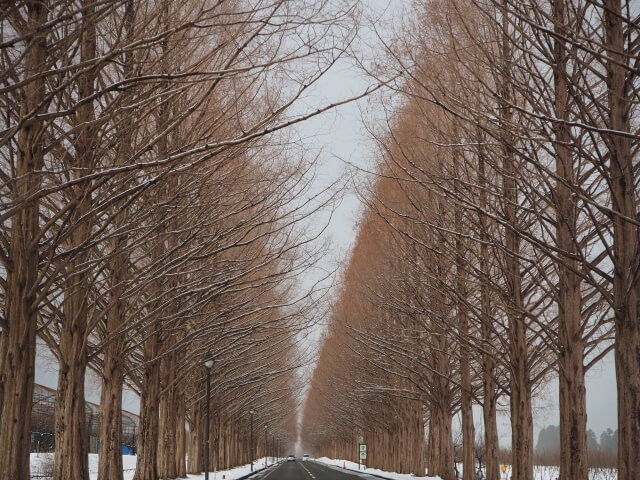
Kenrokuen is a huge garden with 11.4 hectares of land situated in the center of Kanazawa City , Ishikawa Prefecture . Designated as one of the three great gardens in Japan, it attracts a number of visitors all year round along with Kanazawa Castle which is located nearby. It is said to be originally created by the Kaga clan, which governed the area during the Edo period. The garden fascinates visitors with a number of iconic structures such as a traditional Japanese tea house, authentic stone lanterns, beautiful ponds, and pleasant bridges. Everything is designed to perfectly match the stunning landscape and surrounding nature.
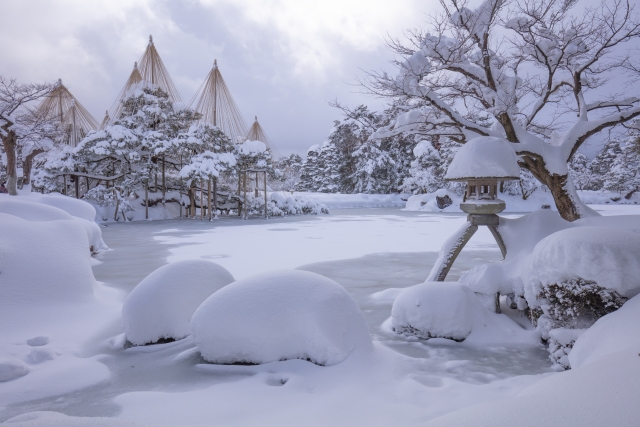
Pine trees in the garden are covered with a number of ropes stretching from the top to cover the whole tree. It is called Yukitsuri, which is a traditional way to protect the branches from the heavy snowfall!
Opening hours Kenrokuen Garden 7am – 6pm (May 1 – Oct. 15) 8am – 5pm (Oct. 16 – February) Admission \320 (adult) \100 (child)
As winter continues for a couple of months, make sure to plan your trip accordingly depending on what you can do and see each month. Early December is perfect for those who want to enjoy both autumn leaves and winter attractions. Crowds can be usually expected during the New Year holidays, so avoid late December to enjoy your trip with less stress if you want to travel in a quiet time. From January to February, when we have the most severe winter weather with more snowfalls of the year in some regions, you can get a better chance to catch a glimpse of scenic spots or tourist attractions beautifully covered with white snow! If you are a fan of winter sports such as skiing and snowboarding, be sure to check out our picks for the best ski resorts in Japan .
Japan Wonder Travel is a travel agency that offers guided tours throughout Japan. From private walking tours to delicious Food and Drink tours, we can help you organize the best tours just for you! If you want to explore Japan and learn more about the history and backstories of each area you are visiting, our knowledgeable and friendly English speaking guides will happily take you to the best spots! In addition, we can provide you with any assistance you may need for your upcoming trip to Japan, so please feel free to contact us if yu have any questions or need some help!
▶ Tokyo Tsukiji Fish Market Food and Drink Tour Explore the most lively and popular fish market in Tokyo and try some of the local’s favorite street foods and sake with one of our friendly and knowledgeable English speaking guides!

▶ Tokyo 1–Day Highlights Private Walking Tour (8 Hours) There’s no better way to explore an area than taking a tour with a knowledgeable local guide. You will have the chance to learn about the history and interesting background stories of Tokyo, as well as discover some hidden gems which can be hard to do without a guide.

▶ Mt. Fuji Day Trip Bus Tour from Tokyo Experience the breathtaking views of Mt. Fuji by visiting the highlights of the area on our guided sightseeing bus tour! Departing from Shinjuku in central Tokyo, you can travel comfortably to all of the best spots in the area by bus.

Follow us on Instagram , Facebook , and Twitter for more travel inspiration. Or tag us to get featured!
Happy traveling!

This post contains some affiliate links. When you click through and make a purchase we may receive some commission, at no extra costs to you.
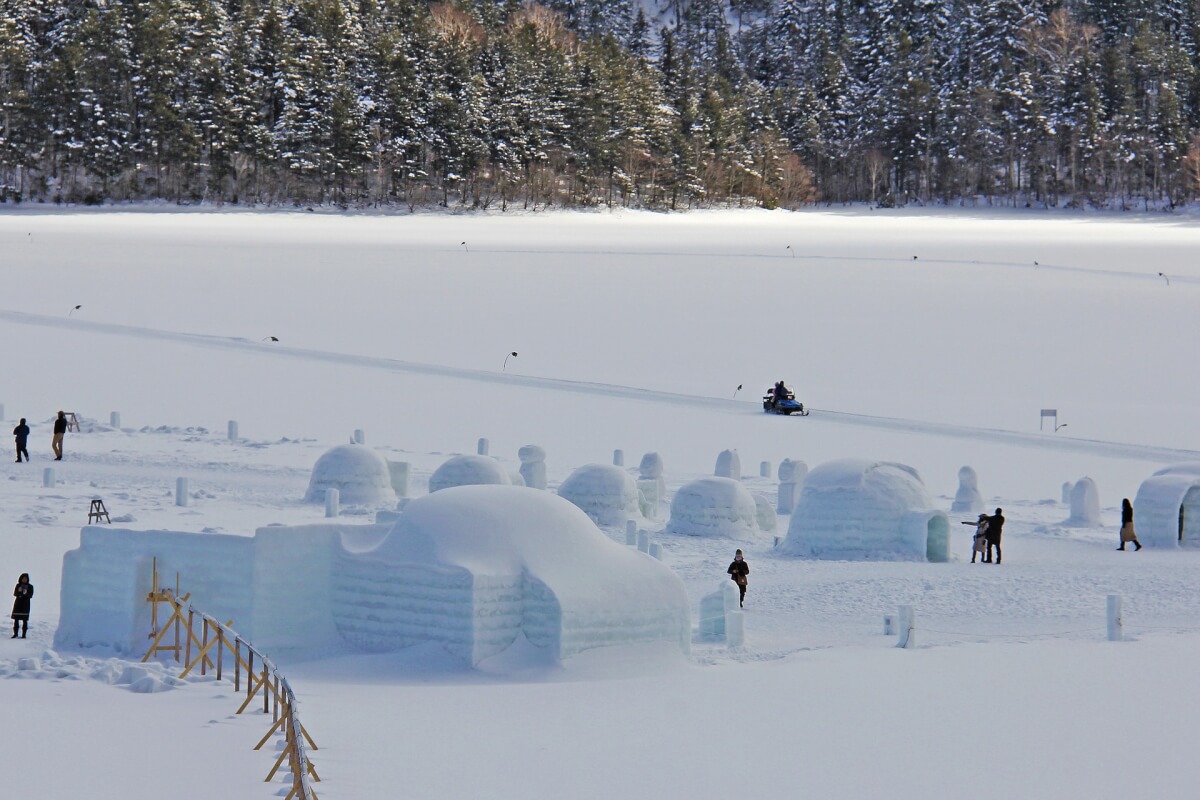
- Popular destinations
- Hidden places in Japan
- Tours and workshop
- Food and drink in Japan
- Itinerary in Japan
- Places to visit in Tokyo
- Food and drink in Tokyo
- Seasonal events
- Tours & workshops
- Tokyo This Week
- Day trip from Tokyo
- Itinerary in Tokyo
- Places to visit in Kyoto
- Food and drink in Kyoto
- Itinerary in Kyoto
- Day trip from Kyoto
- Travel tips
- Accommodation
- Cultural tips
- Transportation
- Tokyo Tours
- Kyoto Tours
- Kimono Rental
- Fukushima Tours
- Mount Fuji Tours
- Tour Package
- Media Kit(English/日本語)

- Thailand Lantern Festival
- Indonesia(Bali)
- South Korea
- China (HK, Taiwan)
- Itinerary Ideas
- Asia Highlights Travel Reviews
- Thailand Travel Reviews
- Vietnam Travel Reviews
- Cambodia Travel Reviews
- Japan Travel Reviews
- Myanmar Travel Reviews
- China Travel Reviews

Plan a Japan Winter Trip 2024: Top Experiences & 2 Itineraries
Winter (December to February) in northern Japan is like a white fairy tale world: white snow, colorful Christmas illuminations, and a relaxed atmosphere. Although Japan is cold in winter, it still attracts visitors with its unique winter experiences, fewer travelers, and cheaper costs.
Japan is a great place to spend Christmas holidays with your family: relax in an onsen (hot spring) in a traditional ryokan (inn) while appreciating the snowy scenery in Hakone, ski with your teenage kids at Hokkaido's best powder-snow ski resort, experience dreamy wintry lighting in Shirakawa-go, and see snow monkeys bathe in an onsen in Nagano.
In this article, we are going to look at how to plan a winter travel itinerary, which could be a memorable family holiday.
- Do I Need a Visa to Visit Japan?
4 Top Japan-in-Winter Experiences
- Top 2 Winter Itineraries in Japan
Tips for Winter Travel in Japan
Winter weather in japan.
- How Much Does It Cost?
Do I Need a Visa to Go to Japan?
Japan restored its visa-waiver system from October 11th, 2022. If your country is on the Japan visa exemption list, like Australia, Canada, USA, UK and almost all European nations, you can visit Japan for 90 days (in most cases) without applying for a visa in advance.
Discover real reviews of Highlights Travel Family 's best-rated service across trusted platforms.
Here are four top things to do that you should not miss in Japan in winter:
1) Relax in a Onsen in a Cozy Ryokan in Hakone
Staying at a ryokan with onsens (hot spring baths) is the most attractive experience to be had on a winter's day for many travelers from Japan and abroad.
Hakone is the home of onsens and has numerous natural hot springs, some of them are believed to have healing properties. A ryokan is a traditional-style Japanese form of accommodation where you can sleep on a tatami and enjoy high-class kaiseki (multi-course classical Japanese cuisine).
Nothing is better than to relax in an onsen with stunning snowy trees and mountains around you and your family to create unforgettable holiday moments.
Suggested reading: How Long Should I Spend in Japan
2) Ski with Your Kids in Hokkaido/Nagano
Japan has lots of family-friendly ski resorts offering quality powder snow, perfect surroundings, clear English signage, and excellent service. Japan has the best ski resorts in Asia, but it is still cheaper to ski there than in Europe.
Hokkaido's pistes are definitely some of the top Japan destinations in winter , where world-class ski resorts include Niseko and Rusutsu. Skiing in Hokkaido you can enjoy light and fluffy snow, icy mountain scenery, professional English-speaking skiing lessons for kids, teenagers, and families, and fresh seafood.
Nagano, just an hour and a half from Tokyo, is also a well-known ski resort. Once the main venue for the Winter Olympics, Hakuba Valley is Nagano's best family-friendly ski resort.
Check more details about plan a ski holiday with your family >>>
3) See Charming Winter Lighting in Shirakawa-go
Shirakawa-go is a UNESCO World Heritage site , a picturesque village known for its traditional gassho-zukuri farmhouses, which have steep thatched roofs that are named after 'praying hands'. In recent years, Shirakawa-go has become popular with travelers for its beautiful countryside views and unique farmhouses.
These farmhouses are extremely charming when covered in snow and illuminated at night. The wintry lighting scenes can usually be seen from January to February, but the lighting-up time varies from year to year and stays require advance booking.
Contact our travel advisors and we can arrange it for you.
4) Watch Snow Monkeys Soak in Onsens in Nagano
Nagano is a city surrounded by mountains and is not far from Tokyo. It's well-known for its Hakuba Ski Resort and snow monkeys that soak in hot springs. It is a good place to go for family holidays in winter.
Monkeys (Japanese macaques) in Jigokudani Monkey Park are the only ones in the world who love to soak in hot springs in winter. Watching the snowflakes fall on the monkeys, each of them relaxing in hot springs to keep warm, would be a new and unforgettable memory of the trip.
Winter Itineraries in Japan: The Top 2 Options
Here are two winter itineraries that are hand-picked for families visiting Japan for the first time with two popular lengths of holidays (9 and 14 days) , both including relaxing in hot springs, seeing snow-covered shrines, enjoying a cup of steaming Japanese tea, and the option to go skiing with your kids.
1) The 9-Day Classical Route: Cover Major Highlights in Japan and Ryokan Experience
- Tokyo–Hakone–Kyoto–Osaka
This itinerary covers the top highlights of Japan: experience kid-favoured anime elements and an attractive Christmas atmosphere and illuminations in Tokyo, soak in onsens at a comfortable ryokan with snow scenery in Hakone, spend family time in Kyoto trying on kimonos and feeding friendly deer.
Here is a summary itinerary for you ( contact us for more details):
- Days 1–3: Tokyo (samurai, make sushi, anime center, and Asakusa)
- Days 4–5: Hakone (ryokans with onsens)
- Days 6–8: Kyoto (snow-covered shrines, geishas, sake, and feed deer)
- Day 9: Osaka and departure
It's also a great idea to spend an extra 2–3 days having a family ski time in Nagano, which is not far from Tokyo.
Suggested reading: 10 Days in Japan >>>
2) 14-Day Best Winter Experience Route: Skiing, Snow Monkeys in Onsens, Wintry Lighting in Shirakawa-go
- Sapporo–Otaru–Tokyo–Nagano–Shirakawa-go–Kyoto
You can get the best winter experience in Japan with this itinerary: ski and explore a famous chocolate factory in Sapporo — capital of Hokkaido, take a day trip to Otaru to enjoy a snowy view on the Otaru Canal, see the magical sight of snow monkeys soaking in hot springs in Nagano, and appreciate the wintry lighting in Shirakawa-go.
Here is a summary itinerary for your inspiration ( contact us for further details):
- Days 1–3: Sapporo (skiing, the most famous local chocolate factory and Sapporo Ice Festival)
- Day 4: Otaru (Otaru Canal and exquisite glass)
- Days 5–7: Fly to Tokyo (Tsukiji Market, Tokyo Tower, sumo, and anime)
- Day 8: Nagano (snow monkeys soaking in hot springs)
- Days 9–10: Takayama and Shirakawa-go (well-preserved townhouses and snow-covered gassho-zukuri farmhouses)
- Days 11–13: Kyoto (geisha, tea ceremony, sake, ryokan with onsen, feed deer in Nara)
- Day 14: Depart from Kansai International Airport in Osaka
To create a wonderful winter trip in Japan, here are some suggested tips to help you to avoid unnecessary hassles.
- Christmas and New Year is one of the busiest times in Japan. It's better to plan ahead and book flights and hotels at least 6 months in advance to reserve your favourite hotel/room.
- Winter in Japan is cold and snowy. You'd better take thick clothes to keep warm. We recommend you to bring a down jacket, gloves, and waterproof boots.
- Most ski resorts in Japan have rental shops to rent or sell ski equipment, so you don't have to take heavy ski equipment to Japan. Of course, it's okay to bring your own equipment. You can pay for a delivery service that will ship your skis directly to the ski resort.
Just let us know your interests and requirements , and we can help make it happen.
Winter in Japan is from December to February and the weather is cold and dry.
- In Sapporo on Hokkaido, the average daily temperature range is from 0°C (32°F) in the warmest part of the day down to -6°C (20°F) at night. While in Tokyo or Kyoto temperatures average above freezing, ranging from 2 to 10°C (36–50°F) on average.
- The average rainfall per month in winter is low in Tokyo/Kyoto at around 58 mm (2 in), but the average snowfall in Sapporo on Hokkaido is a moderate 104 mm (4 in) — and more snow falls at Hokkaido's mountainous resorts.
December sees the beginning of winter in Japan, with clear skies, and colder and drier weather. Cities like Tokyo, Kyoto, and Sapporo get into the festive spirit when celebrating Christmas and New Year.
January/February is the best time to ski in the white world of northern Japan. The high-quality powder snow is the most important feature of ski resorts in Japan, which attracts many skiers to come and enjoy it.
How Much Does a Japan Winter Trip Cost?
Japan rivals Europe both in terms of facilities and service standards, which means that travel in Japan costs more than in China or in Southeast Asian countries.
US$350-500 per person per day is the typical cost for a private tour with 4-star hotels, based on a family of 3–5 people. This includes a private guide, private car, full-day itinerary, tickets for attractions, and a local 4-star hotel.
Why Asia Highlights (10,000+ reviews & 98.8% 5-star rating)
- Save Your Time:
- Less research, more enjoyment!
- Real-time 1V1 expert planning
- Maximize Your Flexibility:
- Personal local guide and ride
- Explore at your own pace
- Celebrate Your Journeys:
- Specially-crafted family adventures
- Celebrate milestones with style!
- 10-Day Japan Cherry Blossom Spring 2025 Mini-Group Tour
- 2-Week Japan Private Family Vacation
- 12-Day Classic Japan Tour
- 9-Day Japan Highlights Tour
- Plan a Family Trip to Japan 2024/2025: Experiences and Itineraries
- Plan a Japan Cherry Blossom Trip 2025, Dates and Avoid Crowds
- 12 Days in Japan: Top 4 Itineraries for First Visit 2024/2025
- 1 Week in Japan: Top 5 Itineraries for First Visit 2024/2025
- Japan Weather in January: Travel Tips for First-Timers
- Japan Weather in February 2024: Travel Tips for First-Timers
- Japan Weather in March 2024: Travel Tips for First-Timers
- Japan Weather in April 2024, Travel Tips (for First-Timers)
- Japan Weather in May 2024: Travel Tips for a First Visit
- Japan Weather in June 2024: Coolest Summer Month, Travel Tips for First Visit
- Japan Weather in July 2024: Full of Festivals, Travel Tips for First Visit
- Japan Weather in August 2024: Travel Tips for First Visit
- Japan Weather in September 2024, Travel Tips (for First-Timers)
- Japan Weather in October 2024: Travel Tips for First-Timers
- Japan Weather in November 2024: Best Autumn Month, Travel Tips
- Japan Weather in December 2024: Travel Tips for First-Timers
Get Inspired with Some Popular Itineraries
At Asia Highlights, we create your kind of journey — your dates, your destinations, at your pace. You can have any trip tailor made for your travel.
More Travel Ideas and Inspiration
Sign up to our newsletter.
Be the first to receive exciting updates, exclusive promotions, and valuable travel tips from our team of experts.
Why Asia Highlights
Where can we take you today.
- Middle East
- African Safari
- Travel Agents
- Loyalty Program
- Privacy Policy
Address: Building 6, Chuangyi Business Park, 70 Qilidian Road, Guilin, Guangxi, 541004, China
Boutique Japan
Top 8 Reasons to Visit Japan in Winter
Even if you don’t love cold weather, it’s hard to resist the magic of winter in Japan, the coziest time of year (with delightfully few tourists).
Japan is well known for the beauty of its seasons. The cherry blossoms in spring . Vibrant fall foliage . Even the lively festivals ( matsuri ) of summer.
Yet winter is often overlooked, despite offering some of Japan’s most sublime experiences — and fewer tourists. (See our full article on the seasons and when to visit Japan ).
Because we love winter in Japan both for its unique experiences and its relative lack of crowds, we’ve compiled a few of our favorite things about this underrated season. Get yourself cozy and read on!
Is Winter a Good Time to Visit Japan?
Weather in japan in winter, 8 experiences that make winter a unique time to explore japan.
Originally written in November 2014, this post was updated and republished on December 6, 2021.
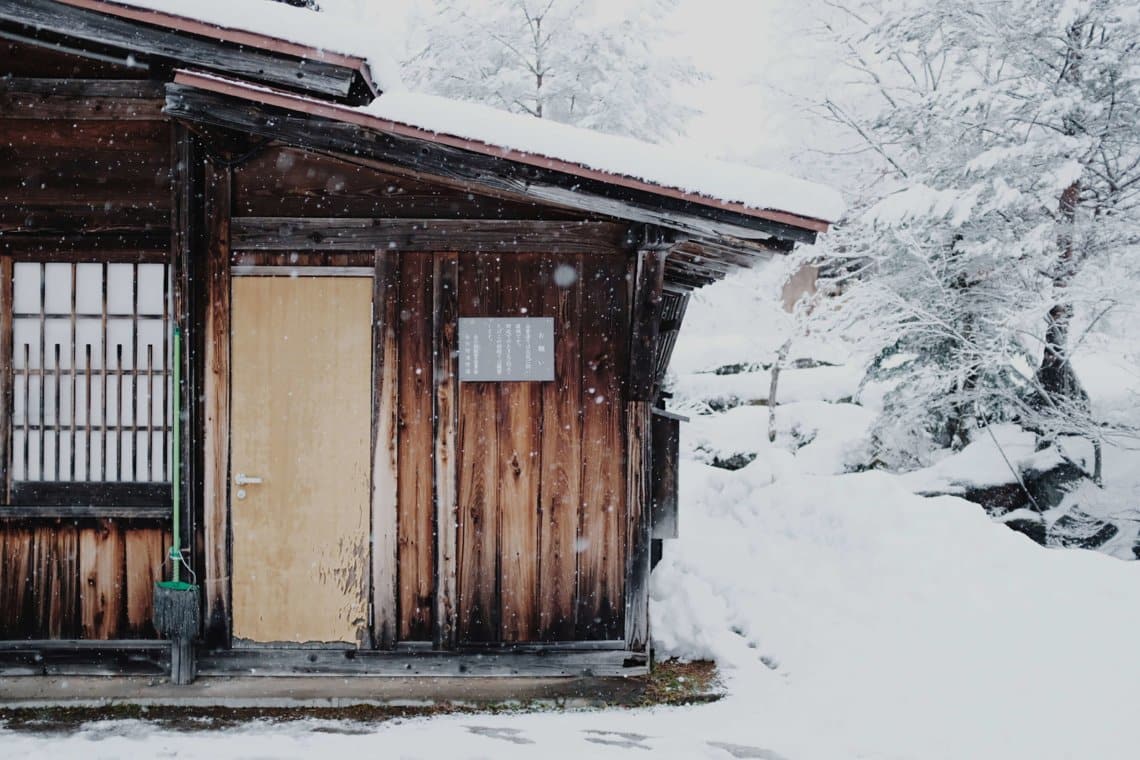
Most people are drawn to Japan’s peak seasons, spring and fall, so we’re always thrilled when a new client asks us, ”Is Japan worth visiting in winter?”
The answer is a resounding yes!
If you can handle a bit of cold weather, and love exploring with fewer tourists around, winter is a great time to visit Japan. As you can read in more detail below, winter in Japan offers amazing sushi and sashimi, heartwarming comfort foods and cozy izakayas , soothing hot springs and gorgeous snow-covered landscapes, and fewer crowds throughout the country.
How cold is Japan in winter? Well, let’s be honest. The weather in most parts of Japan in winter is cold – this much is true. But if you enjoy the art of coziness, you will love the feel of winter here.
When are the Winter Months in Japan?
Winter in Japan generally lasts from early to mid-December until the middle of March, but the duration and intensity vary by geography.
- In most parts of central Japan (including Tokyo , Kyoto , and Osaka ), winter temperatures range from about 25 to 45 °F (-4 to 7 °C).
- In mountainous and northern parts of Japan (such as Tohoku and Hokkaido , and the Japan Alps) it can get much colder. These areas experience a longer and more intense winter and are also blessed with abundant snowfall.
- In southern and western parts of Japan (such as Kyushu, Shikoku, and Okinawa ) it can still get cold, but on the whole, winter tends to be a bit milder.
Japan in December
In early December, it’s already winter in Hokkaido, but in places like Tokyo and Kyoto, it may still feel like late autumn. It’s common to have crisp, chilly weather and blue skies (hence the term akibare , referring to the clear sunny skies common in fall), and not uncommon to have views of Mount Fuji from Tokyo skyscraper hotels (such as Aman Tokyo and Park Hyatt Tokyo, among many others ).
By late December, it’s fair to say it feels like winter throughout Japan, though as usual the parts of the country furthest south and west (such as Kyushu, and especially Okinawa) remain milder.
Japan in January
As the crowds begin to thin following the New Year holidays , and mid-winter begins to set in, expect cold weather most everywhere you go. Even though the ski season starts before January, in most ski areas like the Alps, Tohoku, and Hokkaido, your probability of getting great conditions starts to increase once January rolls around.
For the most part, there are also very few tourists in January, other than at ski resorts. Most travelers use all their vacation time over the holidays, so if you can visit Japan in January you may have popular places like Kyoto mostly to yourself.
Japan in February
By February, most people in Japan are starting to get excited about spring (which usually begins to make itself felt by mid-March), and February can feel cold and dreary for residents. But for tourists, it’s another excellent time to visit, if you don’t mind the cold.
For travelers who enjoy spectacle, consider planning in advance to attend the remarkable Sapporo Snow Festival (Yuki Matsuri) . Held annually in February, Hokkaido’s Yuki Matsuri is one of the world’s great winter celebrations and features awe-inspiring ice sculptures, local cuisine, snow slides, snowball fights, ice bars, and more.
Just keep in mind that any holiday period tends to mean big crowds, and the Chinese New Year period (which often occurs in early February) is also a very busy time of year, with visitors flocking to Japan from throughout Asia.
Technically, winter lasts into March, though by the middle of March the cherry blossom season starts getting into full swing.
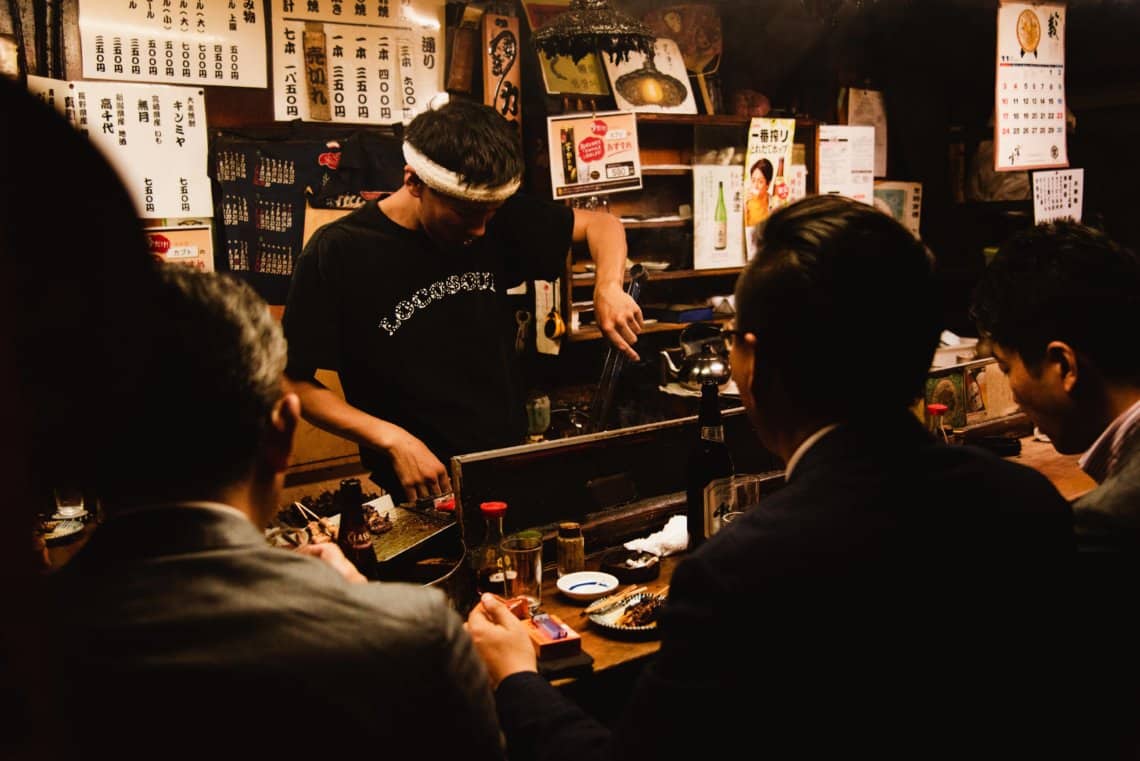
It can be hard for travelers to resist the pull of sakura (cherry blossoms) or fall foliage, but we think even people who normally dislike cold weather should consider visiting Japan in winter.
To help you decide when to travel to Japan, and whether this less crowded time of year is for you, let’s dive into what makes Japan such an appealing winter destination!
1. Fresh Sushi and Seafood
Eating local and seasonal food is nothing new in Japan, where people think little of traveling across the country to sample a local specialty in season. But while food is always a great reason to travel to Japan , winter is in some ways the best time of year for culinary travelers.
You’ll find extraordinary seasonal specialties at top sushi shops in Tokyo , and other sushi meccas such as Kanazawa , Toyama, Fukuoka , and Hokkaido. Hiroshima and Tohoku are just two of many destinations for oysters, where you can savor the bounty of winter paired with local nihonshu (sake) .
2. Japanese Wintertime Comfort Foods
Along with seafood, Japan is also outstanding when it comes to comfort foods. If you’re in Sapporo, on the northern island of Hokkaido, make sure to sample the heartwarming specialties of soup curry and miso ramen .
Winter also marks the appearance nationwide of two wintertime favorites: oden and nabe .
Oden can be found everywhere from oden -specialty restaurants to izakayas (see below) and even convenience stores . Large simmering pots of dashi -based broth slow cook ingredients such as daikon, boiled eggs, tofu, and more.
Nabe are stews (often translated as “hotpot”) composed of any of a wide range of ingredients, from vegetables to meat and seafood. Nabe is traditionally shared with friends or family, and there’s nothing more convivial than gathering around the table to enjoy one, especially in winter!
3. Cozy Bars, Izakayas , and Cafes
Speaking of conviviality, few things are more comforting than warming up at a local izakaya over small tapas-style plates and sake (see our full post on izakayas in Japan ).
An izakaya is typically a neighborhood establishment where locals go both for the food and the drink (it’s often translated as “Japanese-style tavern”). Izakayas have eclectic menus featuring anything from tofu, tsukemono (Japanese pickles), and grilled vegetables, to sashimi, yakitori, and karaage (fried chicken).
Eating and drinking at an izakaya is a great way to mingle with locals, and particularly comforting during winter.
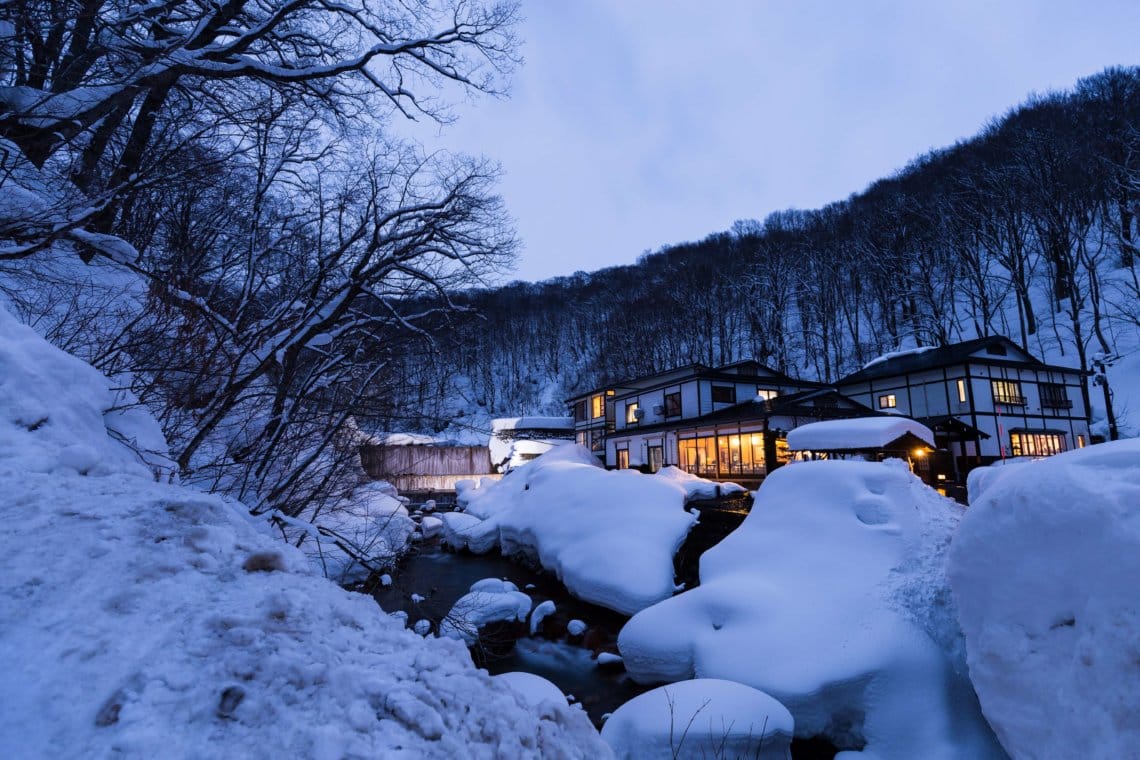
4. Luxury Ryokans and Onsen
Without onsen (hot springs), winter in Japan would be beautiful, but perhaps not transcendent. Many countries around the world have pristine hot springs, but in Japan, the art of the onsen experience has been perfected to an extraordinary degree.
Visiting a ryokan (Japanese-style inn) with onsen, particularly in winter, is a quintessential Japanese experience and not to be missed (see more wonderful things to do in Japan ).
When staying at a ryokan with hot springs, you pass the time by soaking in healing mineral waters, contemplating nature, drinking green tea in your tatami -lined room, napping, and partaking in incredible, memorable meals. Yes, food is also an integral part of the onsen experience. A ryokan stay typically includes dinner and breakfast, both of which normally feature a beautiful array of local and seasonal specialties.
The exceptional combination of nature, culture, food, and omotenashi (Japanese hospitality) result in an experience that is both incredibly relaxing and culturally fascinating.
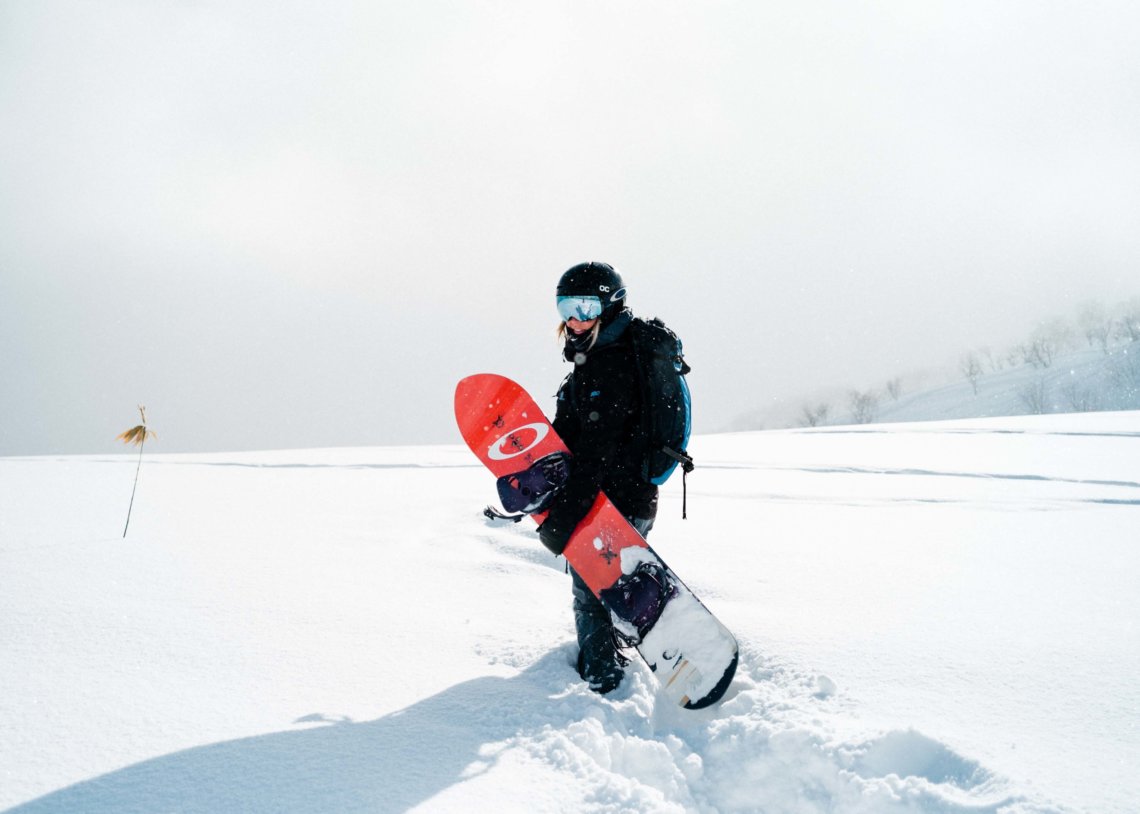
5. Powder Paradise: Japan’s Legendary Skiing and Snowboarding
If you love outdoor sports, what could be better than skiing or snowboarding all day, then enjoying a delicious hot meal of local Japanese cuisine and a soak in the onsen ?
Japan is blessed with abundant snowfall throughout its many mountainous regions, and you can find winter resorts around the country, particularly in Hokkaido, Tohoku, and the Japan Alps.
In Hokkaido, snowfall is so plentiful that skiers and snowboarders consider it to have some of the best-quality powder in the world. Niseko is by far Hokkaido’s best-known ski destination and is home to luxury accommodations and a thriving culinary scene. A small handful of Hokkaido’s other notable ski areas include Rusutsu, Furano, and Tomamu.
Tohoku and the Japan Alps are both slightly easier to get to (both are fairly convenient to reach by train , whereas the easiest way to get to Hokkaido for most people is by domestic flight), and can be great alternatives if you’re not attached to the idea of skiing in Hokkaido.
The 1998 Winter Olympics were held in Nagano, in the Japan Alps, and the region’s many ski resorts include Hakuba, Shiga Kogen, and Nozawa Onsen. In the Alps, you’re also within easy reach of the famous snow monkeys (see below). As for Tohoku, it’s one of Japan’s most off-the-beaten-path regions, and in addition to its many ski areas features pristine nature, history, and some of Japan’s best onsen .
While it varies a bit depending on the area, the ski season generally lasts from December to April, though expect the best conditions around January and February (naturally, it can vary a lot from year to year). And for the non-skiers traveling with the powderhounds, enjoy gorgeous snow-covered landscapes, onsen and spa treatments, and warm nihonshu !
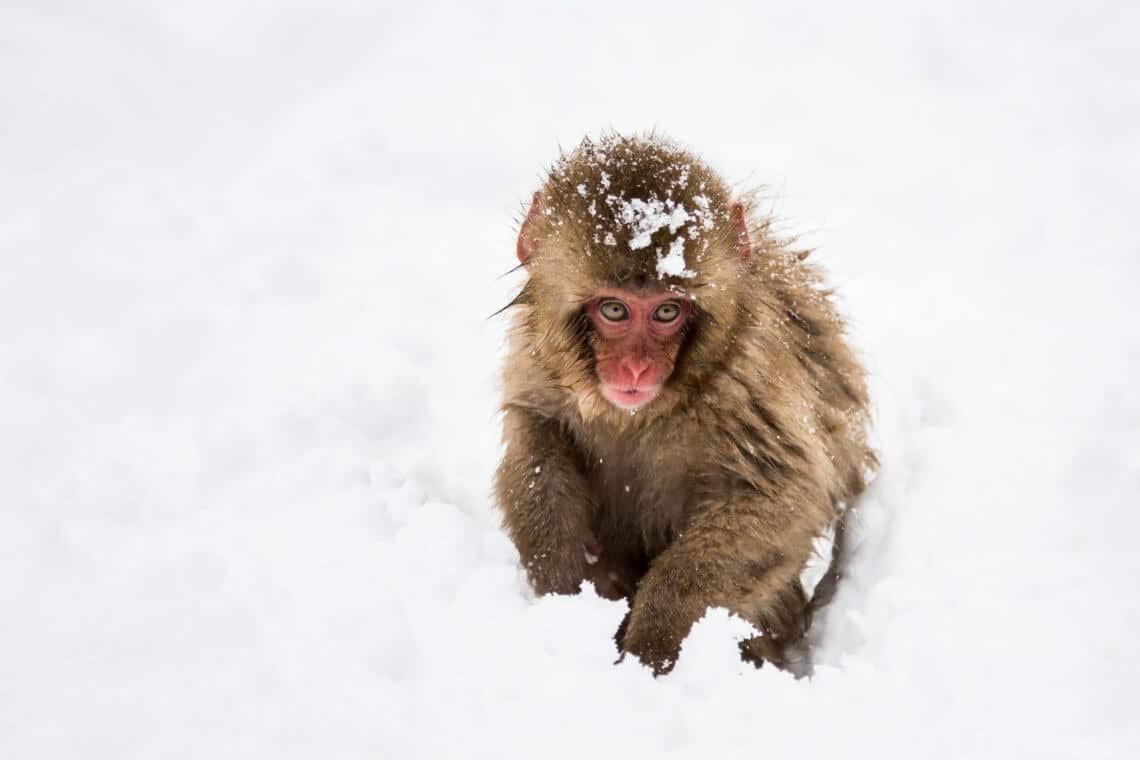
6. Japan’s Snow Monkeys Love Winter
Humans are not the only ones enjoying onsen . Especially in winter, the Japanese macaques of the famous Snow Monkey Park soak in the remote onsen of Jigokudani.
Located in the mountains of Nagano Prefecture in the Japanese Alps, the Snow Monkey Park (Jigokudani Yaen Koen) is especially popular among family travelers , photographers, and of course animal lovers.
The Snow Monkey Park is open throughout the year, but it’s best experienced in the dead of winter, when the landscape is covered in deep snow and the local macaques have good reason to spend time savoring hot springs.
7. New Year’s Celebrations in Japan
While many restaurants and other establishments close for several days around the New Year’s period, which holds great significance in Japanese culture, it can also be a very special time to be in Japan.
Sure, you’ll find countless New Year’s Eve parties at bars, clubs, and restaurants in cities such as Tokyo and Osaka, which have some of the best nightlife on Earth. But while we love a good party, perhaps the real magic of New Year’s in Japan is found in its more old-fashioned side.
This is especially apparent in historic cities like Kyoto and Kanazawa, where locals flock to traditional districts and Buddhist temple bells ring out at midnight, creating an unforgettable, timeless atmosphere. On New Year’s Day, many Japanese people visit Shinto shrines, such as Meiji Jingu Shrine in Tokyo.
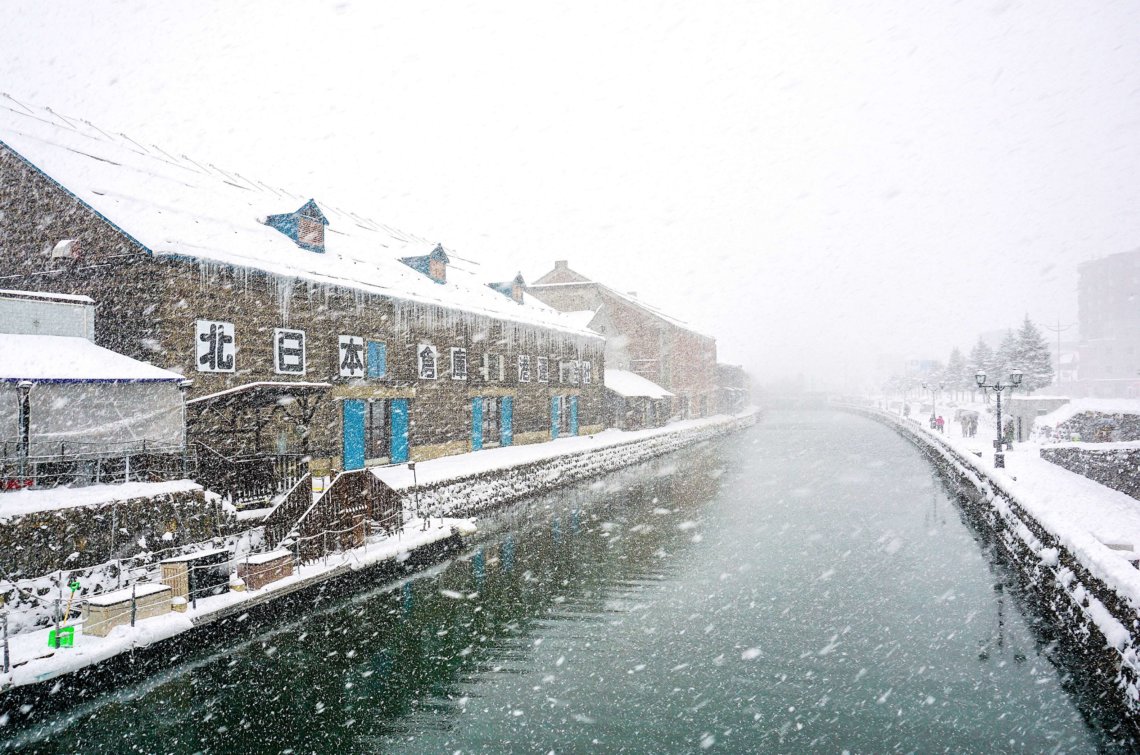
8. Enjoy Fewer Crowds in Winter
If you’re the type of traveler who loves getting off the beaten path, and avoiding touristy times of year, winter may be the ideal time for you to visit Japan.
Apart from the winter holidays, winter is generally a low season. However, keep in mind that this doesn’t quite apply to ski resorts, which tend to be at their most popular throughout the winter.
Ski areas notwithstanding, when speaking with clients who have flexible travel schedules we often ask: would you rather have warmer weather, or fewer tourists around? If you can tolerate a bit of cold, and enjoy feeling like you have a destination almost to yourself, consider bundling up for the chilly weather and travel to Japan in winter!
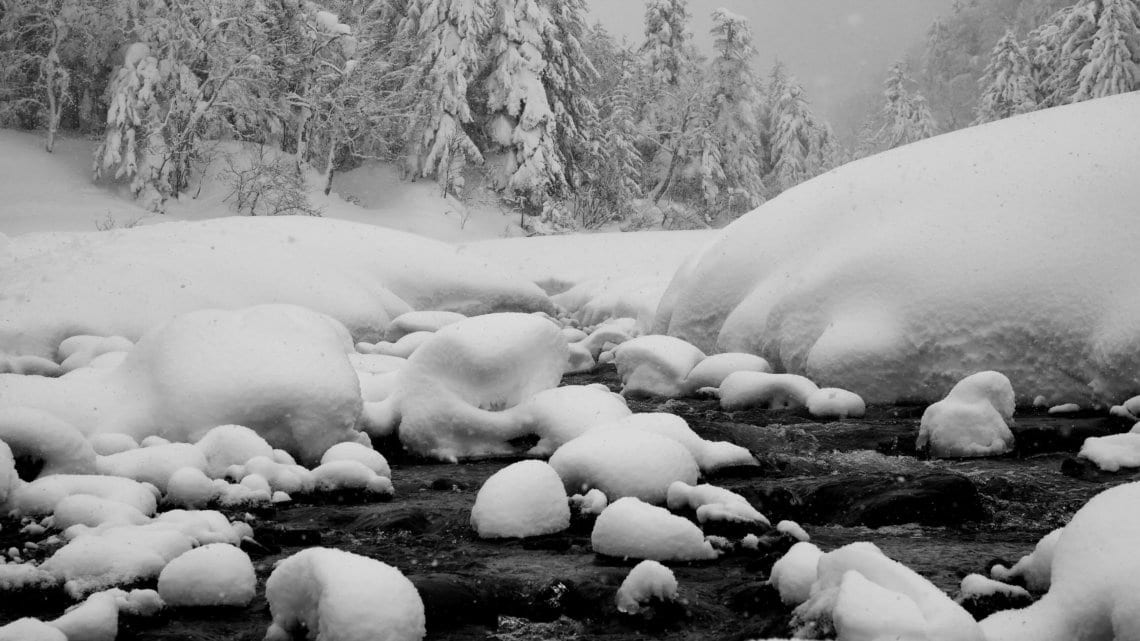
When to Begin Planning Your Winter Trip to Japan
We hope our introduction to the joys of winter in Japan helps you as you plan your adventure!
Depending on your dates and trip priorities, we recommend planning about 6-12 months in advance to ensure you can get your first choice accommodations and experiences.
You can see our real-time availability here, and if you’re curious to learn more about how we design each custom trip, check out our trip-planning process .
More Great Posts

Is Japan Expensive?
One of the most common myths about Japan is that it’s incredibly pricey — but how expensive is Japan really?…

Japan’s Best Boutique and Luxury Hotels & Ryokans
The best hotels and ryokans in Japan range from charming traditional inns in the countryside, to stylish design hotels and…

Traveler’s Guide to the JR Pass (Is It Worth It?)
The Japan Rail Pass (or JR Pass, for short) can be a good way to get around Japan, but many…
Plan Your Japan Trip
Learn more and contact us to discuss your unique trip.
Get Started
- The Process
- Testimonials

Fun Things to Do in Winter: 12 Best Destinations to Enjoy Winter in Japan
Winter is a beautiful time to visit Japan. There are many beautiful winter destinations to choose from. From enjoying gorgeous winter scenery to fun winter activities, to places serving specialty winter cuisine, you can find something for your trip. This article will help you decide on the best winter destinations to visit in Japan. Main image: PIXTA
Why should you visit Japan in winter?
Japan is often well-known for its spring and fall seasons . However, the cold winter season is no less of a great time to visit the breathtaking country. Japan has a variety of experiences that are unique to winter ! For example, during winter , there are beautiful illuminations . Cities and towns are decorated in lights from around November till February. The surreal scenes the cold nights and snow create are a view you can only see during winter . There are also a variety of snow festivals, with extravagant displays of statues and objects made of snow and ice, winter activities you can enjoy with your family and friends, and also warm your body up at an onsen after a long cold day. The scenery and the contrast between cold and hot is a very relaxing onsen experience unique to winter in Japan. Here is a quick list of some of the most recommended winter destinations to help narrow down your options.

1. Sapporo Snow Festival (Sapporo): Enjoy the stunning snow and ice sculptures on show
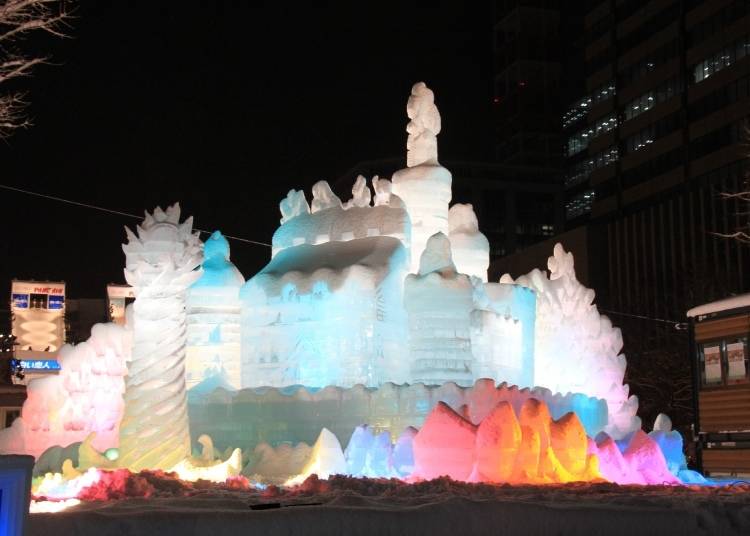
The Sapporo Snow Festival is one of Japan's most popular winter events. It is held over one week in February in Sapporo , Hokkaido. People from all over Japan head to Hokkaido to enjoy the stunning snow and ice sculpture displays. Before the pandemic, it attracted around two million visitors every year. The festival has three areas: the Odori Park site, the Susukino site, and the Tsudome site. Each area has different-sized sculptures, with the Odori Park site featuring some of the largest snow sculptures lit up daily. The Susukino site typically features around 100 ice sculptures, and the Tsudome site, which is slightly less central, is an area where you can play in the snow. The sites offer activities such as snow slides, snow rafting, and more snow sculptures to admire. The Odori and Susukino sites are located in central Sapporo and can be accessed either on foot (around 20 min.) or via the Namboku Subway Line (around 10 min.) from Sapporo Station. The Tsudome Site is slightly harder to access but can be accessed using a shuttle bus or a 15-minute walk from Sakaemachi Station, 10 minutes on the Toho subway line from Sapporo Station.

- Address Various places in Sapporo city, Hokkaido, 060-0042 View Map
- Nearest Station Odori Station (Namboku Line / Tozai Line / Toho Line)
- Phone Number 011-281-6400
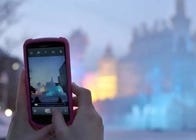
2. Zao Juhyo Festival (Yamagata): Enjoy Yamagata’s famous snow monsters on Mount Zao
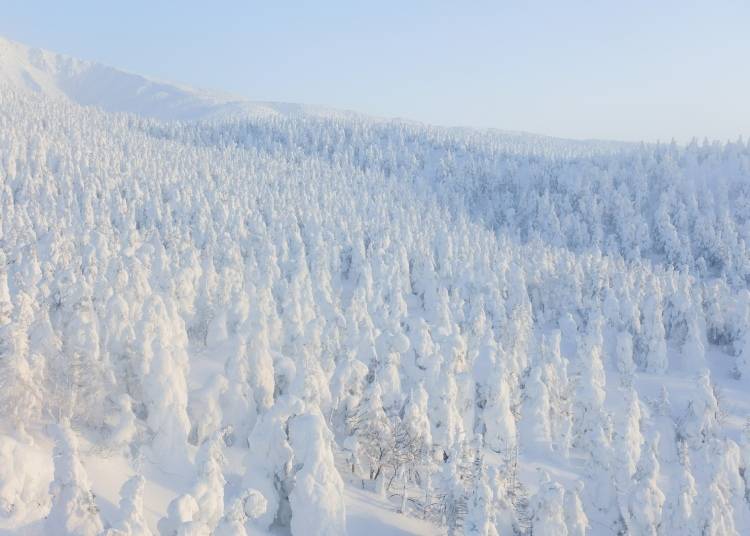
These startling figures, known as the “snow monsters,” are called “juhyo” in Japanese and can be seen on the summit of Mount Zao, in Yamagata. These spooky shapes are actually trees that have been swallowed whole by the snow, creating the image of scary monsters. You will find these monsters lit up during the Zao Juhyo Festival, held around early January till early March. Make sure to dress warmly when visiting this incredibly popular destination, as the weather tends to be harsh at the top of the mountain . To reach Zao Onsen , close to where the snow creatures are, you must take a bus from Yamagata Station. The ride is around 40 minutes. Once you have reached Zao Onsen , take two ropeways to reach Jizo Summit Station.
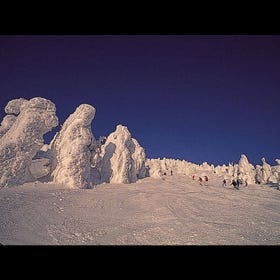
- Address Zao Onsen, Yamagata City, Yamagata Prefecture, 990-2301
- Nearest Station Yamagata Station (Ou Line / Yamagata Line / Yamagata Shinkansen) 37 minutes by bus
- Phone Number 023-694-9518
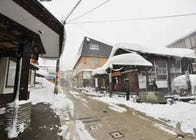
3. Nabana no Sato (Mie): Visit one of Japan’s most famous illuminations
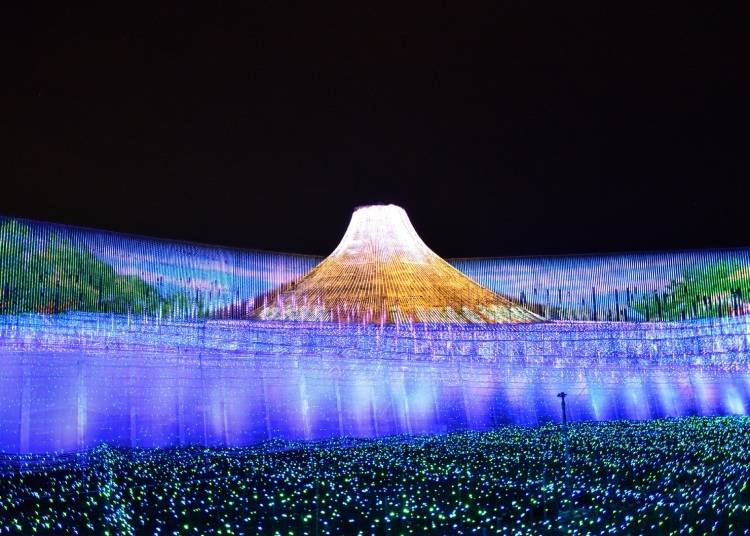
A garden of flowers and light, Nabana no Sato is a very famous winter illumination site with over 5.8 million LEDs lighting up the spectacular garden of flowers. The LEDs light up the dark, cold winter nights and create romantic images among the sea of flowers. They even have an open-air hot spring foot bath, restaurants, and shops where visitors can stop and warm themselves up or take a short break. Nabana no Sato is around a 35-minute trip from Nagoya Station. It takes around 25 minutes to reach Nagashima Station, and then there is a direct bus from Nagashima Station to Nabana no Sato, which takes around 10 minutes. From Osaka, it is a 2-hour train ride from Namba Station to Nagashima Station.

- Address 270, Nagashimachokomae Urushibata, Kuwana-shi, Mie, 511-1144 View Map
- Nearest Station Nagashima Station (JR Kansai Main Line) 21 minutes on foot
- Phone Number 0594-41-0787
4. Shirakawago (Gifu): Take in this real-life winter wonderland
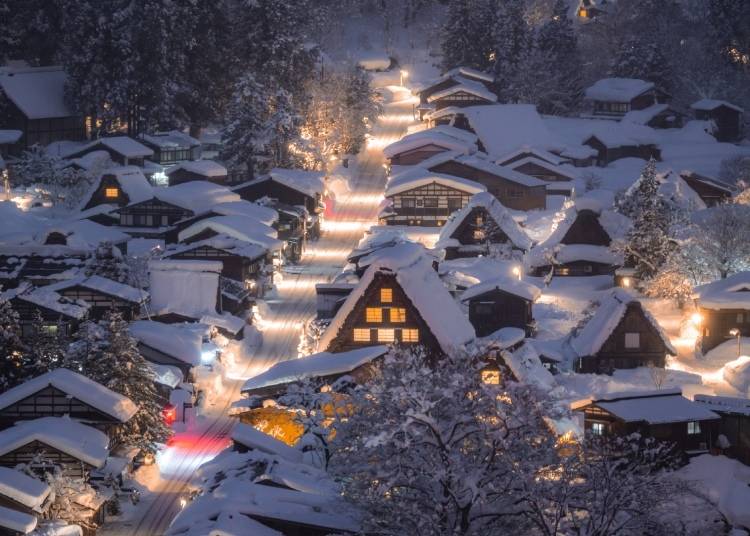
Shirakawago is well-known for its farmhouses with steep roofs. These buildings were specially made to combat the large amount of snow the region receives yearly. With around one to two meters of snow, during winter , Shirakawago turns into a real-life winter wonderland. The locals often plan special illumination events from 5:30 p.m. to 7:30 p.m. to add to the already magical atmosphere of Shirakawago. In 2024, illuminations are scheduled for the following dates (all of which are Sundays): ・January 14 ・January 21 ・Janaury 28 ・February 4 ・February 12 ・February 18 From Kanazawa Station, there is a highway bus visitors can take, which will take around 90 minutes. Note that the last bus that can access Shirakawago departs before the light-up starts. For safety reasons and to help avoid overcrowding, the number of visitors allowed into the village is limited. All visitors must get an advance reservation to visit during the light-up events. To enjoy the illuminations, there are three ways of visiting: 1. Joining a bus tour. Several tour companies offer tours from Takayama and Kanazawa. Reservations would need to be made directly with the tour operators. (There is also a tour available at the link below.) 2. Stay overnight. There is a limited number of rooms available and many local lodgings held a lottery system in previous years. It's important to book accommodations early for availability. (For 2024, note that all accommodations are fully booked for the illumination period.) 3. Visit by car. This involves registering for a parking space as well. Details on this and on tours can be found on the Shirakawago Tourist Association website .
- Address 1086 Ogimachi, Shirakawa, Ono District, Gifu 501-5627
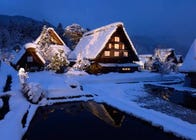
5. Ginzan Onsen (Yamagata): Be transported back a hundred years to Japan’s Taisho Era
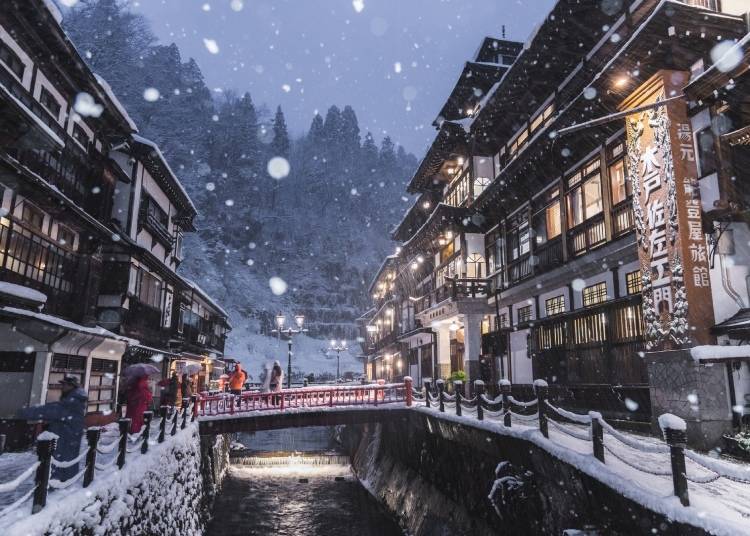
Ginzan Onsen is a very popular hot springs town in Japan, and its iconic wooden structures, many originally constructed around the 1920s and 1930s, are visited by crowds of tourists every year. The atmosphere will leave you breathless and feel like you have taken a step back in time. Along the beautiful Ginzan River are multiple traditional Japanese ryokan inns. Stroll along the snowy footpaths and then warm your body up at one of the authentic hot springs . While it makes a great day trip, staying overnight in Ginzan Onsen lets you have the whole snowglobe fantasy to yourself! Because of the area's popularity, be sure to book accommodations well in advance (and make sure they include meals, as the number of restaurants is very limited). To get to Ginzan Onsen , it is a 40-minute bus ride from Oishida Station. Getting to Oishida Station from Tokyo is around a three-hour Shinkansen ride.

- Address Yamagata Prefecture Obanazawa City Yamagata Large Ginzan Shinhata, 999-4333 View Map
- Nearest Station Oishida Station (Ou Line / Yamagata Shinkansen)
- Phone Number 0237-28-3933
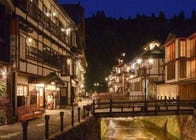
6. Oirase Gorge (Aomori): Tour through this beautiful winter valley
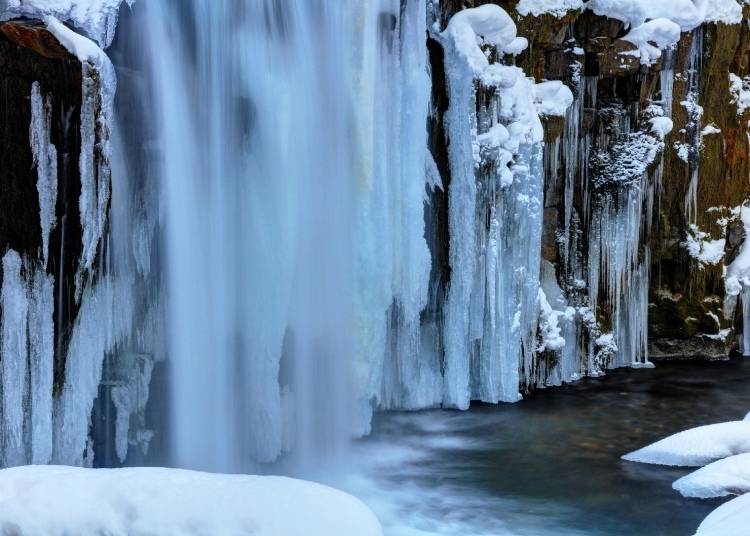
The breathtaking Oirase Gorge is filled with frozen waterfalls, rows of stunning icicles, and mountains covered in pure white snow. This beautiful scenery has even been designated as a Special Place of Scenic Beauty . Take advantage of a Winter Bus Tour, like one offered by Towada Travel , so you can fully enjoy the views without worrying about driving in the winter climate.
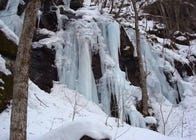
- Address Oirase Keiryu building, Towada-shi, Aomori larger section of a village Okuse character Tochikubo 183, 034-0301 View Map
- Nearest Station Shichinohe-towada Station (Tohoku Shinkansen / Hokkaido Shinkansen)
- Phone Number 0176-74-1233
7. Jigokudani Snow Monkey Park (Nagano): Go on a one-day trip to see the bathing monkeys!
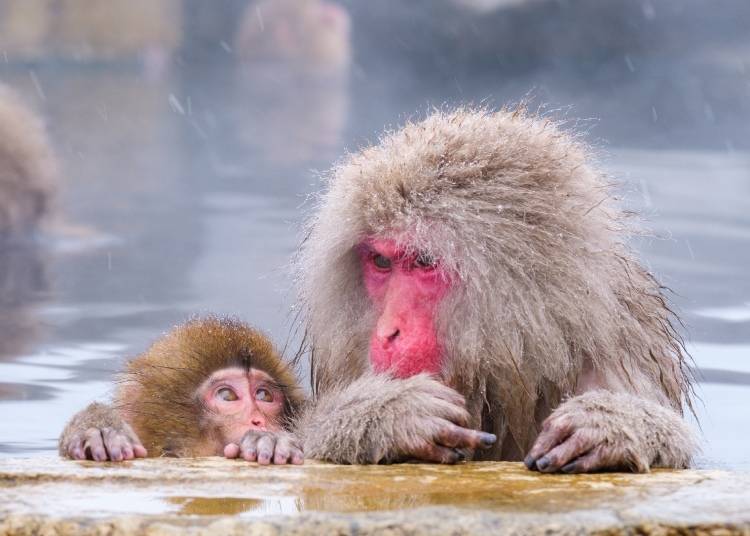
When you think of winter in Japan, the image of the snow monkey relaxing in the onsen may have been a photo you have seen already! Jigokudani Yaen-koen is located in the northern part of Nagano Prefecture . Because of the steep slopes of the valley and steam coming off the hot springs below, this area became known as “Jigokudani” - “Hell Valley.” The numerous wild Japanese macaques (or “snow monkeys”) have called this area home for ages. And today, you can enjoy watching the adorable snow monkeys soaking in the hot springs , surrounded by snow! While you can make it on your own to the Jigokudani Monkey Park , given the park ’s location, it is convenient to join a tour. The tour below showcases some of the exciting areas of Nagano, including the iconic monkeys bathing in the onsen .
- Address 6845 Yamanouchi-machi, Shimotakai-gun, Nagano, Japan 381-0401
8. Icicles of Misotsuchi (Saitama): A magical art-like scenery only seen during winter
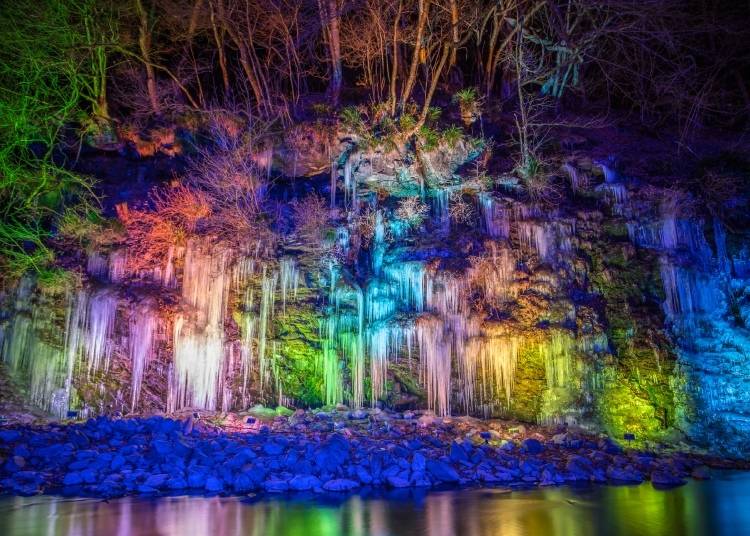
This magical world created by icicles is just a short train ride away from Tokyo. The icicles can grow to around 30 meters in width and 8 meters in height and are formed by the headstream of the Arakawa River . This view can only be seen from mid-January till mid-February, as it is the coldest time of the year. The illumination of the icicles is also a sight to see. The icicles of Misotsuchi can be visited by taking the Seibu Ikebukuro Line from Ikebukuro Station to Hanno Station and then transferring to the Chichibu Line to Mitsumineguchi Station. From there, you will need to either take a bus or taxi to reach the icicles of Misotsuchi. Be sure to check the official website for dates and details.
- Address 4066 Otaki, Chichibu, Saitama 369-1901, Japan
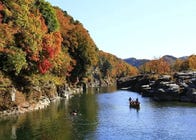
9. Shiretoko Drift Ice (Hokkaido): A spectacular and unique view of drifting ice
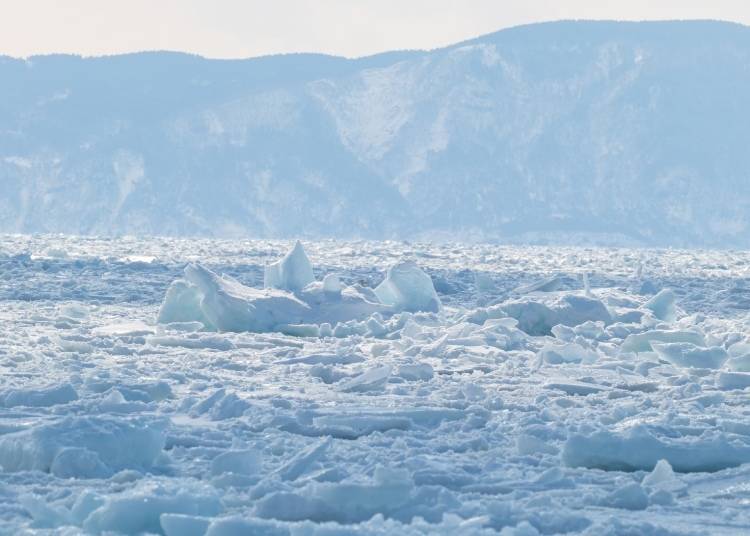
Shiretoko is a peninsula located in northern Hokkaido, and its abundance of nature enabled it to become a World Heritage Site . The adjacent Sea of Okhotsk experiences a build-up of drift ice (or Ryuho) during winter . This beautiful sight can only be seen during early February and March. In order to celebrate this magical view, the Shiretoko Ryuho Festival is held and allows visitors to enjoy both the drifting ice, ice domes, and exciting illuminations. If you're staying in the area, various hotels and ryokans offer warm onsens from where people can view the drifting ice. You can also join a tour to don a dry suit and enjoy an exciting walk on the ice as well! The easiest way to get here is by taking a night bus named “Eagle Liner,” which departs from Sapporo Station. The night bus will deliver you to Utoro Town in Shiretoko in the morning. Accessing Shiretoko via train is somewhat more complicated, as it involves around a 4-hour trip from Sapporo to Kushiro , then another 2 hours and 26 min. on the Semmo Line to Shiretoko -Shari Station. From here, you would take a bus from Shari Bus Terminal to the Utoro Hot Spring area.

- Address Rausu-cho, Menashi-gun, Hokkaido and Shari-cho, Shari-gun, 099-4100 View Map
- Nearest Station Shiretoko-Shari Station (Senmo Main Line)
- Phone Number 015-432-7500
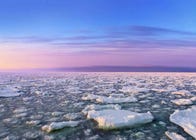
10. Shirohige Waterfall (Hokkaido): A unique waterfall that resembles a white beard?
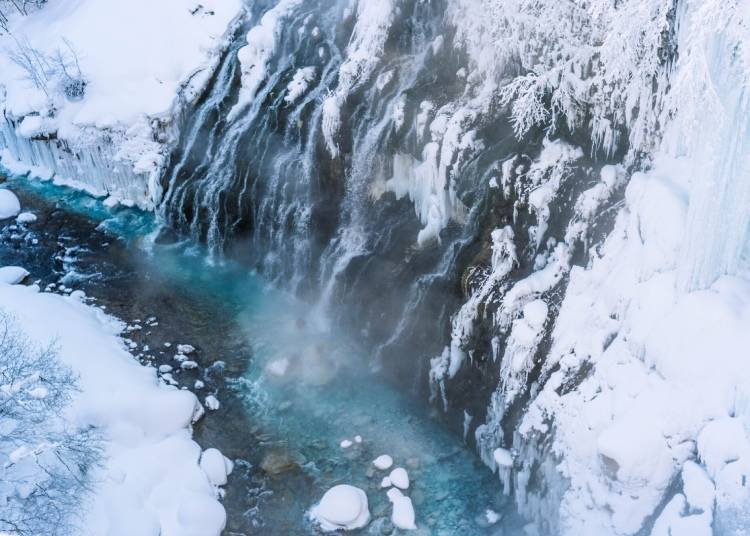
Shirohige Waterfall is located 600 meters above sea level and is known for the water flowing in between the rocks, which resembles a white beard, hence the name “shirohige” (translating to white beard). During winter , most of the rivers freeze, including white beard; the flowing water creates a dreamlike scene. The frozen waterfall is lit at night, adding to the fabulous view. Shirohige Waterfall is a 30-minute bus ride from JR Biei Station. You can also enjoy this area on a day trip tour from Sapporo as well.

- Address Shirogane, Biei-cho, Kamikawa-gun, Hokkaido, 071-0235 View Map
- Nearest Station Biei Station (Furano Line) 30 minutes by bus
- Phone Number 0166-94-3025
11. Mt. Fuji (Yamanashi/Shizuoka): Take in Japan's most iconic mountain
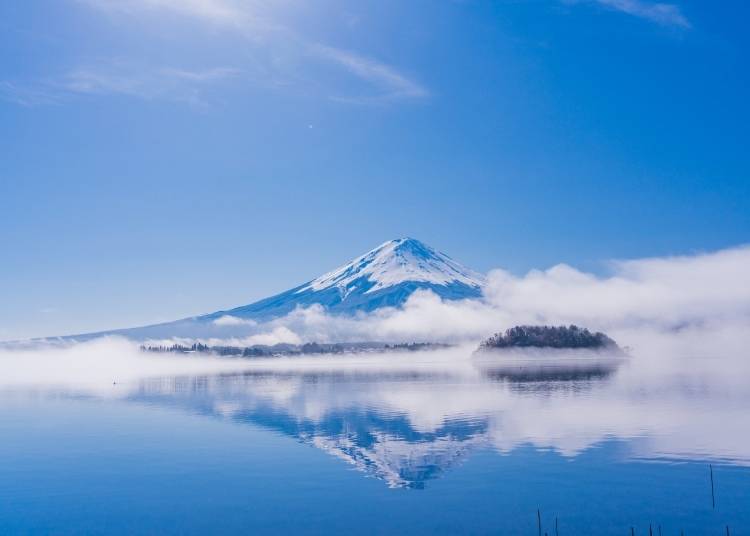
In winter , you can enjoy stunning clear views of Japan’s iconic 3776-meter-tall mountain from many areas. But to really soak it all in, you’ll want to head to Lake Kawaguchi. One of the famed “Fuji Five Lakes ,” this area affords incredible views of Japan’s majestic mountain . Also in the area is Arakurayama Sengen Park , home to the iconic five-story pagoda that’s widely considered one of Japan’s best landmarks . Toward the southeast is Oshino Hakkai, a popular scenic spot with ponds and stunning Mt. Fuji views. You Getting to the Lake Kawaguchi area via bus or train is easy, and we recommend staying overnight to enjoy a memorable experience: sunrise over Mt. Fuji. If you are considering a day trip, however, several tours are available. Some include options to tour the area or even head to the Gotemba Premium Outlets to enjoy some shopping. Any way you get there, visiting in winter also means there is a higher chance of seeing Mt. Fuji due to the cold and clean air, and you can see it beautifully covered in white snow!

- Address Fujikawaguchiko-machi, Minamitsuru-gun, Yamanashi, 401-0301 View Map
- Nearest Station Kawaguchiko Station (Kawaguchiko Line (Fujikyuko)) 1 minute on foot
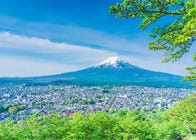
12. Izu Shaboten Zoo (Shizuoka): Watch the adorable capybaras come to take a bath in the hot springs
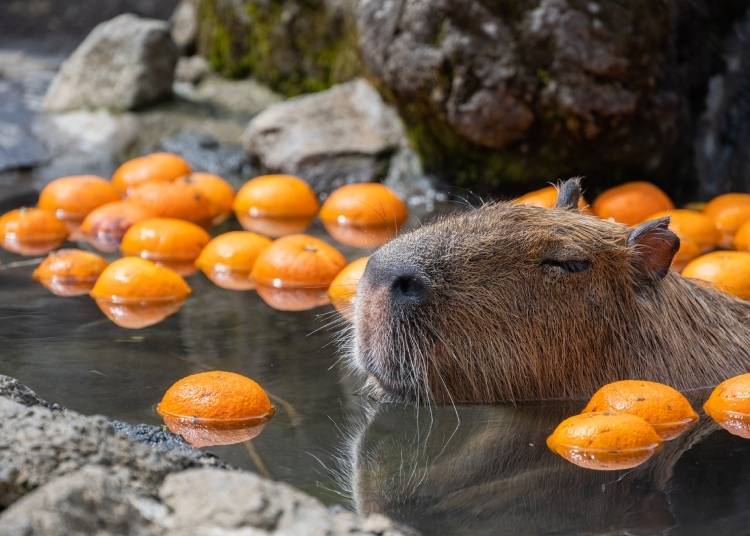
Izu Shaboten Zoo is home to beautiful botanical gardens and animal attractions. But visit during winter , and you’re in for a treat! Home to Japan’s first-ever capybara onsen , Izu Shaboten Zoo is a must for families. You can admire these adorable creatures taking a bath in the hot springs - a treat only during the winter months. There is also a petting area where you can touch the capybaras and other animals. Izu Shaboten Zoo is around two and a half hours by train and bus from Tokyo Station .
- Address 1317-13 Futo, Itō, Shizuoka 413-0231
Tips for an exciting winter adventure!
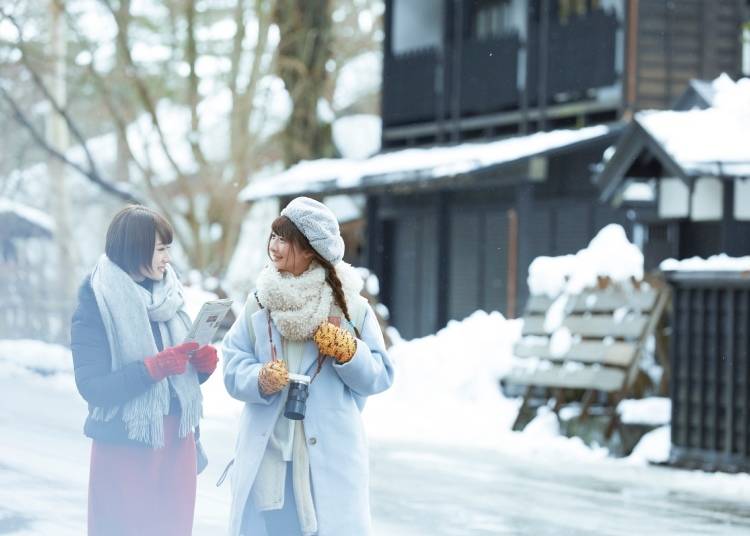
One of the pros of traveling during winter is that it is considered off- season . While the holiday season (Christmas and New Year) tends to be busy with the locals, tourist-wise, many decide not to travel during the cold months. This means you will be able to enjoy all of these exciting destinations without the worry of overcrowding, making these destinations well worth your time. Take advantage of various transport passes to make the most of your exciting winter adventure. Most prefectures and/or regions will have some form of a pass, which will often allow you to take as many rides as you like within a day. In many instances, if you show these passes, they usually give you a discount on entrance fees to famous tourist spots. In particular, when traveling to Japan, if you are able, the Japan Rail Pass is very convenient as it allows you to ride JR trains and buses. They have an extensive transport network throughout the country, and it is beneficial when you want to access various destinations efficiently, as this rail pass also covers the Shinkansen. Lastly, do not forget to eat the multiple specialties of each region. If you are a seafood lover, winter is the season perfect for a range of seafood , including oysters and crab. These delicacies are particularly tasty during the winter season . Other than seafood , during winter , dishes such as a hot pot or a bowl of ramen are great to soothe your tired body and taste the unique flavors of each region. Make sure to enjoy both the event at the destination but also the local foods and winter specialties at the various prefectures to make the most of traveling during winter in Japan!
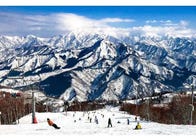
- Category Winter
Share this article.
Limited time offer: 10% discount coupons available now!

Recommended places for you
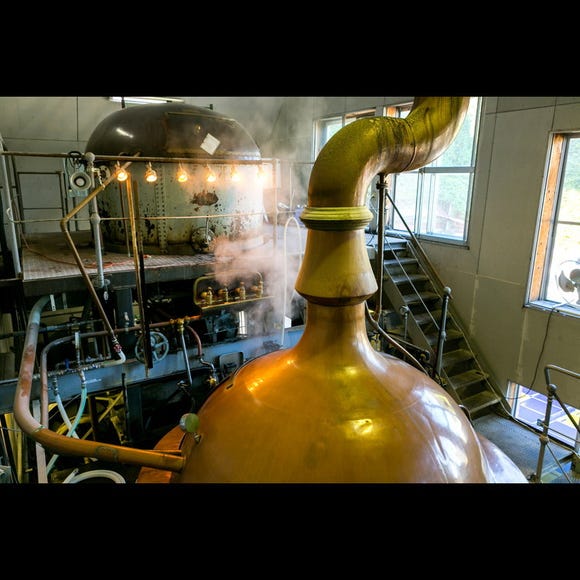
Baeren Brewery Co., Ltd.
Other Sightseeing
Morioka, Hiraizumi And Hachimantai

Jukuseiniku-to Namamottsuarera Nikubaru Italian Nikutaria Sannomiya
Kobe, Sannomiya, Kitano

Rukku and Uohei
Sapporo / Chitose

Kamesushi Sohonten
Umeda, Osaka Station, Kitashinchi

Yoshida Gennojo-Roho Kyoto Buddhist Altars
Nijo Castle, Kyoto Imperial Palace

ISHIDAYA Hanare
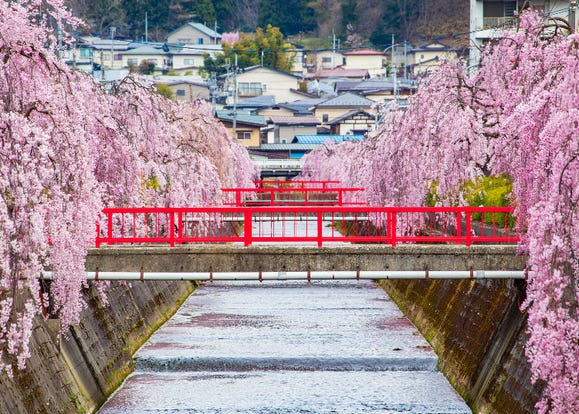
10 Breathtaking Places in Yamagata to See the Cherry Blossoms
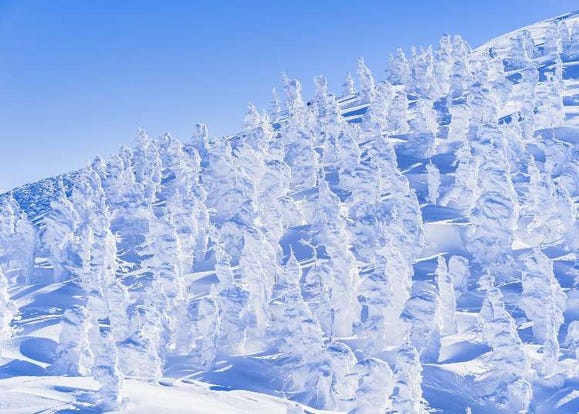
The Snow Monsters of Zao: Journey Among Yamagata’s Winter Wonders
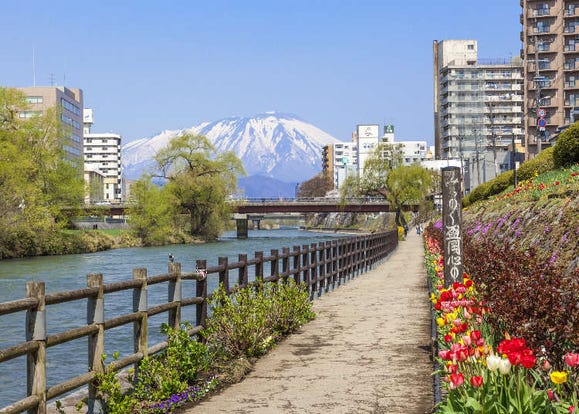
19 Best Things to Do in Morioka: See, Eat, and Shop Your Way Through Iwate's Capital City
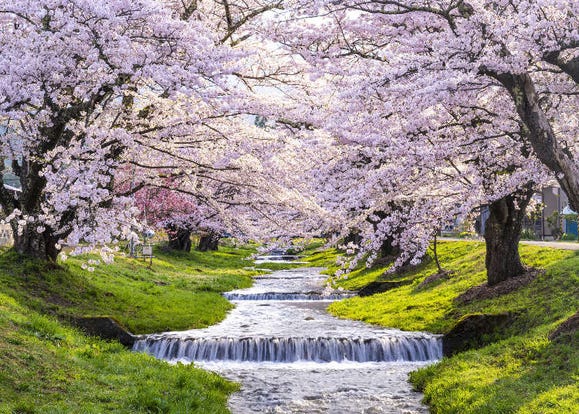
10 Dreamy Places in Fukushima to See the Cherry Blossoms

Iwate Prefecture Guide: Explore Rugged Coastlines, Towering Mountains, and Historic Towns in Northeastern Japan
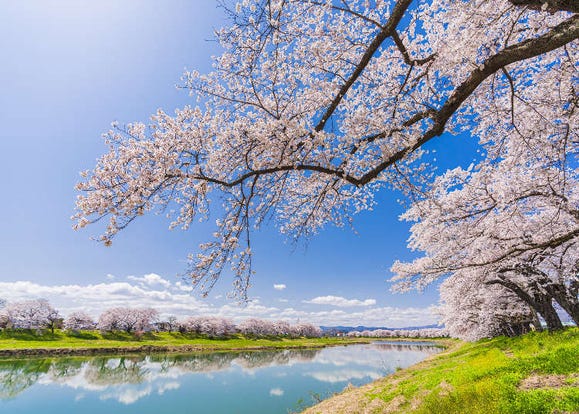
10 Beautiful Places in Miyagi to See the Cherry Blossoms
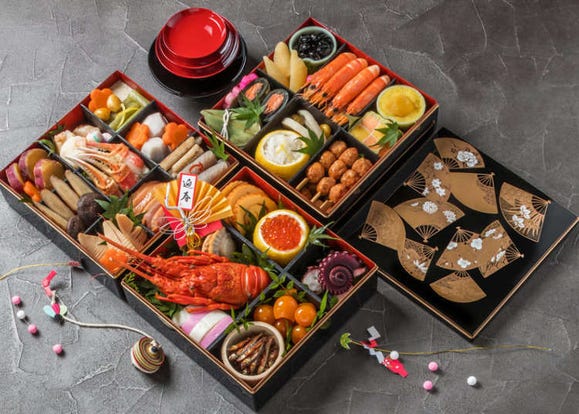
Osechi Ryori: Japan's Lucky and Traditional New Year's Feast
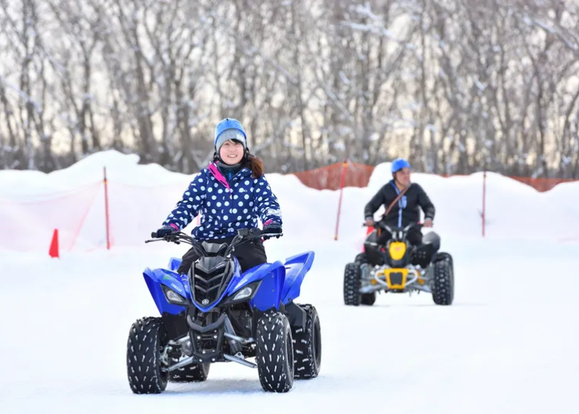
4 Day-Trip Snow Activities to Enjoy in Sapporo: Snowmobiling, Horseback Riding & More
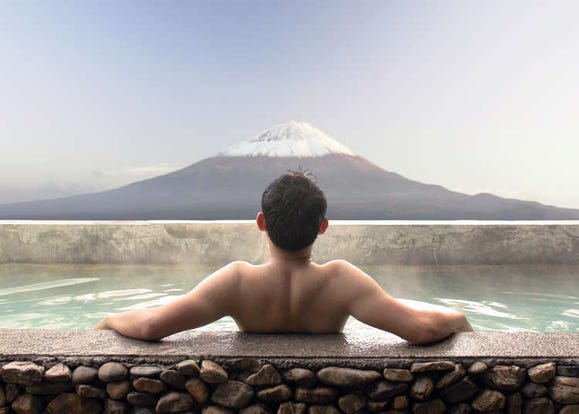
Japan's Bath Culture: Tips You Should Know!
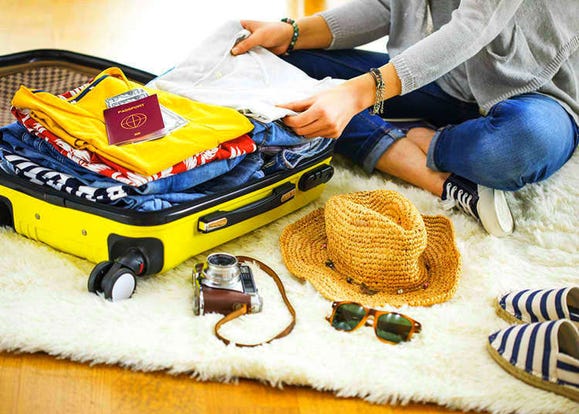
What to Pack for Japan: 8 Essential Things for a Hassle-Free Trip
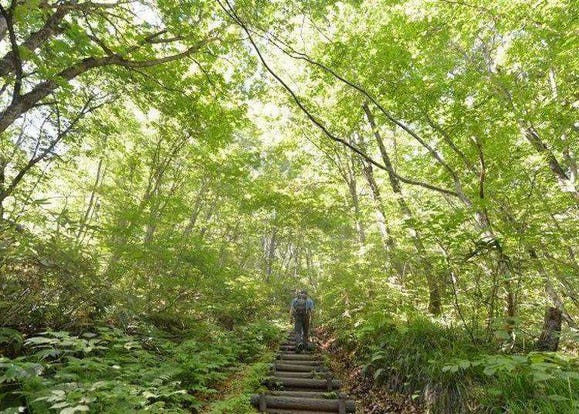
Shirakami-Sanchi Guide: Hiking in Japan's Intense & Untouched Beech Forest (Aomori)
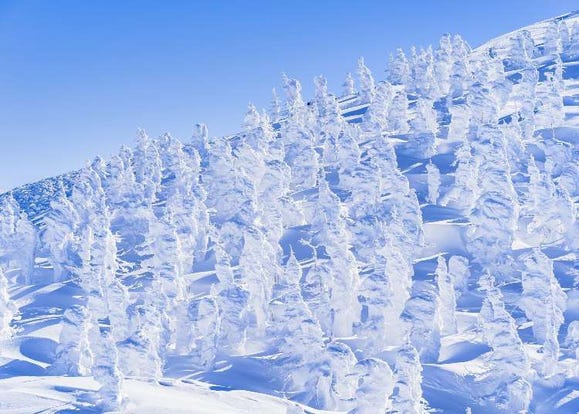
- #best sushi japan
- #what to do in odaiba
- #what to bring to japan
- #new years in tokyo
- #best ramen japan
- #what to buy in ameyoko
- #japanese nail trends
- #things to do japan
- #onsen tattoo friendly tokyo
- #best coffee japan
- #best japanese soft drinks
- #best yakiniku japan
- #japanese fashion culture
- #japanese convenience store snacks
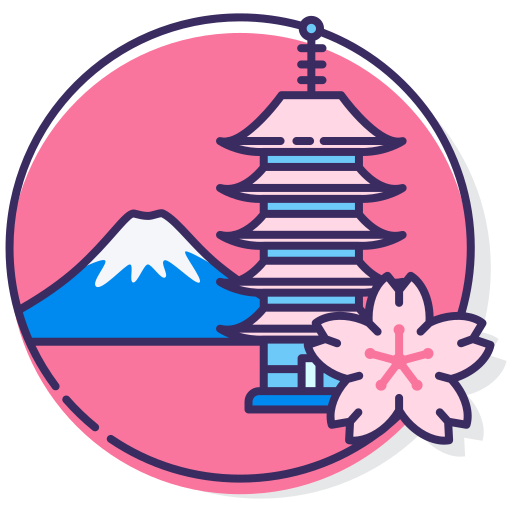
Jack in Japan
Your guide to all things JAPAN
- Destinations
Japan in Winter: A Guide to the Best Winter Activities and Destinations
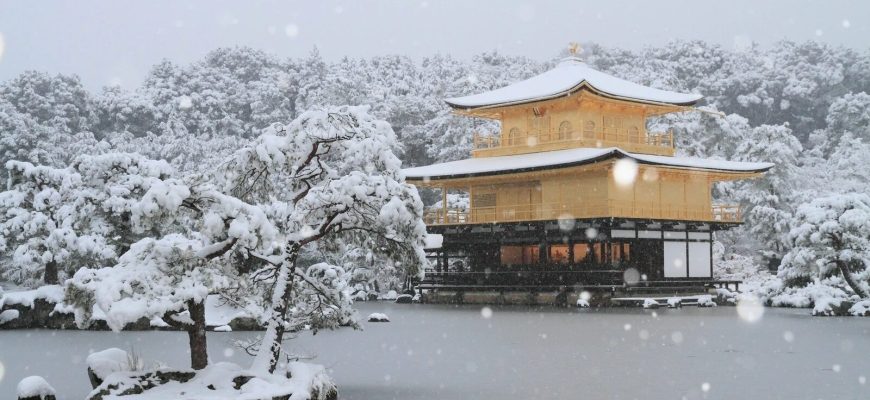
Are you ready to explore the wonders of winter in Japan? This article will guide you through the key information and essential activities for your cold-weather excursion. From snow-draped landscapes to thrilling winter sports, hot springs, cultural celebrations, wildlife encounters, culinary delights, and unique snow experiences, Japan in the winter has something to offer everyone.
Explore the magic of Kyoto’s winter gardens or hit the slopes in Niseko, a powder snow paradise. Experience the social warmth of Sento or witness the luminescent beauty of winter illuminations. Encounter the famous snow monkeys or indulge in seasonal seafood and hearty Japanese comfort foods. Whatever your interests, Japan in the winter has it all. This article will help you plan your perfect winter itinerary, navigate Japan’s winter weather, and answer frequently asked questions about visiting Japan during the winter months.
Key Information
Exploring the snow-draped landscapes of japan, the japanese alps, the magic of kyoto’s winter gardens, the thrill of winter sports in japan, niseko: a powder snow paradise, hakuba valley: skiing amidst majestic views, japan’s hot springs during winter, private onsen escapes, the social warmth of sento, cultural celebrations: winter festivals in japan, sapporo snow festival, illuminations that light up the night, encounters with wildlife: the famous snow monkeys, culinary delights: winter’s flavorful offerings, seafood at its seasonal best, warm up with hearty japanese comfort foods, unique snow experiences, drift ice adventures in hokkaido, mystical snow monsters of zao, planning your perfect winter itinerary, when winter lasts: timing your visit, staying cozy: accommodation choices, navigating japan’s winter weather, winter apparel guide, travel safe: coping with snow and ice, frequently asked questions, is it a good time to visit japan during winter, is japan expensive in winter, what months constitute winter in japan.
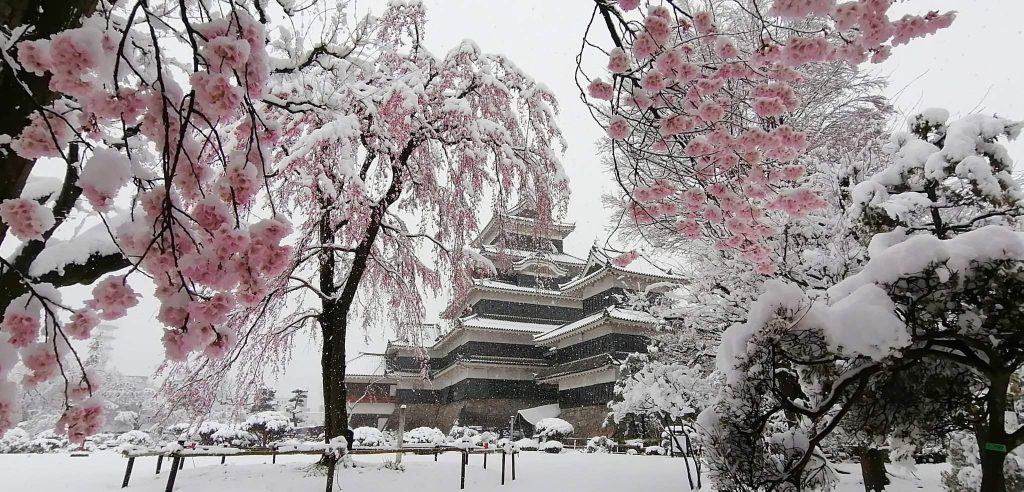
Winter in Japan is a season of abundant snowfall that transforms the country into a picturesque wonderland. From the UNESCO World Heritage sites in Mie Prefecture to the snow-covered slopes of Hakuba Ski Resort, there is something for everyone. The holiday season starts in early December, making it the perfect time to explore traditional Japanese inns in onsen towns like Nozawa Onsen and Noboribetsu Onsen. These places are known for their hot water and Japanese hot springs, providing a warm escape from the chilly winter temperatures.
Tokyo Station has become a hub for those seeking the best ways to travel to popular destinations. With the JR Pass in hand, convenience stores are at every corner, making travel easy and convenient. Fewer crowds make navigating parts of Japan easier, like Akita Prefecture or Shiga Kogen.
Early January is ideal for attending Japan’s most popular winter events. For example, visitors can attend the Yokote Kamakura Festival and admire snow sculptures or partake in outdoor activities like ice skating. In Odori Park, the light-up event near Mt Fuji is a spectacle, especially during the snow season when thick snow blankets the area.
Visiting public baths after a day of enjoying powdery snow at popular places like the Hakuba Ski Resort offers a glimpse into the heart of Japanese culture. Taking part in unique activities, such as watching sumo wrestlers, also offers this glimpse.
For those seeking a serene experience, winter in Shiga Kogen is known for thick snow and snow slides. Alternatively, visitors can also consider visiting the lesser-known Yokote Kamakura Festival in Akita Prefecture, which promises fewer tourists and extra serenity.
Overall, Japan is one of the most popular winter adventure destinations, offering something for everyone, from winter sports to cultural experiences.
Japan’s winter landscape is a unique experience. Winter begins in December and the coldest month is February. The northern regions of the country are more rugged and full of snow-capped mountains, while it remains mild in Okinawa. In this section, we’ll explore two winter destinations in Japan that offer a unique experience: The Japanese Alps and Kyoto’s Winter Gardens.
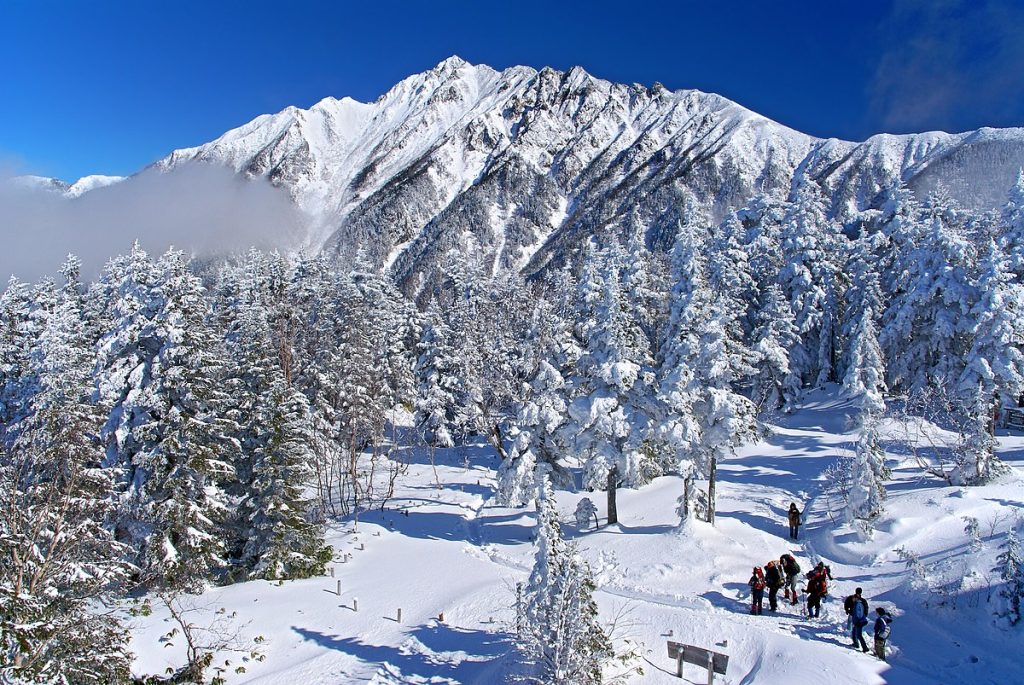
The Japanese Alps are a winter wonderland that offers a sight to behold. Imagine mountains blanketed in powder snow, with ski resorts nestled amidst their slopes. However, it’s not just about the snow. The Alps’ charm lies in adventure. Whether carving down a slope or basking in the serene mountain views, there’s a sense of exhilaration and peace that is uniquely Alpine. A visit to the traditional villages of Ogimachi and Gokayama adds cultural richness to your winter escapade. It makes the Japanese Alps an unforgettable winter destination.

Kyoto’s Winter Gardens offer a softer hue, leaving behind the image of the towering Alps. Snowfall gently covers the temples and pagodas, transforming the city into a calm winter haven, awaiting the warmer weather. During winter, certain gardens stand out, including the Karesansui at Ryoan-ji Temple, the stroll garden at Ginkaku-ji Temple, and the Hojo Garden at Tofuku-ji. The snow enhances their Zen beauty, reflecting the Japanese appreciation for nature and beauty. These gardens provide a peaceful escape from the cold and are essential stops on any winter itinerary in Japan.
In summary, Japan’s winter landscape offers a unique experience to travelers. The Japanese Alps and Kyoto’s Winter Gardens are two winter destinations that offer a unique experience. The Japanese Alps offer a range of winter sports and cultural experiences, while Kyoto’s Winter Gardens offer a peaceful escape from the cold.
Japan is a top destination for winter sports enthusiasts. Two of the most popular destinations for skiing and snowboarding are Niseko and Hakuba Valley.
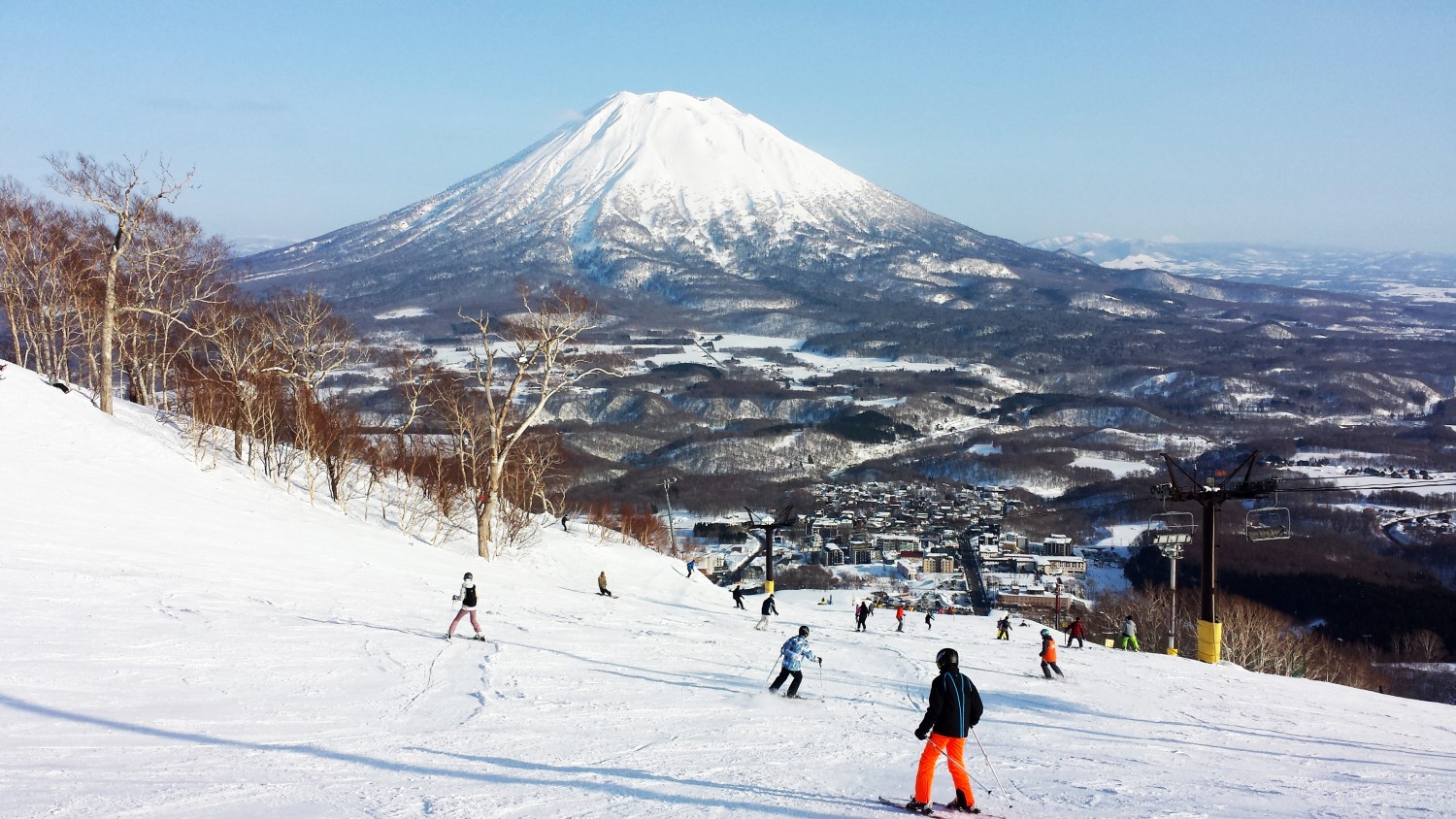
Niseko, located in Hokkaido, is a haven for powder snow enthusiasts. It is renowned for its excellent skiing conditions, with plenty of snow, varied slopes, and an active après-ski scene. The ski resorts in Niseko, such as Annupuri and Hanazono, are well-known for their outstanding powder snow. After a day of skiing or snowboarding, visitors can unwind with craft beers and rare whiskies in the vibrant après-ski scene.
Table: Niseko Ski Resorts
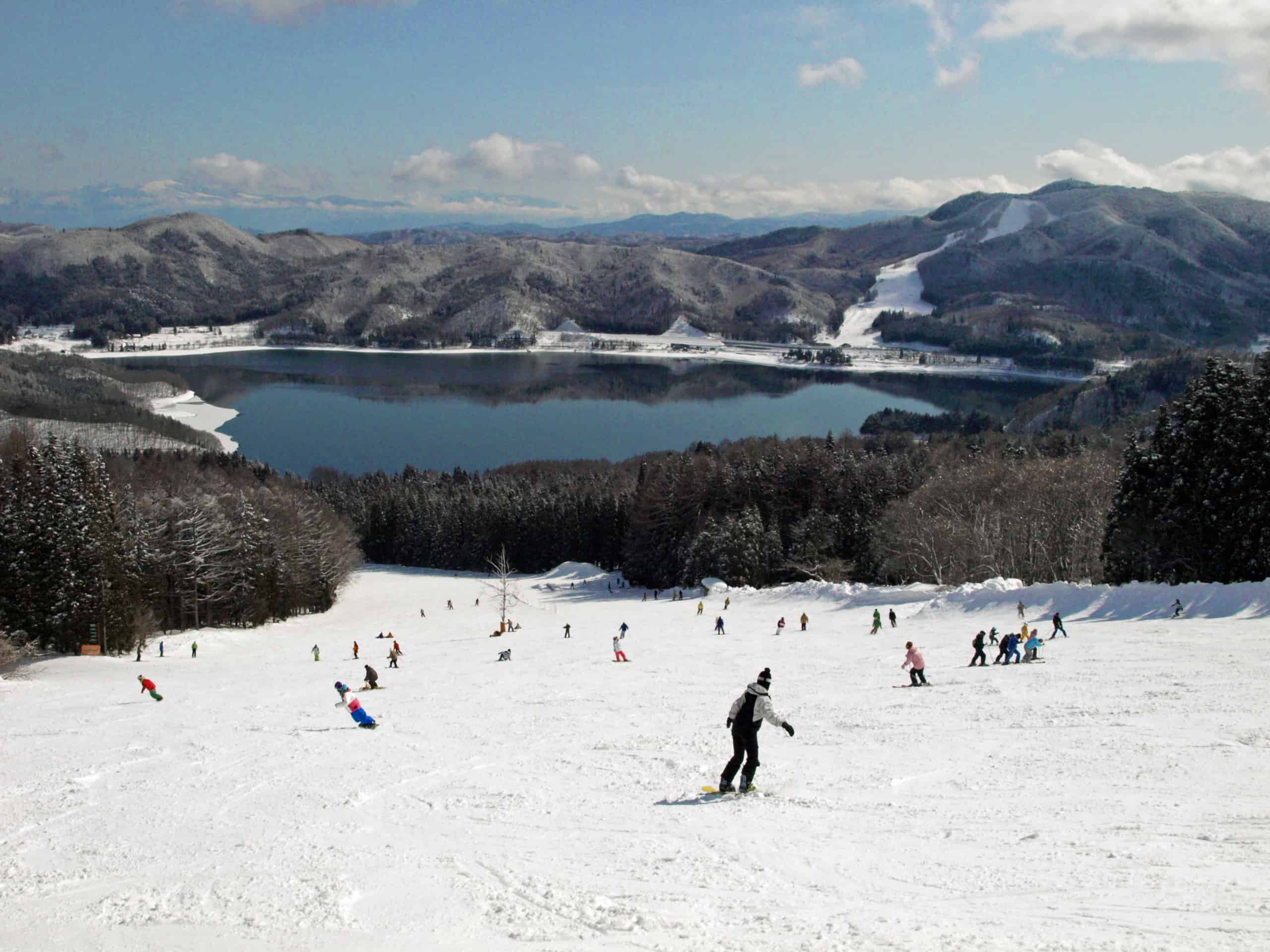
Hakuba Valley, located in Nagano Prefecture, offers a diverse skiing experience suitable for skiers of all abilities, from beginners to experts. The valley has several popular ski resorts, such as Happo-One Snow Resort and Tsugaike, each with its special features and beautiful views. Skiers can glide down the slopes and enjoy the amazing views of the nearby mountains, adding a special charm to skiing in Hakuba Valley.
Table: Hakuba Valley Ski Resorts
Japan’s ski season typically runs from December to April, with peak season in January and February. Both Niseko and Hakuba Valley offer a wide range of winter sports activities, including skiing, snowboarding, and snowshoeing. With their unparalleled skiing conditions and stunning views, Niseko and Hakuba Valley are must-visit destinations for winter sports enthusiasts.

Japan is famous for its hot springs, or onsens, which are a great way to warm up after a day of winter activities. Onsens are known for their warm and calming environments, providing a refreshing break from the winter cold. There are two types of onsens to choose from: private onsens and sento bathhouses.
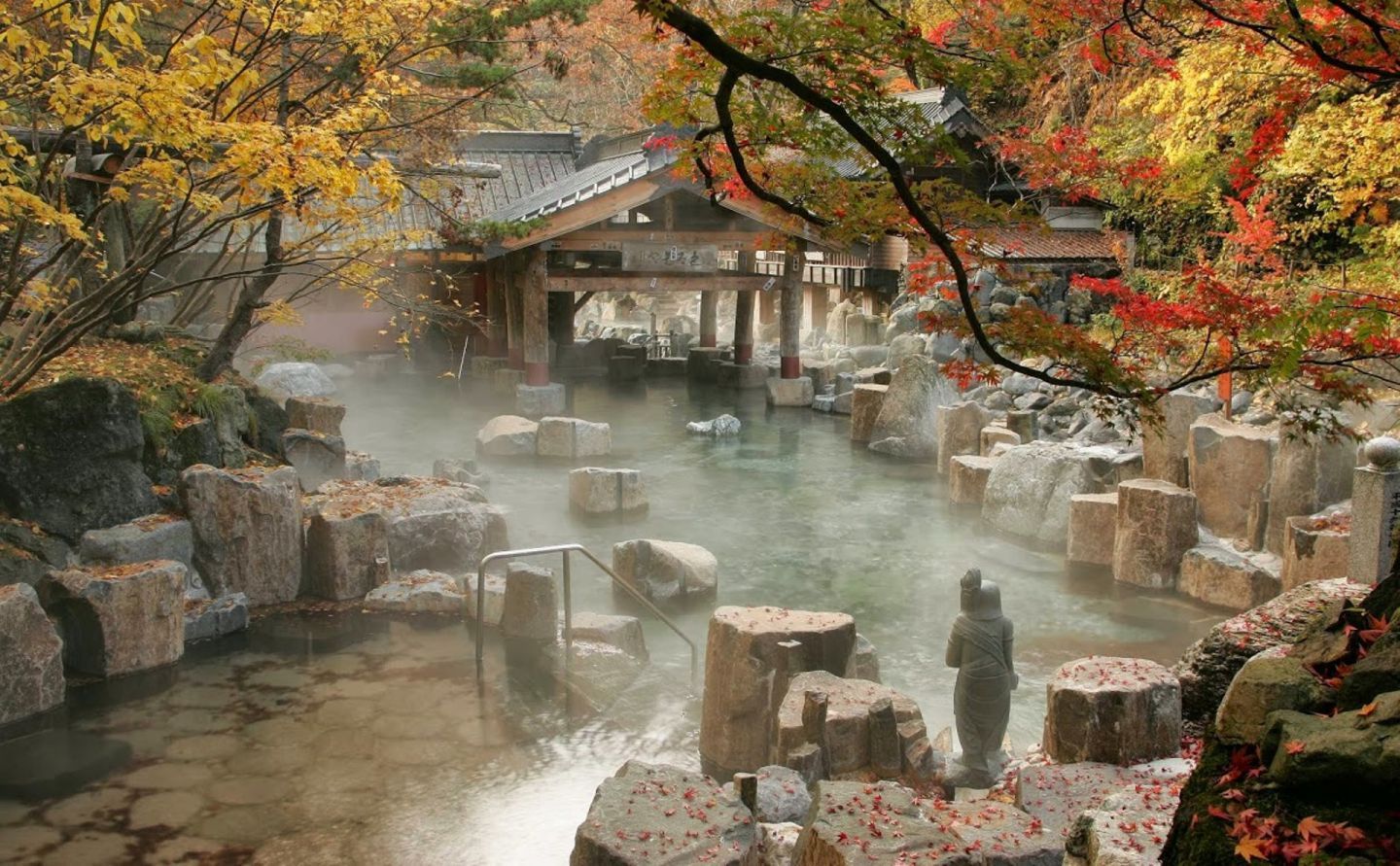
Private onsens offer an intimate natural hot springs experience. They are perfect for those seeking solitude or a romantic getaway. Picture yourself alone in a hot spring bath surrounded by beautiful winter scenery. Private onsen resorts often have many amenities, including electric kettles and tea sets in rooms, along with public and smaller private baths. They offer luxury and a close experience with nature.
Some of the most popular private onsen destinations in Japan include Zao Onsen, Ginzan Onsen, and Nozawa Onsen. Zao Onsen is famous for its outdoor hot springs, which offer stunning views of the surrounding snow-covered landscape. Ginzan Onsen is located in a picturesque town with traditional Japanese architecture, while Nozawa Onsen is known for its large variety of hot springs.
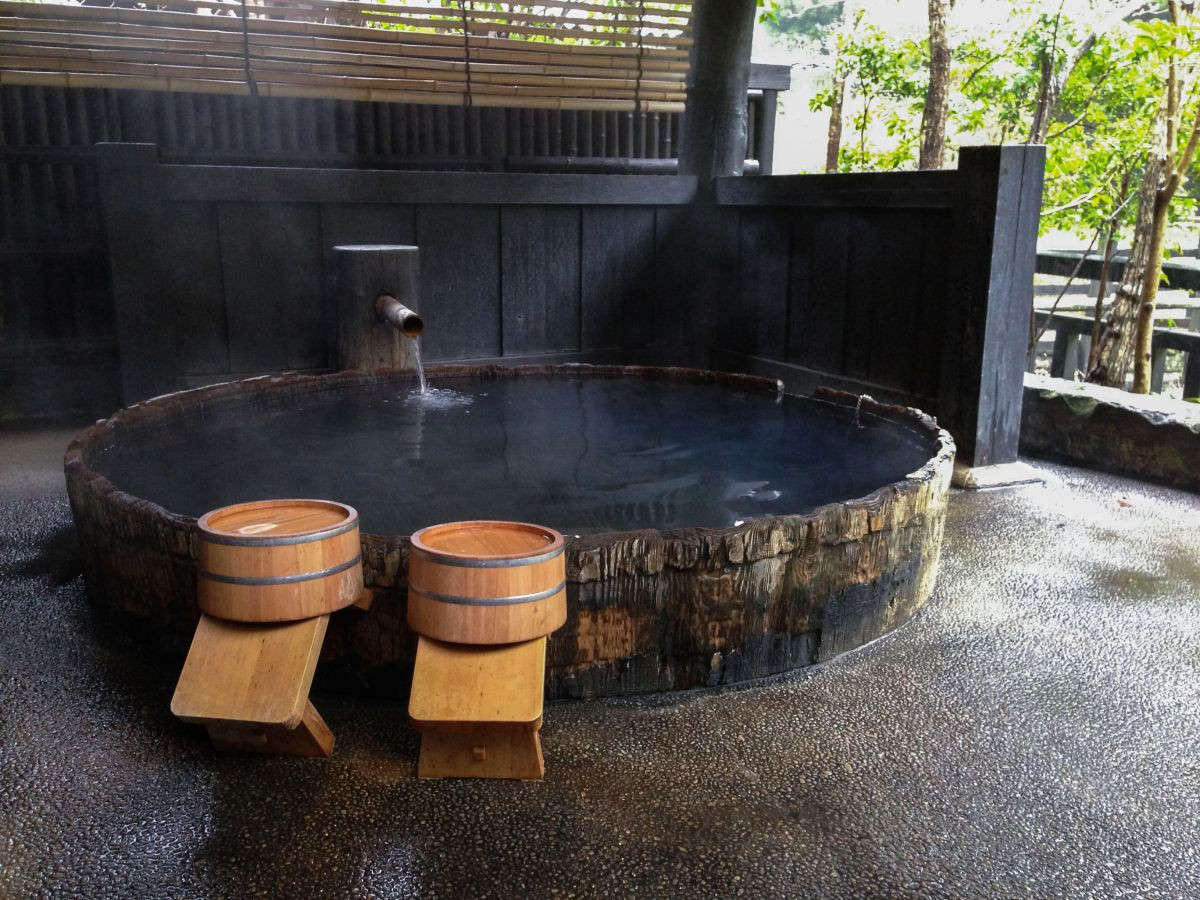
In contrast to private onsens, sento bathhouses offer a communal bathing experience. Sento bathhouses are traditional in Japan and are places where locals meet, chat, and unwind. A visit to a sento is more than just bathing; it’s a way to experience the friendly social atmosphere of Japan. In a sento, you soak in warm waters and enjoy the company of others.
Some of the most popular sento bathhouses in Japan include the Kinosaki Onsen, which has seven public bathhouses, each with its own unique style, and the Oedo Onsen Monogatari, which is a theme park-style bathhouse in Tokyo.
In conclusion, Japan’s hot springs offer a variety of experiences to suit any traveler’s preferences. Whether you prefer a private onsen escape or the social warmth of a sento bathhouse, Japan’s onsens are sure to leave you feeling rejuvenated and relaxed.
Japan’s winter is not only about snowy landscapes and hot springs, but it is also a time of vibrant cultural celebrations. Among the cultural celebrations, Japan’s winter festivals are an impressive display of Japanese culture. The Sapporo Snow Festival and winter illuminations are two of the most popular winter festivals in Japan.
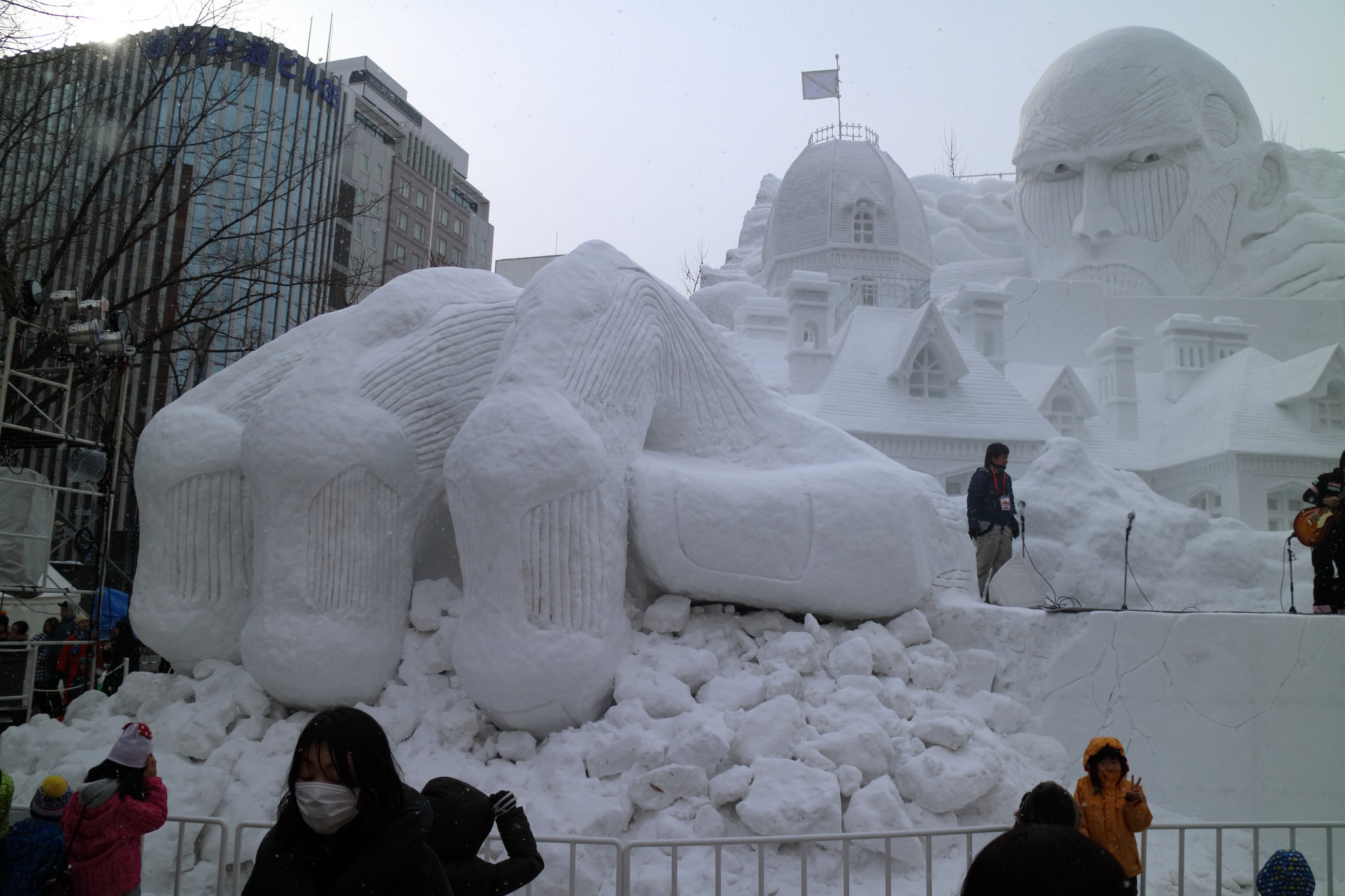
The Sapporo Snow Festival is held annually in Hokkaido’s capital city and is a grand celebration of winter’s beauty. The festival started in 1950 as a creative project by local students, and now it is a huge event that attracts people from all over the world. The festival offers a variety of attractions across three sites: Odori, Susukino, and Tsudome. Visitors can enjoy amazing snow and ice sculptures, thrilling slides, and snow rafting. The sculptures’ craftsmanship is breathtaking, and visitors can participate in snow activities or enjoy the local food. The Sapporo Snow Festival is an unforgettable part of any Japanese winter itinerary.
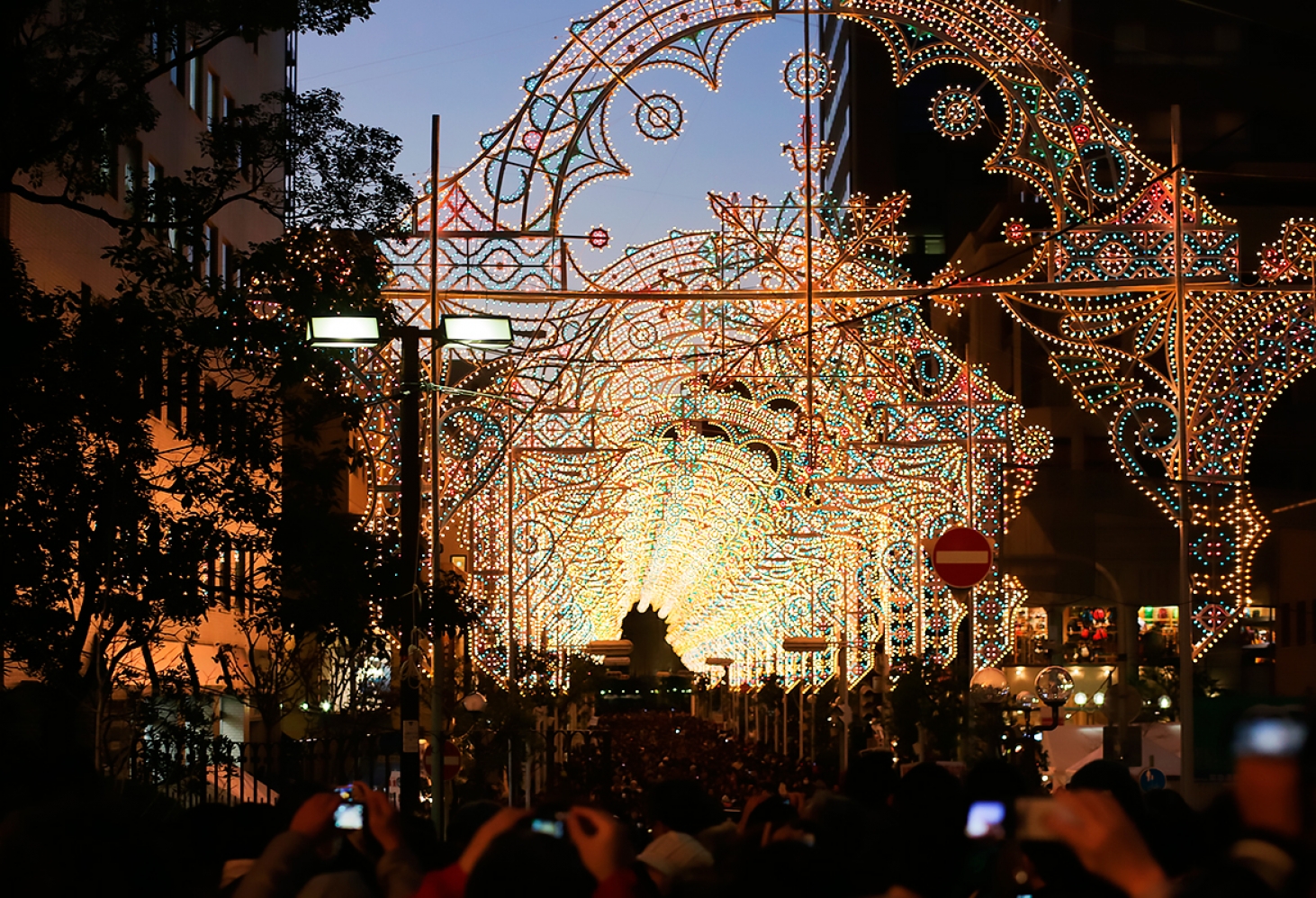
As night falls, cities across Japan come alive with stunning winter illuminations. These bright light displays turn parks, buildings, and streets into enchanting scenes that look like a fairy tale. Among these illuminations, the Kobe Luminarie stands out. The Kobe Luminarie takes place every December and represents hope while honoring the victims of the 1995 Great Hanshin earthquake. Walking under the beautiful lights, visitors can feel deep respect for the resilience and spirit of the Japanese people.
Other winter festivals in Japan include the Asahikawa Winter Festival, Yokote Kamakura Festival, and many snow festivals that take place in various parts of Japan. These festivals are an excellent way to experience Japanese culture and enjoy the New Year holidays.
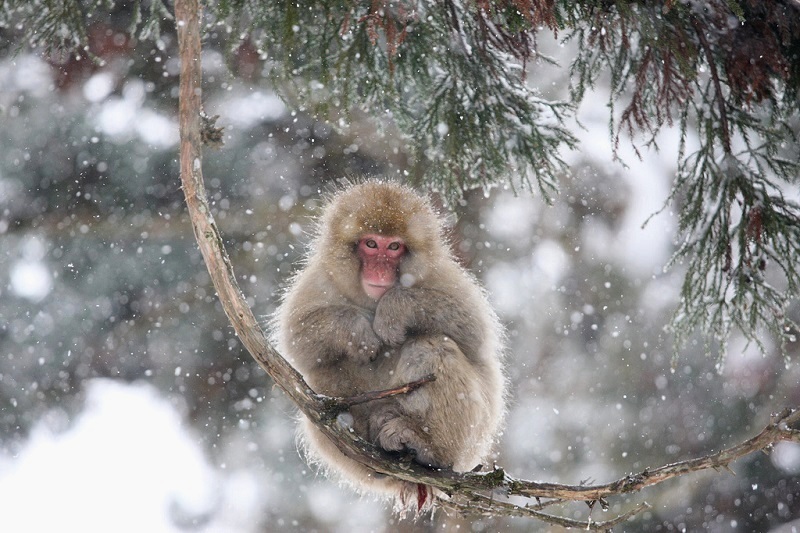
Japan’s winter is not only known for its scenic landscapes and cultural events, but also for its unique wildlife. One of the most famous wildlife encounters in Japan is at the Jigokudani Monkey Park, where visitors can observe Japan’s famous snow monkeys in their natural habitat. These Japanese macaques are known for their habit of bathing in natural hot springs during the winter to stay warm in Nagano’s cold climate. Watching these wild monkeys bask in the hot springs surrounded by the beautiful winter landscape is a heartwarming experience. Visitors can also witness the monkeys’ faces turn red from the warm water and cold air, adding a touch of wild charm to the Japanese winter. If the monkey park is not of interest, visitors can check out one of Japan’s many zoos.
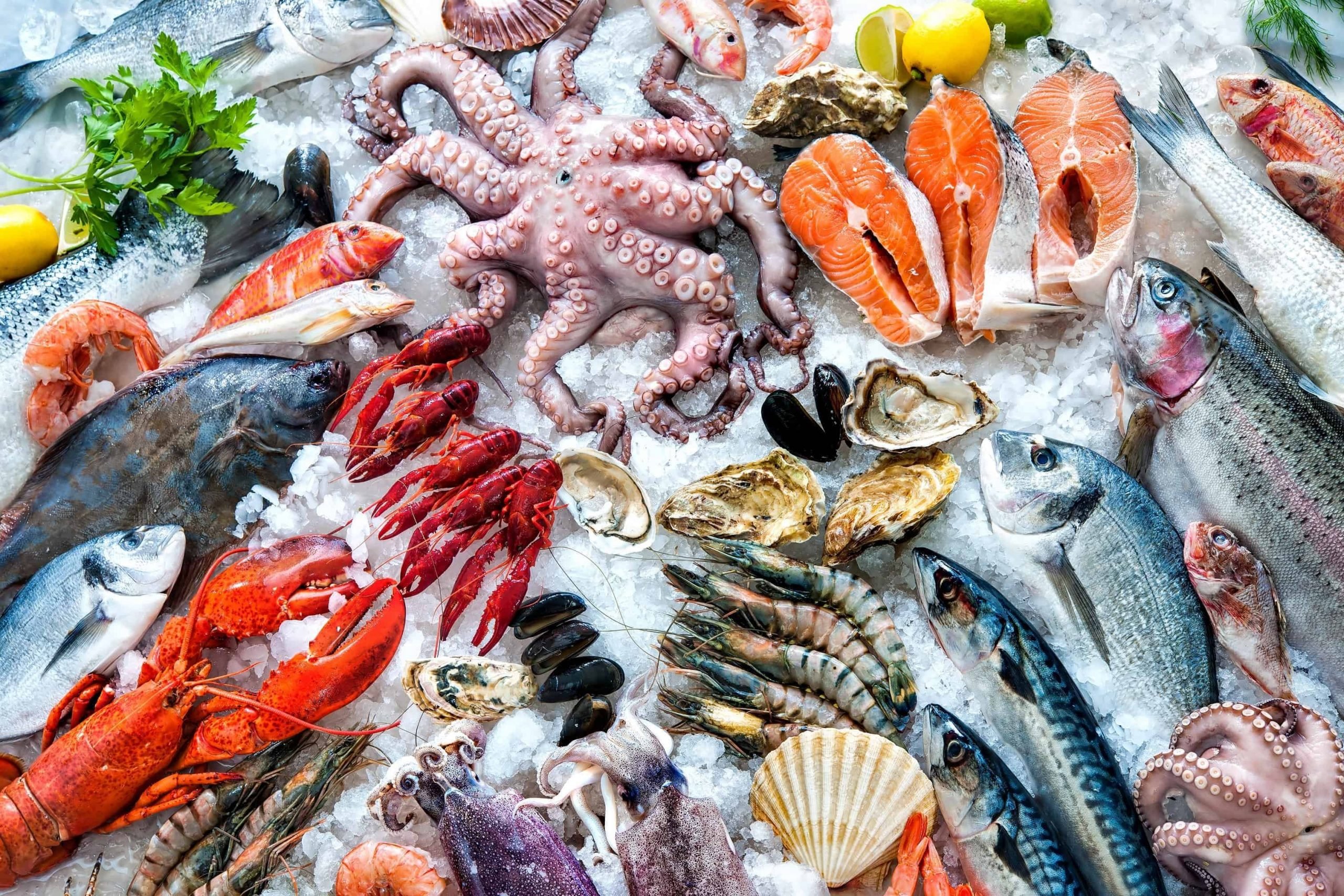
Japanese cuisine is renowned for its seasonal ingredients, and winter is no exception. The winter season in Japan offers a plethora of fresh seafood and comforting dishes that are full of flavor.
During winter, many fish and shellfish are at their peak, providing fresh and flavorful tastes. Sashimi, sushi, and grilled fish are some of the popular seafood dishes that are available during the winter season. Local markets such as Omicho in Kanazawa and Tottori Kara in Tottori are great places to try winter seafood.
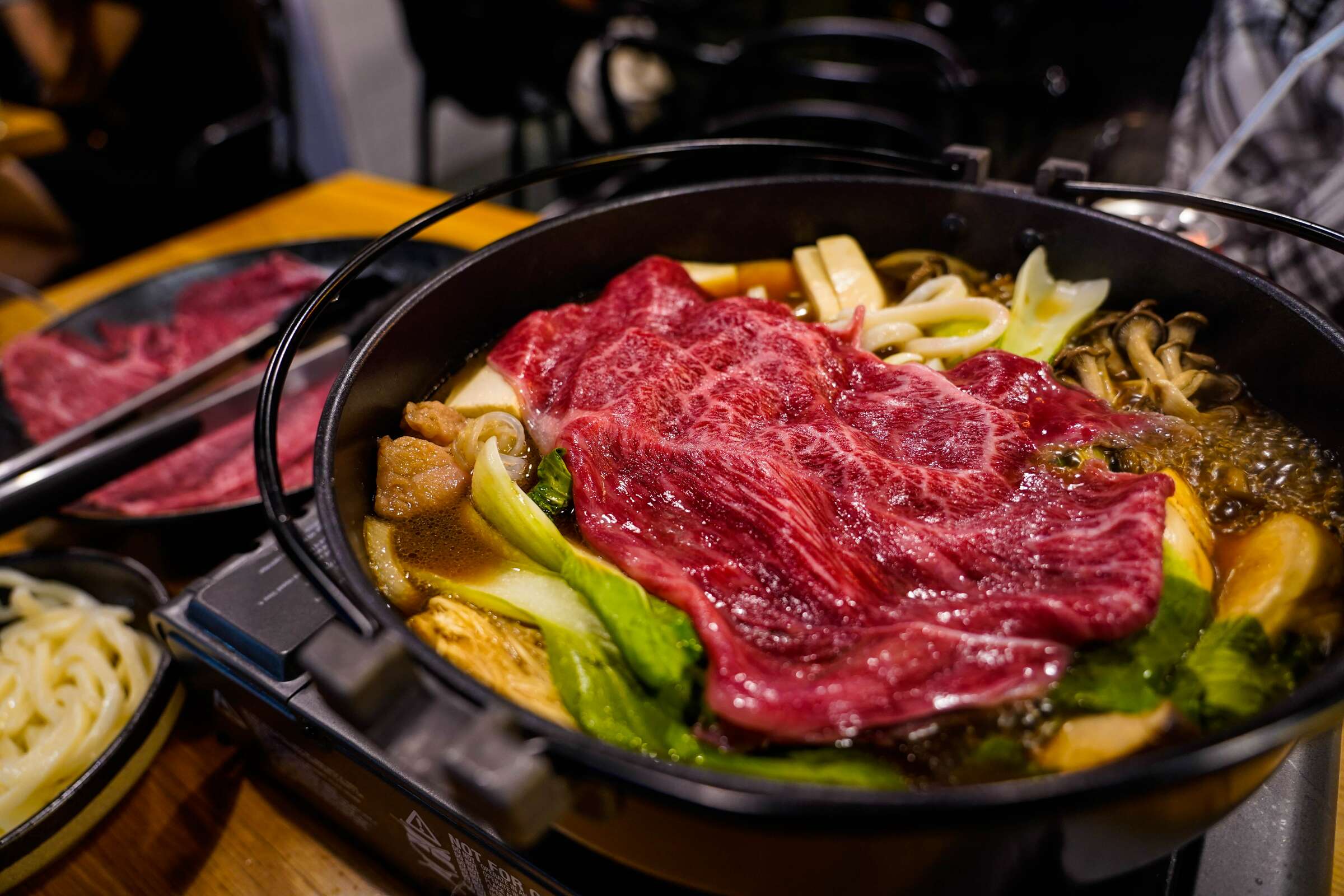
Japanese winter cuisine also offers comforting dishes that are perfect for the chilly weather. Sukiyaki, a savory hot pot, and oden, a hearty stew, are popular dishes that warm and comfort both body and soul. Izakaya restaurants are great places to try these dishes, along with other comfort foods such as ramen and nabe.
In conclusion, winter in Japan is not just about snowscapes and hot springs; it also offers a variety of flavorful dishes that are sure to delight any food lover.
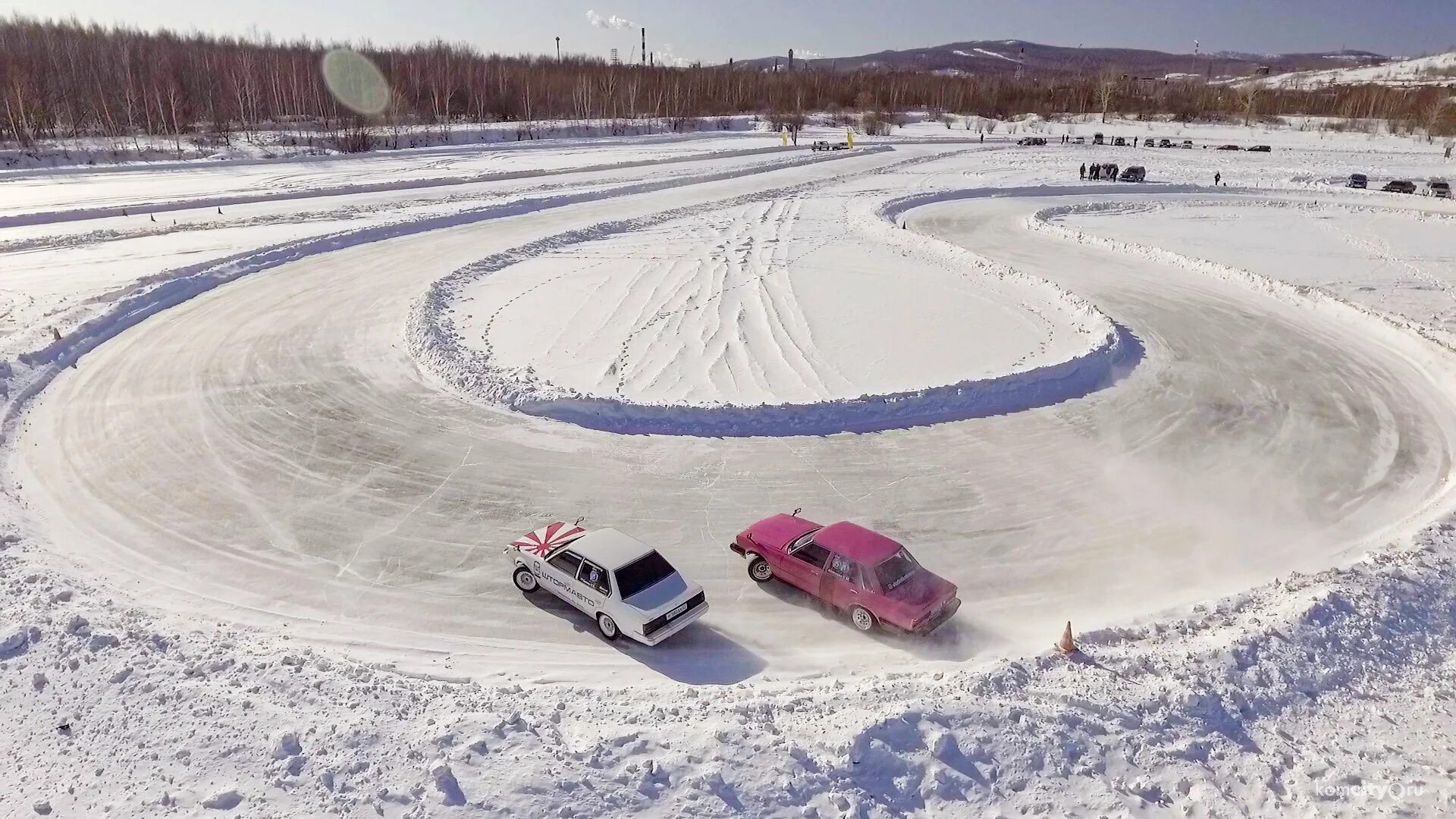
Hokkaido offers a unique experience of walking on a vast, frozen sea with ice stretching to the horizon. It is a chance to see northern Japan’s stark, beautiful winter. Drift ice adventures in Hokkaido can be experienced through walking tours or scenic boat cruises. The beauty of drift ice can be experienced while exploring the ice, and one may see Steller’s Sea Eagles and other wildlife. This makes the adventure even more exciting. Asahikawa is a popular starting point for drift ice tours in Hokkaido.
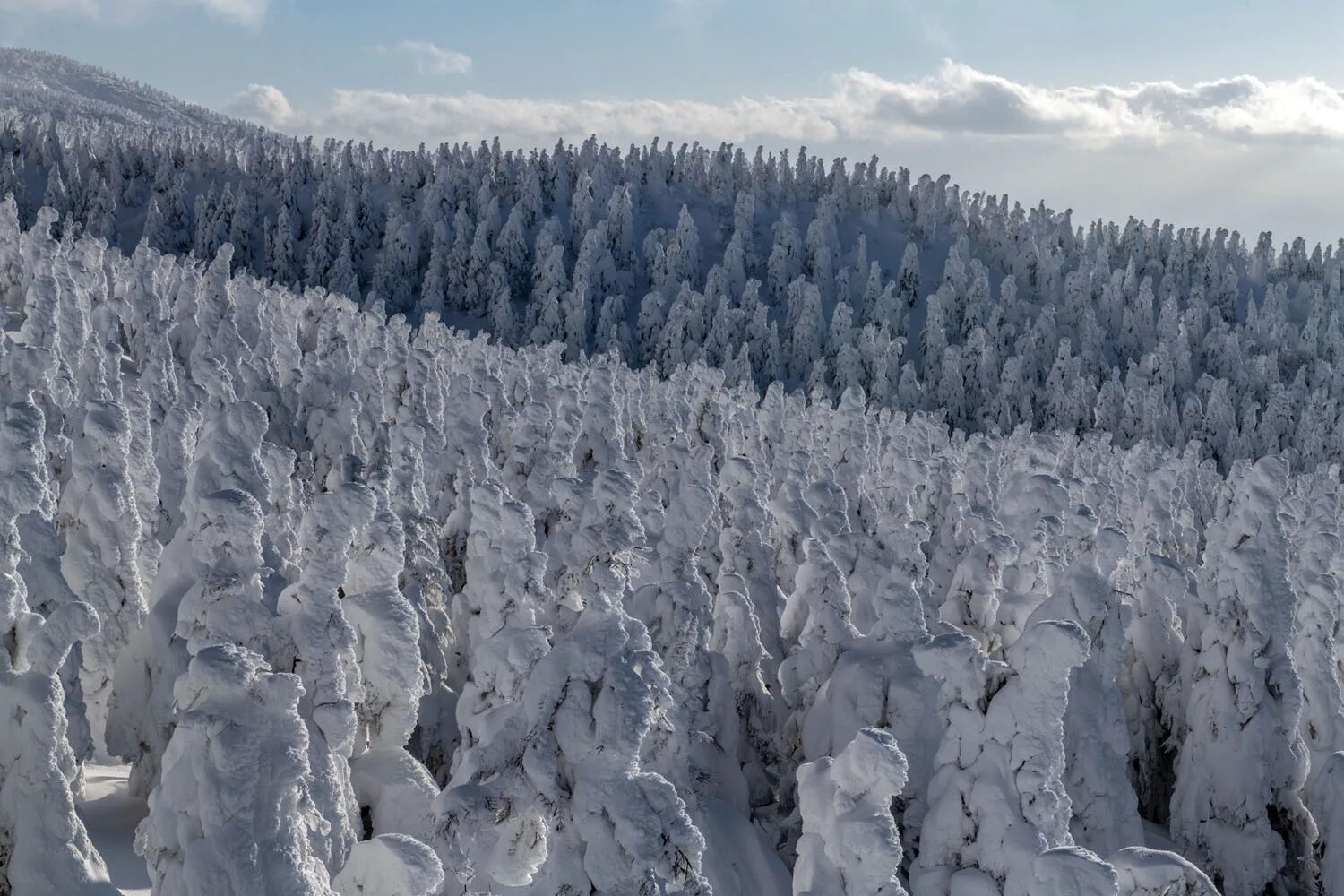
Zao in Yamagata prefecture is known for its heavy snow and strong winds that shape the trees into eerie figures called snow monsters, also known as juhyo. These snow monsters are unique to winter and make the landscape look like it’s from a fantasy novel. Viewers can see the snow monsters from a distance or up close, which adds intrigue to Japan’s enchanting winter landscape. The mystical snow monsters of Zao can be accessed through a ropeway ride, followed by a short hike. Visitors can also enjoy skiing and snowboarding in the Zao area. The blue pond, located in the same area, adds to the beauty of the winter landscape.
In conclusion, Japan offers unique snow experiences beyond skiing. Drift ice adventures in Hokkaido and the mystical snow monsters of Zao are two such experiences that offer a glimpse into Japan’s enchanting winter landscape.
When planning a winter trip to Japan, it is important to choose the right time to visit. The winter season officially starts in December and ends in February, with peak snowfall usually occurring from mid-January to late February. For those interested in skiing or snowboarding, it is recommended to aim for the peak snowfall period. Visitors hoping to experience the winter festivals should check the dates of the events to ensure they don’t miss out. If visiting the snow monkeys or exploring the snow monsters of Zao is on the itinerary, it is best to plan the visit between December and February.
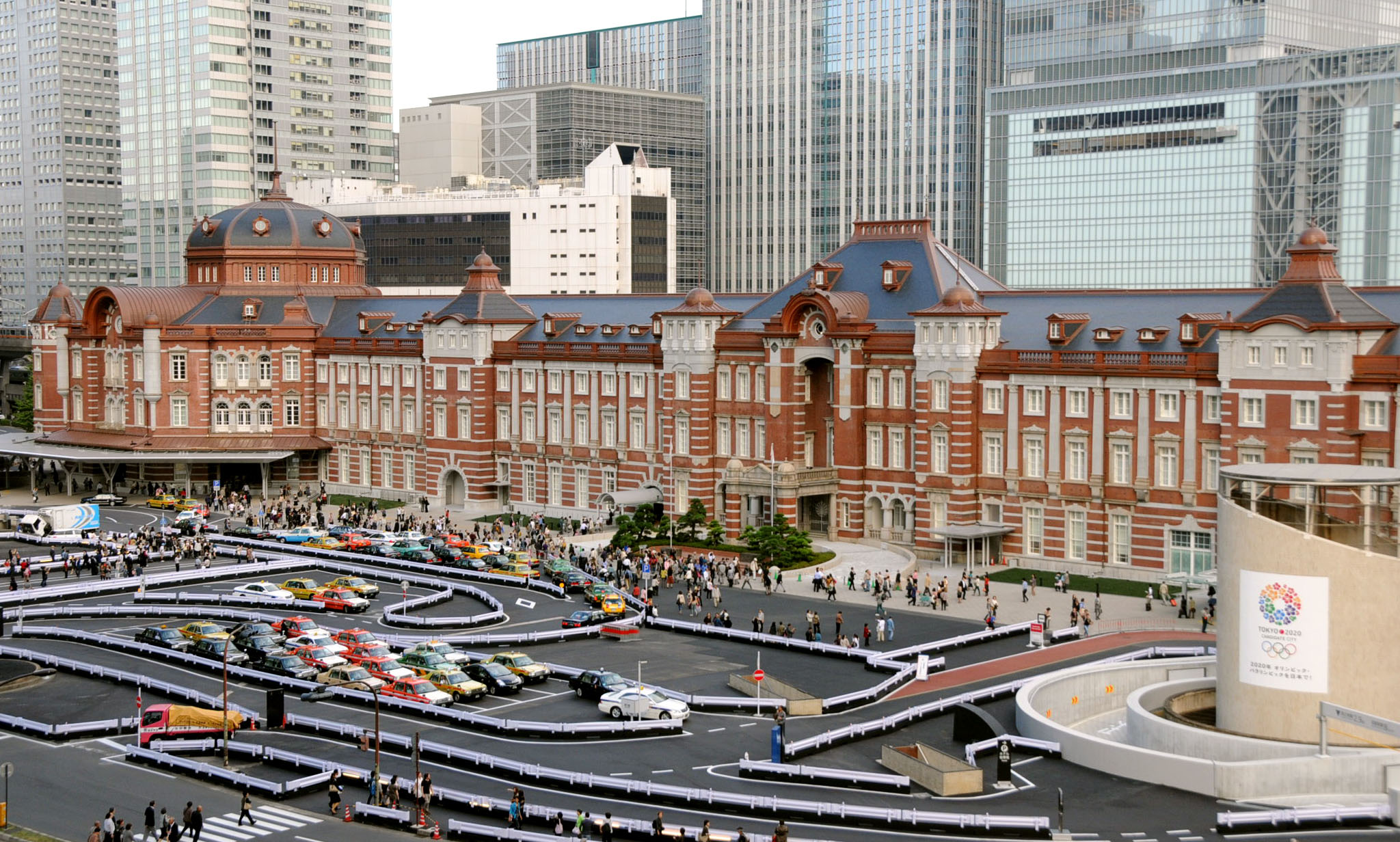
To start the trip, visitors can arrive at Tokyo Station. It is essential to stay warm and comfortable during the winter trip to Japan. There are many accommodation choices available, from traditional ryokans to modern hotels. For a traditional experience, visitors can stay in a ryokan, which offers tatami-matted rooms and communal baths. For those who prefer modern amenities, many hotels provide comfort, convenience, great views, delicious food, and hot springs.
Timing the winter trip to Japan is crucial to ensure visitors can experience everything they want to see and do. The peak snowfall period is ideal for skiing or snowboarding. Visitors interested in seeing the snow monkeys or the snow monsters of Zao should plan their visit between December and February. Winter festivals are also a popular attraction during this time, and visitors should check the dates of the events to avoid missing out.
Finding the perfect place to stay is just as important as scheduling the trip. To stay warm and comfortable during the winter trip, visitors can choose from various accommodation choices. Ryokans offer a traditional experience, with tatami-matted rooms and communal baths. For those who prefer modern amenities, many hotels provide comfort, convenience, great views, delicious food, and hot springs. Visitors should choose the type of accommodation that suits their preferences and budget.
Japan’s winter weather can be challenging, with heavy snowfall and icy conditions in many regions. However, tourists can still enjoy their visit to the fullest with the right clothing and safety measures. This section provides a guide on how to navigate Japan’s winter weather, including what to wear and how to travel safely.
Wearing the right clothes is crucial for staying comfortable in Japan’s winter climate. Layering is essential, with materials like wool, down, fleece, and thermal fabrics providing the best insulation. Tourists should consider packing thermal underwear, a warm hat, gloves, and a scarf to keep themselves warm.
Footwear is also important. Waterproof hiking shoes offer the best protection against cold and wet conditions. Thick socks are also recommended for warmth and comfort. Additionally, tourists should pack hand and feet warmers, which can be found in most convenience stores in Japan.
It is important to note that indoor heating in Japan is not as common as in other countries, so tourists should also consider wearing layers indoors to stay warm and comfortable.
Being careful and well-prepared is key to safe travel in snowy and icy conditions. With the heavy winter snowfall in Japan, it’s important to stay safe while enjoying the winter landscapes.
Whether driving or walking, tourists should be aware of the conditions and navigate with care. It is recommended to wear shoes with a good grip to prevent slips and maintain a safe distance from other vehicles to prevent accidents on icy roads.
Tourists should also be aware that crowds in Tokyo and Osaka can make walking on snowy or icy sidewalks more difficult. It is important to be patient and take extra care when navigating through crowded areas.
Remember, safety is of utmost importance when enjoying Japan’s winter wonderland. By following these winter apparel and travel safety tips, tourists can have a safe and enjoyable winter experience in Japan.
Winter in Japan can be a good time to visit, especially in December when the weather is cool and the country is less crowded. However, visitors should be prepared for colder temperatures and the possibility of snow in some regions.
Japan is generally less expensive in winter, except during the New Year holidays, which is a peak travel season. Visitors can save money on their trip by taking advantage of off-peak prices and discounts.
Winter in Japan typically lasts from December to February. While temperatures vary by region, it is the perfect season to enjoy hot springs and beautiful winter scenery. Visitors should pack warm clothes and be prepared for colder temperatures in the northern regions.
I've been living in Japan for over 10 years. I tell you about all the pros and cons of life through the eyes of a foreigner.


- Meet The Team
Visiting Japan in the Winter – The Ultimate Itinerary
Updated on May 13, 2024
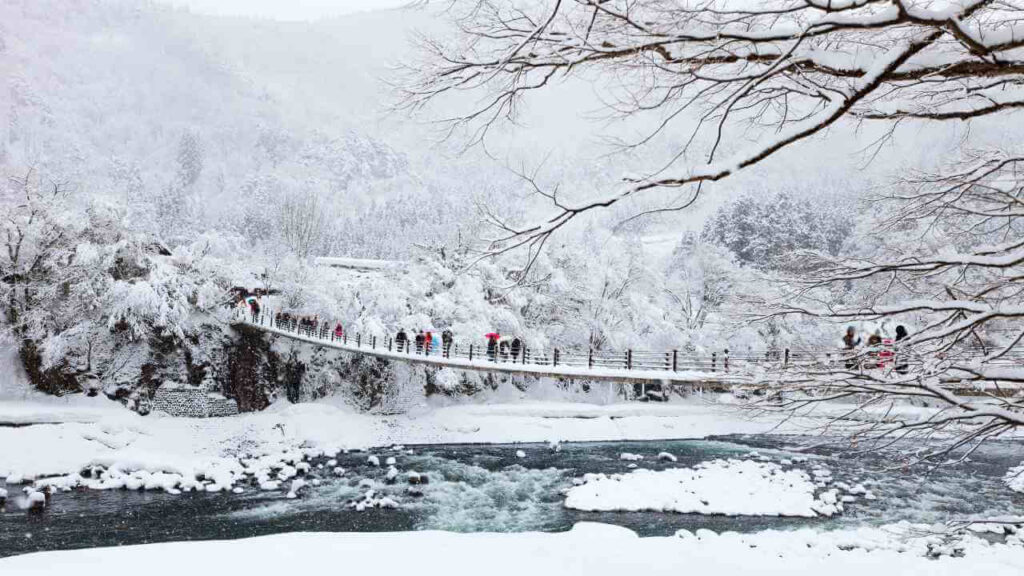
Are you set to uncover the “Japan in the Winter” allure?
Strap on your skis, dip into steaming onsens, and witness luminescent festivals.
This article takes you to “Japan in the Winter”.
It showcases the essential activities and sights for your cold-weather excursion.
- The Magic of Kyoto's Winter Gardens
Hakuba Valley: Skiing Amidst Majestic Views
The social warmth of sento, illuminations that light up the night, warm up with hearty japanese comfort foods, mystical snow monsters of zao, staying cozy: accommodation choices, travel safe: coping with snow and ice, key information.
Winter in Japan is a time of abundant snowfall.
It brings unique experiences and transforms the country into a picturesque wonderland.
From the UNESCO World Heritage sites in Mie Prefecture to the snow-covered slopes of Hakuba Ski Resort, the season offers something for everyone.
The holiday season starts in early December.
It is the perfect time to explore traditional Japanese inns in onsen towns like Nozawa Onsen and Noboribetsu Onsen.
These places, known for their hot water and Japanese hot springs , provide a warm escape from the chilly winter temperatures.
Tokyo Station has become a hub for those seeking the best ways to travel to popular destinations.

With the JR Pass in hand, convenience stores are at every corner.
Fewer crowds make navigating parts of Japan easier, like Akita Prefecture or Shiga Kogen.
Early January is ideal for attending Japan’s most popular winter events.
For example, you can visit the Yokote Kamakura Festival and admire snow sculptures.
You can also partake in outdoor activities like ice skating.
In Odori Park, the light-up event near Mt Fuji is a spectacle, especially during the snow season when thick snow blankets the area.

Niseko’s ski resorts, like Annupuri and Hanazono, are well-known for their outstanding powder snow.
After a day of skiing or snowboarding, enjoy the vibrant après-ski scene.
Here, you can unwind with craft beers and rare whiskies.
Unlike Niseko, Hakuba Valley in Nagano Prefecture provides a varied skiing experience.
Hakuba Valley is famous for its many ski resorts.
It is suitable for skiers of all abilities, from beginners to experts.
The valley has several popular ski resorts, such as Happo-One Snow Resort and Tsugaike .
Each one has its special features and beautiful views.
Gliding down the slopes, you will see amazing views of the nearby mountains.
This adds a special charm to skiing in Hakuba Valley.

Private onsen resorts often have many amenities.
These include electric kettles and tea sets in rooms, along with public and smaller private baths.
A private onsen is perfect for relaxing after winter activities or enjoying alone time.
It offers luxury and a close experience with nature.
In contrast to the private onsens, sento bathhouses offer a communal bathing experience.
Sento bathhouses, traditional in Japan, are places where locals meet, chat, and unwind.
A visit to a sento is more than bathing.
It’s a way to experience the friendly social atmosphere of Japan.
In a sento, you soak in warm waters.
Cultural Celebrations: Winter Festivals in Japan
Japan’s winter is not just about snowy landscapes and hot springs.
It’s also a time of vibrant cultural celebrations.
Japan’s winter festivals are an impressive display.
The ice sculptures at the Sapporo Snow Festival are breathtaking.
Sapporo Snow Festival
The Sapporo Snow Festival, held annually in Hokkaido’s capital city, is a grand celebration of winter’s beauty.
In 1950, local students started a creative project.
Now, it’s a huge event.
People from all over the world come to see it.

The festival offers a variety of attractions across three sites.
Visitors can enjoy amazing snow and ice sculptures, thrilling slides, and snow rafting.
You can marvel at the sculptures’ craftsmanship, participate in snow activities, or enjoy the local food .
The Sapporo Snow Festival is an unforgettable part of any Japanese winter itinerary.
As night falls, cities across Japan come alive with stunning winter illuminations.
These bright light displays turn parks, buildings, and streets into enchanting scenes that look like a fairy tale.
Among these, the Kobe Luminarie stands out.

These dishes warm and comfort both body and soul.
Eating these dishes lets you enjoy the flavours of winter.
Unique Snow Experiences
Japan’s winter wonderland offers lots of unique snow experiences beyond skiing.
Drift Ice Adventures in Hokkaido
Picture yourself standing on a vast, frozen sea, with ice stretching to the horizon. This is the thrill of a drift-ice adventure in Hokkaido.

It’s a chance to see northern Japan’s stark, beautiful winter.
Walking tours or scenic boat cruises allow you to experience the beauty of drift ice.
While exploring the ice, you may see Steller’s Sea Eagles and other wildlife.
This makes the adventure even more exciting.
From the frozen seascape of Hokkaido, we journey to the snow-covered slopes of Zao in Yamagata prefecture .
In Zao, heavy snow and strong winds shape the trees into eerie figures called snow monsters.

The snow monsters, unique to winter, make the landscape look like it’s from a fantasy novel.
Viewing the snow monsters from a distance or up close adds intrigue to Japan’s enchanting winter landscape.
Planning Your Perfect Winter Itinerary
With so much to see and do, planning your winter itinerary is key to enjoying a fulfilling visit to Japan.
When Winter Lasts: Timing Your Visit
Choosing the right time for your winter trip to Japan is essential to your planning process.
The country’s winter season officially starts in December and ends in February .

- Things to Do
- Food & Drink
- Shopping & Style
- Coca-Cola Foodmarks
- Restaurants & Cafes
- Music & Nightlife
- Neighborhoods
- Los Angeles

12 most beautiful winter destinations in Japan
From snowy mountains to a white onsen town, there are plenty of places to make the most of the chilly season

Sure, Japan is popular for spring cherry blossoms and colourful autumn foliage, but don’t pass up the winter season. Come the cooler months, Japan has many magical spots boasting some of the country’s best scenery.
Whether you prefer to spend your time at a sprawling ski resort , a snowy onsen town or to catch a stunning ice festival, there’s so much to see when the weather cools down. And don’t worry about the cold – you can always warm up after an outdoor excursion by dipping into a hot spring or slurping up a hearty bowl of ramen. If you’re looking for a new place to explore this winter, add these gorgeous destinations to your itinerary. RECOMMENDED: The best hot spring getaways in Japan
Japan's winter wonderlands

Zao Snow Monsters, Yamagata
The Zao Hot Springs Ski Resort is home to these chilling ice monsters otherwise known as juhyo . These natural formations are actually evergreen trees that become enveloped with snow and make for a stunning winter sight. For the ice monsters to appear, specific climate conditions have to be met, meaning there’s only a limited number of places and times that you can see this natural phenomenon.

Shirakawa-go, Gifu
The immaculately preserved Japanese village of Shirakawa-go is a sight to behold during the winter. Also designated as a Unesco World Heritage Site, the village is made up of numerous gassho-zukuri thatched-roof farmhouses that have been converted into hotels, restaurants and museums. The houses are designed to withstand heavy snowfall and make for a whimsical sight when covered in fresh snow.

Kamakura Snow Hut Village, Nagano
This magical igloo village in Nagano is actually a restaurant , and opens every winter. Restaurant Kamakura Village is made up of 20 pop-up igloos nestled in the snowy Japanese Alps in the small town of Iiyama. Each igloo fits up to four people and you'll be treated to a noroshi nabe, a tasty local hot pot made with miso, pork and local veggies. The snowy restaurant will return this winter from January 20 to February 29 2024.

Yunishigawa Onsen, Tochigi
This magical winter wonderland can be found at the Yunishigawa Kamakura Festival in Tochigi prefecture. The snowy festival takes place annually from late January to early March and showcases hundreds of illuminated mini snow huts known as kamakura . You can stroll through the kamakura, which are set up around the Sawaguchi riverbed at Yunishigawa Onsen. This year the festival is scheduled to be held from January 26 to February 25 2024.

Jigokudani Monkey Park, Nagano
Head to this park to meet the Japanese macaques, better known as snow monkeys, who lounge around in its steamy hot spring waters. You’ll find this winter retreat inside Joshinetsu Kogen National Park in Nagano prefecture. The monkeys often bathe in the onsen year round, but if you’d like to catch them with snowy surrounds, head up to the park between January and February.

Nabana no Sato Illuminations, Mie
This festival may not be snow-related, but the light-up at Nabana no Sato is one of the best winter illuminations in Japan . This botanical garden on the small island of Nagashima in Mie prefecture turns into a brilliant display of winter lights, showcasing millions of sparking LEDs forming iridescent rivers, waterfalls and more. The illumination continues all the way through to May, so there’s plenty of time to stop by and see it.

Sapporo Snow Festival, Hokkaido
Every February, Sapporo turns into a winter fairytale land during its annual Snow Festival . The festival first started back in 1950, when students began building snow statues in Odori Park, and has since become a full-blown week-long event with extravagant ice sculptures taking over the park, the grounds of Tsudome community dome and the city’s Susukino district. For this winter, the festival returns from February 4 to 11 2024.

Otaru, Hokkaido
Hokkaido’s port city of Otaru hosts an annual snow festival every February, and it sure is a showstopper. Known as the Otaru Snow Light Path Festival , the city's streets are illuminated with hundreds of lights and snow statues. We particularly love the view of the floating lights along Otaru’s main canal, which runs near the trendy Warehouse District. Hoping to check it out? Mark your calendars for this season’s festival scheduled from February 10 to 17 2024.

Kenrokuen, Ishikawa
Kenrokuen in Ishikawa prefecture is considered one of Japan’s three great gardens. The well-manicured space is a popular spot to visit year-round, but during the winter, it’s particularly special. When snow falls, a blanket of white covers the grounds and turns the landscape into a truly serene space. The garden is often lit up during winter evenings and sometimes mini concerts are even held at the on-site Uchihashi-tei teahouse.

Ginzan Onsen, Yamagata
Once a former silver mine, Ginzan Onsen has since been turned into one of the most picturesque onsen resort towns in all of Japan. As a reminder of the past, it’s name literally means ‘silver mountain hot spring’ and the area features numerous ryokan (traditional Japanese inns), which line the river that runs through the town. Ginzan Onsen really is a stunner in winter when fallen snow collects on the rooftops and streets. Best of all, the town centre is pedestrian-only, so you can meander through this picture-perfect spot at your own pace.

Misotsuchi Icicles, Saitama
Heading up to see the Misotsuchi Icicles in Chichibu makes for an ideal day trip from Tokyo. Best seen in January and February, this natural phenomenon is the result of spring water from the Arakawa River being frozen to the surface of rocks. The icicles are also worth a visit in the evening as they are lit up in different colours to add to the mystical atmosphere.

Tateyama Kurobe Alpine Route, Toyama
This spectacular route through the Japanese alps stretches from Toyama all the way to Nagano prefecture and offers some pretty impressive scenery. Most notable is the staggering snow corridor, where the buildup of snow can reach as high as 20 metres. Due to the danger of collapse, the snow corridor is only open from spring onwards, but you could fool anyone into thinking its winter with a few photos from this spot.
More from Time Out Tokyo

The most beautiful places in Japan
See the real Japan in the peaceful rolling hills of Hokkaido, a Nagano nature reserve dotted with volcanoes, and more

6 best onsen destinations in Japan
Warm up as well as rejuvenate your body and mind at these scenic hot spring resorts, easily accessible from Tokyo

The best national parks in Japan
- Things to do
[image] [title]
Discover Time Out original video
By entering your email address you agree to our Terms of Use and Privacy Policy and consent to receive emails from Time Out about news, events, offers and partner promotions.
🙌 Awesome, you're subscribed!
Thanks for subscribing! Look out for your first newsletter in your inbox soon!
- Terms of use
- Work for Time Out
- Time Out Group
- Advertising
- Modern slavery statement
- Manage cookies
Time Out Tokyo
- Magazine subscription
- Digital edition
- Buy the guide to Tokyo
Time Out products
- Time Out Worldwide
We use cookies on this site to enhance your user experience. If you continue to browse you accept the use of cookies on our site. See our Cookie Policy for more information.
- Media & Industry
- Meetings & Events
- Muslim Guide
- Travel Trade
- Select Language 简体中文 繁體中文(香港) 繁體中文(臺灣) India (English) Bahasa Indonesia 한국어 ภาษาไทย Tiếng Việt Singapore (English) Philippines (English) Malaysia (English) Australia/New Zealand (English) Français Deutsch Italiano Español United Kingdom (English) Nordic countries(English) Canada (English) Canada (Français) United States (English) Mexico (español) Português العربية Japan(日本語) Global (English)
- India (English)
- Bahasa Indonesia
- Singapore (English)
- Philippines (English)
- Malaysia (English)
- Australia/New Zealand (English)
- United Kingdom (English)
- Nordic countries(English)
- Canada (English)
- Canada (Français)
- United States (English)
- Mexico (español)
- Global (English)
- Fujiyoshida
- Shimonoseki
- Ishigaki Island
- Miyako Island
- Kerama Island
- Tokyo Island
- Koka & Shigaraki
- Hida Takayama
- Ginza, Nihonbashi
- Beppu & Yufuin (Onsen)
- Ginzan Onsen
- Nagasaki Islands

- Kumano Kodo
- Shikoku Karst
- Amami Oshima
- Hachimantai
- Omihachiman
- Aizuwakamatsu

- Diving in Japan
- Skiing in Japan
- Seasonal Flowers in Japan
- Sustainable Outdoors
- Off the Beaten Track in Japan
- Scenic Spots
- World Heritage
- Home Stays & Farm Stays

- Japanese Gardens
- Japanese Crafts
- Temple Stays
- Heritage Stays
- Festivals and Events
- Theater in Japan
- Japanese Tea Ceremony
- Cultural Experiences in Japan
- Culture in Japan

- Local Cuisine Eastern Japan
- Local Cuisine Western Japan
- Local Street Food
- Japan's Local Ekiben
- Japanese Whisky
- Vegetarian and Vegan Guide
- Sushi in Japan Guide
- Japanese Sake Breweries

- Art Museums
- Architecture
- Performing Arts
- Art Festivals
- Japanese Anime and Comics
- Japanese Ceramics
- Local Crafts

- Scenic Night Views
- Natural Wonders
- Theme Parks
- Samurai & Ninja
- Iconic Architecture

- Wellness Travel in Japan
- Japanese Ryokan Guide
- A Guide to Stargazing in Japan
- Relaxation in Japan
- Forest Bathing (Shinrin-yoku)

- Experiences in Japan
- Enjoy my Japan
- National Parks
- Japan's Local Treasures
- Japan Heritage
- Snow Like No Other

- Visa Information
- Getting to Japan
- Airport Access
- COVID-19: Practical Information for Traveling to Japan
- Anime Tourism
- Countryside Stays
- Accessible Tourism
- Hokkaido Great Outdoors
- Scenic World Heritage in Tohoku
- Shikoku’s Nature and Traditions
- Southern Kyushu by Rail

- Traveling by Rail
- How to Travel by Train and Bus
- JR Rail Passes
- Scenic Railways
- Renting a Car
- Sustainable Travel in Japan
- Travel Brochures
- Useful Apps
- Online Reservation Sites
- Eco-friendly Accommodation
- Luxury Accommodations
- Traveling With a Disability
- Hands-free Travel
- How to Book a Certified Tour Guide
- Volunteer Guides
- Tourist Information Center

- Japanese Manners
- Spring in Japan
- Summer in Japan
- Autumn in Japan
- Winter in Japan
- Cherry Blossom Forecast
- Autumn Leaves Forecast

- Japan Visitor Hotline
- Travel Insurance in Japan
- Japan Safe Travel Information
- Accessibility in Japan
- Vegetarian Guide
- Muslim Travelers
- Safety Tips

- All New Stories
- Create Your Joyful Japan
- The Latest Itinerary
- Area Travel Pass
- Travelers Blog
- Western Japan Sample Itinerary
- Tohoku Colors
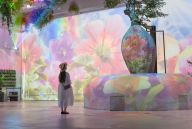
- News from JNTO MY
- News from JNTO & Partners
- Travel Trade News
- Newsletters for Travelers
- Newsletters for Professionals
My Favorites
${v.desc | trunc(25)}
Planning a Trip to Japan?
Share your travel photos with us by hashtagging your images with #visitjapanjp
Explore the History and Culture, and Things to Do in Japan
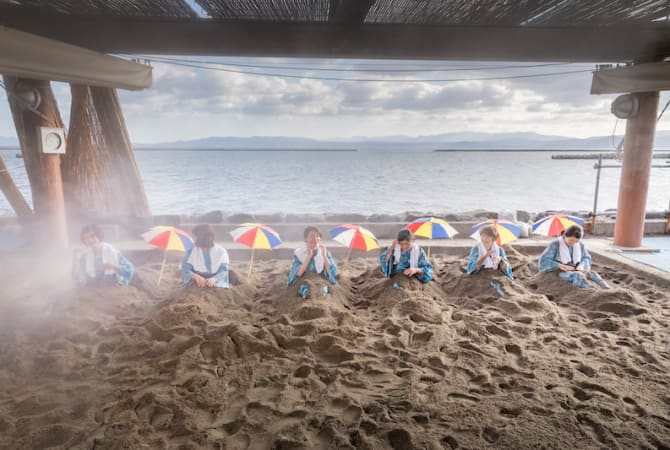
Please Choose Your Language
Browse the JNTO site in one of multiple languages
Immerse Yourself in Art and History: Unveiling Tokyo's Museum at the Imperial Palace - Treasures of the Imperial Family at Sannomaru Shozokan
We use cookies to improve our contents. Check the detail and update your settings here .
We use cookies to improve our services.
For more details, please click here .

- Food & Drink
- Accommodation
- Things To Do
- All the categories
Transportation
- Weather & Seasons
- Long-Term Stay
- Travel Tips
- Event Tickets
- About MATCHA
- Company Profile
- MATCHA Special Features
Visiting Japan in Winter: Weather, Clothing, and Travel Tips 2023-2024

If you are planning to visit Japan in winter, read this article for information on weather, average temperatures and what to wear in the cold months. Recommended winter activities, snow festivals, and other travel tips are also introduced here.
All About Winter in Japan
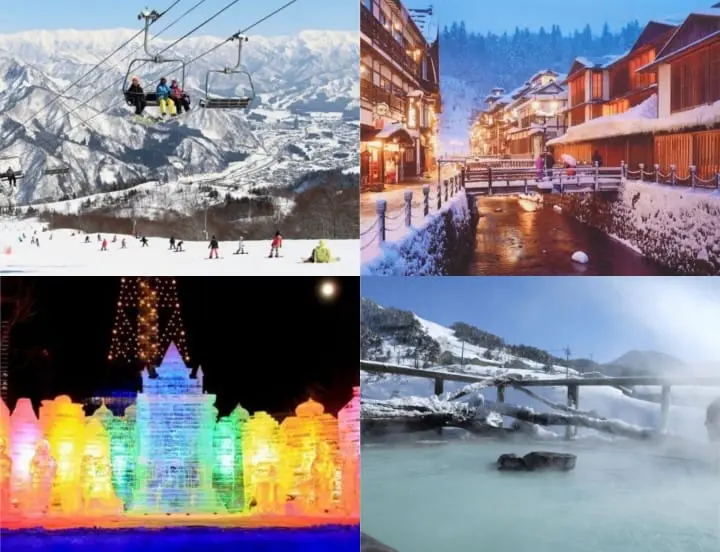
Japan is cold in winter and it is snowing in many places across the country. There is a unique beauty to the scenery, however, and there is a myriad of fun activities and delicious dishes that can only be enjoyed during this season.
We have compiled a guide of useful information for people planning to visit Japan during winter .
Japan in Winter: Travel Tips 2023-2024
Winter Temperatures in Japan What to Wear? Recommended Winter Clothing The Highlights of Winter in Japan 1. Winter Illuminations 2. New Year Celebrations 3. Snow Scenery 4. Winter Sports and Snow Festivals 5. Hot Springs
If you plan to explore Japan by car, use the coupon below to get a 10% discount on Nippon Rent-A-Car services!

Winter Driving in Japan: 11 Precautions and Tips
Winter Temperatures in Japan

Winter in Japan generally lasts from December to February .
In Tokyo, December temperatures tend to be around 12ºC (54°F) in the afternoon and drop to about 5ºC (41°F) in the morning and at night.
By January, afternoon temperatures drop to 10ºC (50°F) and morning temperatures tend to hover between 2ºC - 3ºC (35°F - 37°F). In February, afternoon temperatures are about 10ºC - 11ºC (42°F - 50°F) while morning and evening temperatures fall to about 3ºC (37°F).
Tokyo winters are sunny with little rain or snow. The air is dry, with the humidity around this time generally staying at a constant 30%.

What to Wear? Recommended Winter Clothing

You will need a coat in December. On some days, gloves and scarves might come in handy.
In January and February, you will need a down jacket or a coat. You will definitely need gloves and a muffler too.

Photo by Pixta On windy days, it is a good idea to have a knit cap and earmuffs. If you plan to be outside for a long time on cloudy days or in the evenings, we recommend that you use disposable kairo (heating pads, also called pocket warmers) to protect your hands and feet from the cold.
The heating pads can be purchased at any convenience store, supermarket, and drugstore. A pack of 10 heating pads costs around 200 yen. In order to use them, you just need to open the pack. The iron sand contained in the pad will begin to heat up in contact with the oxygen in the air. The pad will stay warm from 8 to 12 hours.

5 Types of Heat Packs: How to Stay Warm on Cold Winter Days in Japan

Please keep warm by wearing proper clothes and drinking hot drinks. If you do catch a cold, stop by a drugstore such as Matsumoto Kiyoshi and get some medicine. Light medicine to soothe a sore throat or to treat a fever can be bought without a medical prescription. In case of high fever and severe coughing, it's recommended that you go to the hospital.

Japanese Phrases To Use When You're Sick Or In The Hospital
It will be freezing outside but building interiors will be heated; it would be wise to layer your clothing so that you can take layers on and off when necessary.
↑ Return to the top of article.
The Highlights of Winter in Japan
1. winter illuminations.

Winter illuminations are one of the distinctive features of this season in Japan. The cities and towns are decorated with beautiful lights from around the end of November to February.
In Tokyo , you can find beautiful illuminations around Tokyo Station, in Ginza and Yurakucho, as well as Ebisu and Roppongi. The wide parks located less than one hour away from Tokyo, such as Sagamiko Pleasure Forest and Ashikaga Flower Park, have been drawing the attention of thousands of visitors thanks to the innovative collaboration between light and nature.
In Osaka , the Nakanoshima Park Illumination has an exciting theme every year while Kobe's Illuminarie are famous worldwide for the scale and splendor of the lights. If you visit Japan in the winter, do check out some of the light-up events around the city!

2. New Year Celebrations

From around the beginning of December, you can feel everyone's anticipation of the New Year celebrations all around the cities and towns of Japan. The shops will be showcasing products for the New Year, such as auspicious osechi cuisine , New Year's decorations , New Year's greeting cards and lucky bags (fukubukuro) full of goods that can be bought at special discount prices.
If you spend the New Year in Japan, how about joining the crowds for the traditional New Year midnight shrine or temple visit ?
In Tokyo, there are plenty of countdown parties and concerts held either in the open or in clubs and live music venues. The New Year's Fox Parade held in Oji , a town in the Kita ward of Tokyo, is increasingly popular, attracting participants from all around the country.

Year of the Dragon 2024 - The 12 Animals of the Zodiac in Japan
3. Beautiful Snow Scenery

The Shirogane Blue Pond in Hokkaido
When it comes to winter, natural scenery never fails to capture our hearts. The sight of entire vistas glittering white with freshly piled snow will both refresh and enthrall you.
However, such scenery cannot be enjoyed everywhere in Japan. In fact, in big cities like Tokyo, Osaka, and Fukuoka, snow is a rare sight.
Hokkaido is the first area to experience snowfall in Japan, with the first snowflakes drifting down in early November. The frozen Blue Pond in Biei and the drift ice in Abashiri are some of the splendid winter scenery in Hokkaido.

Ginzan Onsen in Yamagata. Photo by Pixta In Aomori, Akita, and Iwate, snow begins to fall around mid-November, while in Yamagata, Miyagi, and Fukushima, it will start snowing in late November.
Ginzan Onsen, a famous hot spring town in Yamagata, or the snow monsters of Zao are some of the sights that shouldn't be missed in winter in northeastern Japan.

Shirakawa-go Village in Gifu. Photo by Pixta
In Niigata, Toyama, Ishikawa, Fukui, Gifu (Takayama), and Nagano, it begins snowing in early December.
The Shirakawa-go Village or the hot spring resorts in Takayama is where you can enjoy idyllic winter scenery. You can visit these areas on bus tours from nearby major cities like Nagoya or Osaka.
Even in regions where snow does not tend to pile up, you can find snowy landscapes if you head towards the mountains.
For example, snow is very rare in Kyoto itself but places like Kinkakuji Temple, Ginkakuji Temple, and Kifune Shrine are famous for their snowy backdrops in the winter. The combination of temples and gardens is particularly gorgeous, and many visitors come to Japan during wintertime just to enjoy these evocative scenes.
4. Winter Sports and Snow Festivals

Japan is a mountainous country, which means it's an ideal environment for winter sports such as skiing, snowboarding, skating, and snow trekking.
Hakuba (Nagano), the GALA Ski Resort (Niigata), and the Bandai ski Resorts (Fukushima) are popular ski resorts that can be easily accessed from Tokyo.
Hokkaido's Niseko area is the go-to destination for those who wish to enjoy several days of skiing on powder snow. Additionally, there are six ski resorts near Sapporo, and other excellent slopes near Chitose, Rusutsu, and Otaru.

Gorgeous snow festivals are being held at various locations in eastern and northern Japan such as the Sapporo Snow Festival , the Asahikawa Winter Festival, and the Otaru Light Path.
They all contain extravagant displays of buildings and statues made completely out of snow and ice, which are illuminated at night, creating a wonderful landscape that can be enjoyed only during this season.
Each festival has various events that attract many visitors from all around the country. The tasty hot local dishes available at the yatai food stalls are themselves one of the attractions at these events.

5. Enjoy the Snow Scenery from a Hot Spring Bath

Winter is also the best time to appreciate hot springs . There's nothing like warming up by taking a hot bath in thermal water. Moreover, many hot spring resorts in the mountains offer open-air baths with wonderful views.
Noboribetsu Onsen in Hokkaido, Manza Onsen in Gunma, and Nozawa Onsen in Nagano are just some of the places where you can enjoy the amazing experience of taking a bath while gazing at the snowy landscape outside.

The Best 15 Onsen in Japan: Hot Springs to Visit in the Winter
Should I visit Japan in winter?
Visiting Japan in winter can be a wonderful experience, as the country offers a variety of unique seasonal attractions and activities during this time. For instance, winter is a great time to visit the northern island of Hokkaido for its snow festivals and winter sports, or to enjoy the beauty of snow-covered landscapes in regions such as Nagano and Shirakawa-go. Additionally, winter is also a great time to enjoy traditional hot springs (onsen) and seasonal cuisine, such as hot pot dishes and seasonal seafood. However, if you are not a fan of cold weather or snow, you may want to consider visiting Japan during a different season. Keep in mind that the weather and temperature can vary significantly between regions, so it's important to plan accordingly based on your interests and preferences.
How cold is Japan in winter?
The temperatures in Japan during winter can vary depending on the region and the specific time of the season. In general, northern areas such as Hokkaido experience colder temperatures, with average highs often around freezing or below. Other regions, such as Tokyo and Kyoto, typically have milder winter temperatures, with average highs ranging from around 8 to 12 degrees Celsius (46 to 54 degrees Fahrenheit). However, it's important to note that cold snaps and occasional heavy snowfall can occur, particularly in the northern and mountainous areas. It's a good idea to check the specific weather patterns for the time and region you plan to visit when considering a trip to Japan in winter.
Is Japan cheap in December?
The cost of visiting Japan in December can depend on various factors such as transportation, accommodations, and seasonal activities. Specifically, December is considered to be a part of the high travel season due to the winter holiday season, especially with the popularity of Christmas and New Year's celebrations. As a result, you may find that prices for flights, accommodations, and certain attractions could be higher than during other times of the year. On the other hand, many shops and department stores hold year-end sales and it's easier to find bargains. Additionally, there are seasonal activities and events unique to December, which can add value to your visit. It's always best to plan ahead, compare prices, and consider off-peak destinations and activities to make the most of your budget when traveling to Japan in December.
What should I wear in winter in Japan?
In winter, especially in the colder regions of Japan, it's important to dress warmly and layer your clothing to stay comfortable. We suggest wearing a eavy coat or insulated jacket, especially in colder regions, as well as layered clothing and thermal undergarments to trap heat and stay warm. Scarf, hat, and glove are important for protecting your neck, head, and hands from the cold. Waterproof and insulated footwear along with warm socks are essential if you plan to spend time outdoors in cold temperatures.
Is Kyoto worth visiting in winter?
Yes, Kyoto is definitely worth visiting in winter. In addition to the beautiful temples, gardens, and historical sites that Kyoto is famous for, there are beautiful winter illuminations at Kyoto Station and other locations, which add to the city's charm. The New Year traditions, which include special ceremonies at shrines and temples, as well as seasonal cuisine, are also a unique feature of Kyoto in winter. Additionally, Kyoto's traditional machiya townhouses and streets take on a special beauty in the winter, especially when dusted with snow. Please note, however, that it rarely snows in winter; there may be some snowfall in January and February.
Enjoy Your Winter Trip to Japan!
Winter in Japan is cold, but there are so many things that can only be enjoyed during this time: hot spring baths, hot pot dishes, snow-covered scenery, New Year events, and many more. Make sure to dress warmly and head out to experience everything that the season has to offer.

Main image by Pixta
The MATCHA editorial department. Our articles feature useful travel information for visitors to Japan, from how-to guides to recommended places to visit.
Related topics
Top articles, related article.

Top 45 Cherry Blossom Spots in Japan - 2024 Guide

Cherry Blossoms in Japan: 2024 Forecast and Best Spots

Japan Fall Foliage Forecast 2023: 25 Destinations and Tips
Nature / Seasons

Fall Foliage in Northern Japan 2023: Top 11 Spots in Tohoku

Autumn in Japan 2024: How to Enjoy the Fall Foliage Season

Japan in Winter: 10 Must-See Snow Festivals! 2024

Summer in Japan: 20 Fun Things to Do to Beat the Heat

15 Winter Things To Do In Japan - Hot Springs, Festivals, And Glistening Snow!

Weather In Japan - The Year Round Climate And Temperatures
Weather & Seasons
Start planning your trip
Special Features

Popular Searches
Latest news.

Visit in June! Minamisawa Hydrangea Mountain: Tokyo's Flower Paradise

Mishima Skywalk Hydrangea Festival 2024: Mt. Fuji Views and Vibrant Blooms

Floral Desserts in Kyoto! Itoh Kyuemon's Uji Matcha and Hydrangea Festival

Discover Kyoto's Elegant Geisha Culture at the Gion Kagai Art Museum

Showa Kinen Park Flower Festival 2024: Enjoy Nemophila, Tulips, and More!

Japan's Public Holidays and Long Weekends in 2024

Aeon Mall Okinawa Rycom: A Shopping Mall Featuring a Resort Aura

Suica and Pasmo IC Cards: Prepaid Transportation Passes in Japan

Riding Taxis in Japan: The 6 Best Apps to Grab a Cab

How to Travel to Kyoto From Osaka: The Fastest and Cheapest Ways
New articles.

Do you need a phone number and a bank account to rent an apartment in Japan? A strange triangle relationships

How to Travel to Hiroshima From Kyoto: The Fastest and Cheapest Ways

Tokyo departure "Recommended summer trip! Tohoku 9 nights, 10 days trip" model itinerary

"Lantern Floating Festival at Chidori-ga-fuchi, The Imperial Palace" will be held on two consecutive nights this year on Wed. July 24, Thu. 25, 2024 2nights!

Not just Hida beef! If you come to Gero, you should try the Hida brand pork [Nattoku Pork] born in Gero.
The Ultimate Japan Winter Itinerary (2 Weeks, 4 Cities)
02/27/2023 by Kristin Addis 2 Comments
When I think of the Japanese winter, I picture that feeling of being in a snow globe, or sitting in a steaming onsen (hot springs), or beautiful views of Mt. Fuji. It’s a tall order, to be sure, but like always, Japan delivered.
We recently spent two delicious weeks there, getting a taste of big cities, tiny villages, some of the most famous sights, and of course, delicious food. Honestly? I think we did a great job.
This is the ultimate two-week Japanese winter itinerary:
Table of Contents
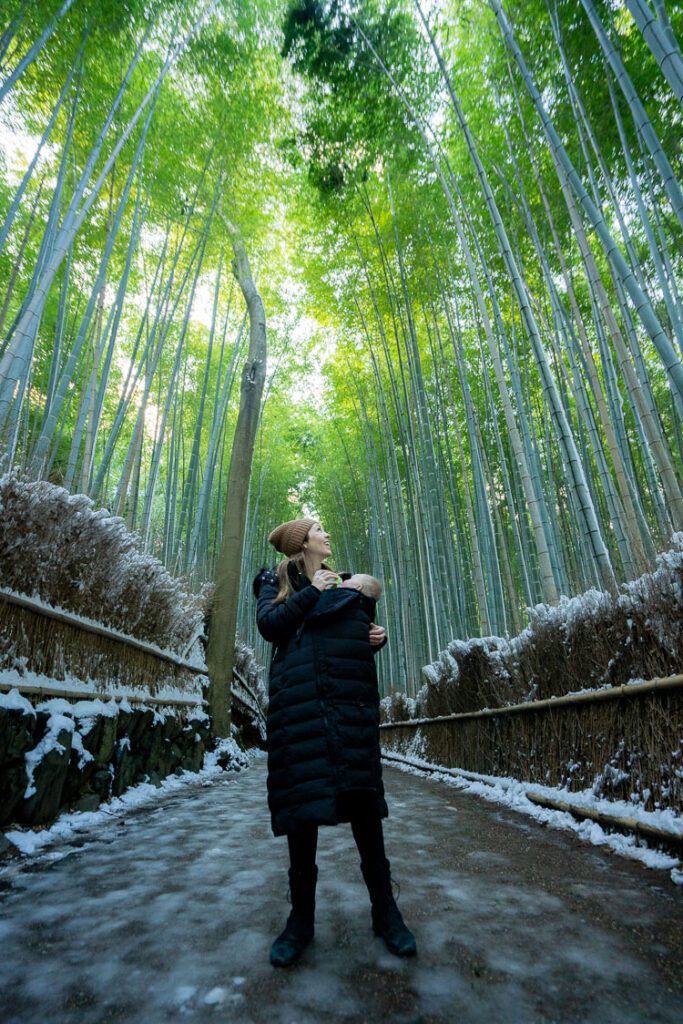
Our journey began in Kyoto and finished in Tokyo. If you can book one-way flights, this eliminates a transit day. You can also consider taking the two-hour bullet train from Tokyo over to Kyoto for the start of your trip.
Though it’s never a guarantee that you will get snow in Kyoto — in fact, it’s a rarity — seeing some of the most famous sites with the white stuff was magical.
Day 1: Bamboo grove
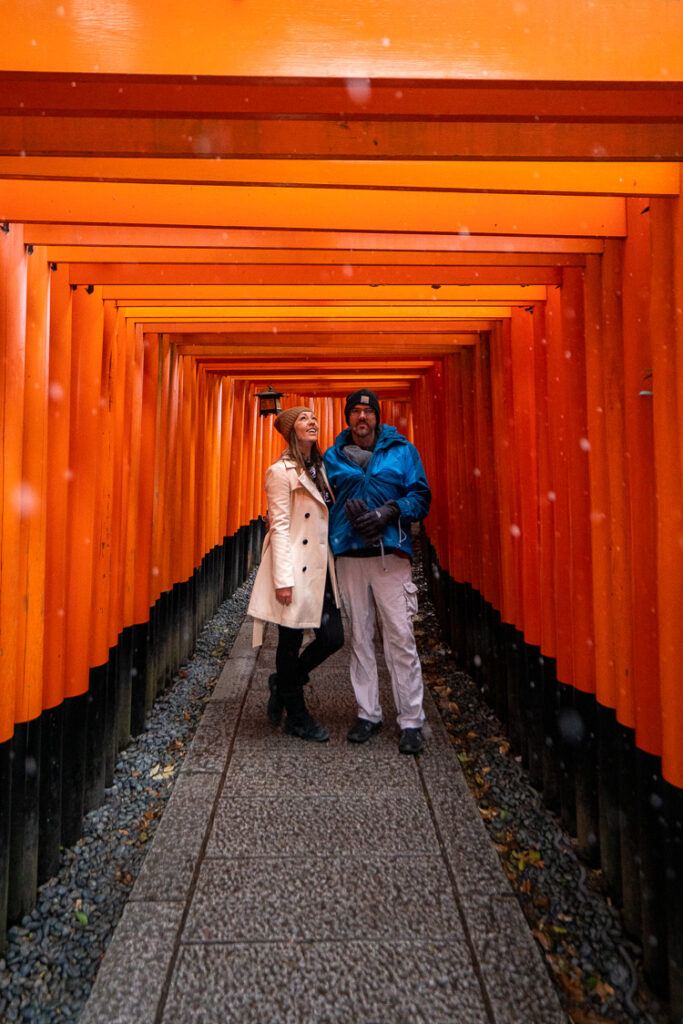
Head to Arashiyama as early as you can to walk through the bamboo forest and check out some of the shrines. The earlier you go, the smaller the crowds should be — however, the bamboo is thick and it can be dark super early in the morning. Though the shrines often have entrance fees that are usually around ¥500, the bamboo is free to walk through and enjoy.
You’ll see busy stands selling snacks close to the entrance, but honestly, they were a bit on the pricey side, and we found better ones elsewhere.
Jet lag took up more of the early part of our journey than intended, but if you are able, try to see the Kinkaku-ji temple, a golden pagoda surrounded by tranquil gardens and a pond. Finish the day with sunset on the famous street leading up to Hokan-ji temple.
Day 2: Kaiseki and torii
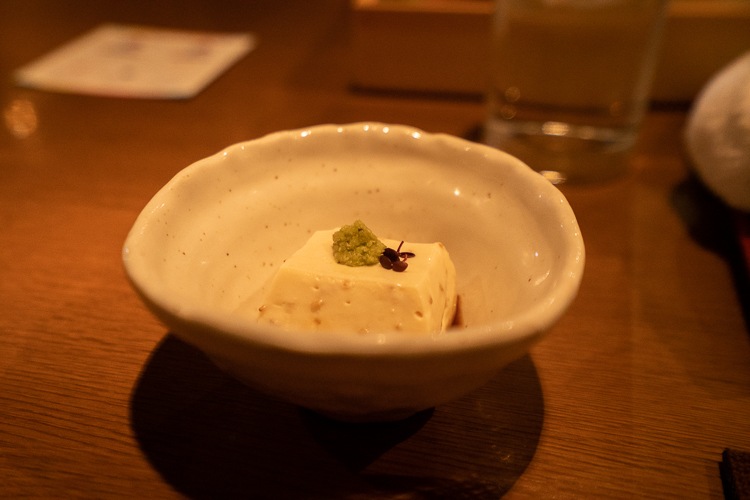
Our second day began with an early journey to Fushimi Inari Taisha, a Shinto shrine dating from 711 CE, with its famous walkways straddled by thousands of torii gates, and is free to enjoy. This and the bamboo forest were the sites I most hoped to see in Kyoto, and it was just as magical in person as I’d dreamed it would be.
It’s open 24 hours, as is the bamboo forest, so heading there early is a great idea. We happened to get there around 8am on one of the coldest, snowiest days of the year in the lowest season, and therefore had it almost to ourselves for a few minutes, but by 9am, busloads of people were showing up.
From there, check out the Kojingamine outlook for an overview of the city, followed by a visit to the Tō-ji temple, the tallest wooden pagoda in Japan dating back to the year 796.
Finish the evening with a stroll through the historic Gion district, or better yet, take a food tour. Ours involved a few hours of walking around, learning about the local culinary history, tasting traditional snacks and spices unique to Kyoto, and finishing with a kaiseki dinner, a ritual meal consisting of several courses created by a team of chefs. Each one features a different cooking style, though you can usually count on a rice dish, miso, sushi, and some kind of dessert. This is the highest level of dining in Japan and should not be missed! (The exact tour we took is no longer available, but you can book something similar .)
Day 3: Tea ceremony and shrines
Have you ever wanted to don a kimono? Participating in a tea ceremony is one of the best ways to get your chance. You’ll have the opportunity to learn the ritual around drinking green tea while wearing this traditional garment, plus get a photo doing so.
Finish the evening with sunset at Kiyomizu-dera, a Buddhist temple that is part of the Historic Monuments of Ancient Kyoto UNESCO World Heritage site.
Where to stay : Kyoto has some gorgeous hotels like the Six Senses and four seasons. The charm of these places is amazing, and worth making it one of your trip splurges!
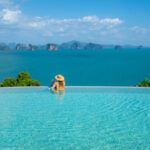
We Can Get You Perks and Upgrades at Luxury Hotels!
We’re part of a luxury travel agency and can help you get the best rates, free room upgrades, $100 resort credits, free breakfast, and late checkout! Click here to tell us your trip desires!
(Due to our desire to catch an event that I’ll discuss later on in the post, we could only spend three nights in Kyoto, but it deserved so much more! I’d recommend staying at least three, if not more.)
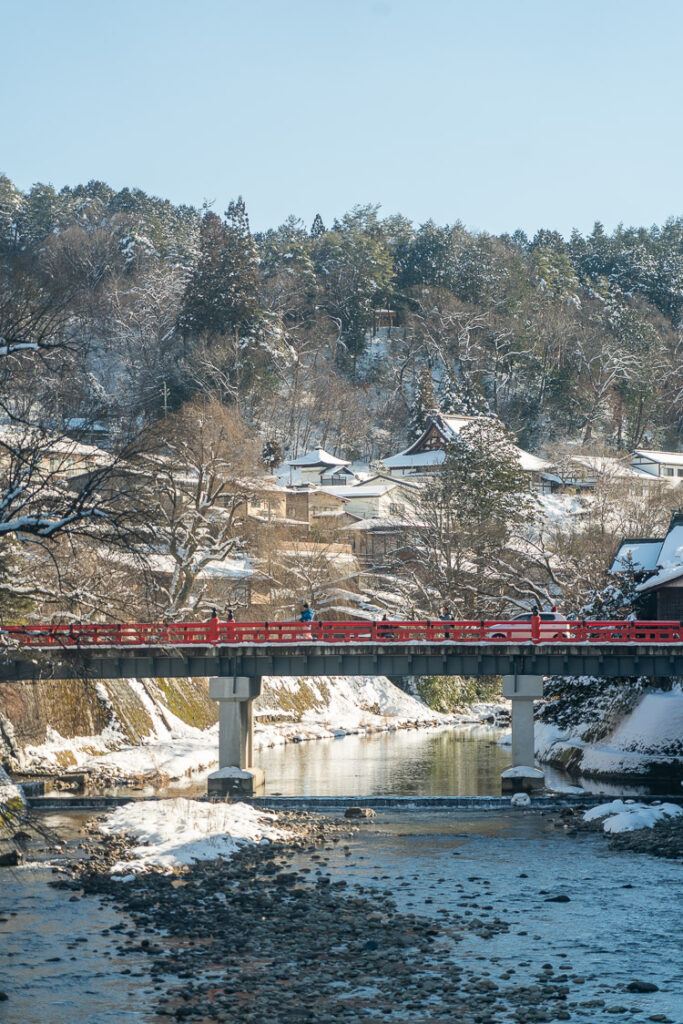
This adorable town full of friendly people is the gateway to the Japanese Northern Alps, as they’re called. We picked this town for its historic feel and famous food, and the likelihood of it being a winter wonderland (it was!).
Day 4: Journey to Takayama, known for delicious Hida beef
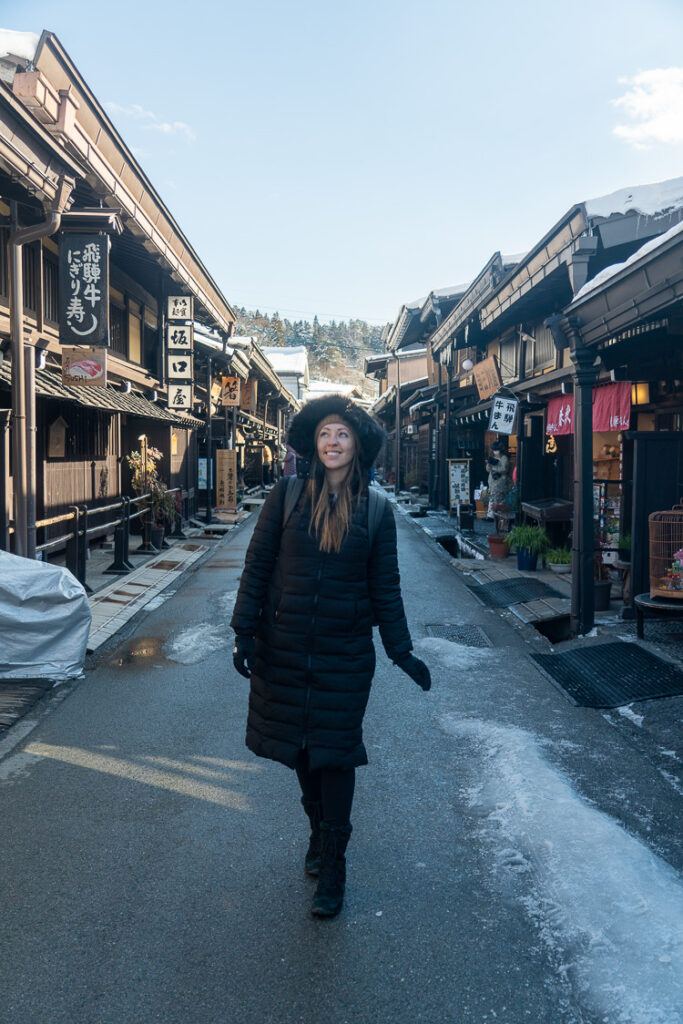
You’ll spend a good chunk of the day getting to Takayama, which is best accessed on Japan Rail (JR) via Nagoya. The ride there is beautiful, most of it alongside a deeply blue river. (Sometimes there’s also a direct bus, though, so be sure to check! We tended to use Google Maps for our planning, which I suggest doing when weighing your options.)
Spend the afternoon and evening sampling some local Hida beef, which is incredibly flavorful and tender, at Kyoya restaurant, where you cook your meal over a charcoal grill at your table! It was a delicious experience at a place we didn’t even realize was famous — we just stopped by, since it was near our Airbnb. Apparently a reservation is normally essential, so be sure to call ahead.
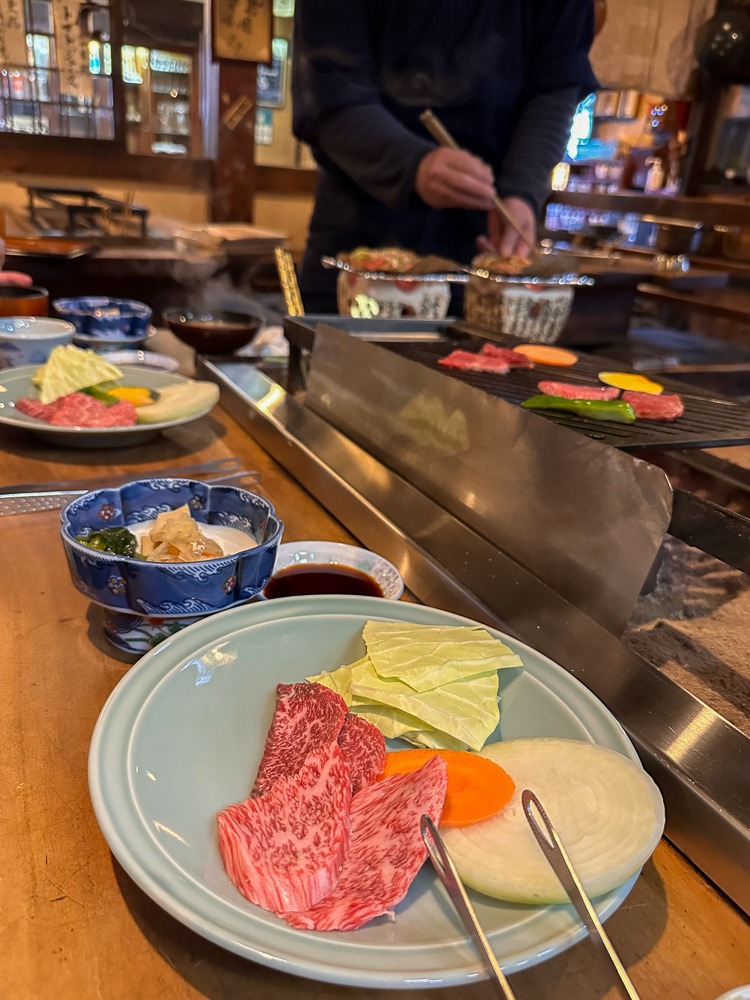
Day 5: Sanmachi and Hida no Sato folk village
Check out the historical houses (pictured below the subheading above) in Sanmachi, a neighborhood with traditional Edo-era architecture dating back to the 1600s through the 1800s. You’ll find small eateries, shops, and houses all along the way.
There’s a morning market along the river as well, where you can find food vendors. It’s perfect for an early stroll.
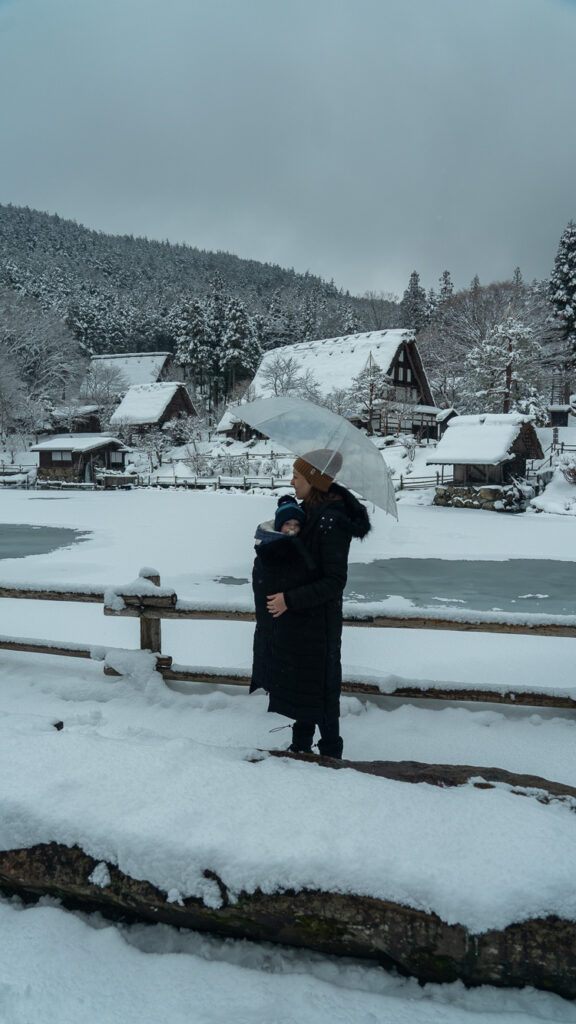
Spend the afternoon checking out the Hida no Sato folk village, an open-air museum featuring more Edo-era farmhouses. In the summer months, you’ll see grass growing on the thatched roofs, and in the winter, the village is famous for having feet of snow packed to the tops of the houses. It was magical to see them that way! Entrance is ¥700.
(The village also a great primer for the next stop, Shirakawa-go, a larger UNESCO World Heritage village from the same era.)
– Read More –
Traveling in Japan with a Baby
Day 6: Shinotaka ropeway or Gero onsen
Head out of town to the Shinotaka Ropeway (¥3,300 per adult), about a 1.5-hour bus ride each way, or consider heading to the town of Gero, south of Takayama, for a night. It’s one of the most famous onsen towns in Japan, known for its particularly smooth water.
(Due to my tattoos I can’t use most onsen , which I’ll discuss later, but for this reason, we opted to skip Gero.)
Where to eat: In Takayama, we loved the Tori Coffee and Sabou Usagi cafés, as well as Uemura for dinner. The latter is a truly tiny restaurant serving organic food the chef grows himself. I cannot recommend it enough! I messaged him via Instagram to book. Sakurajaya is also a fun experience, sitting at the bar and watching the chef make the food in izakaya fashion (informal, small dishes).
Where to stay : I loved our Airbnb here! It was the cheapest of the trip, at around $90/night, and had its own outdoor bathtub, which was magical with the snow!
Shirakawa-go
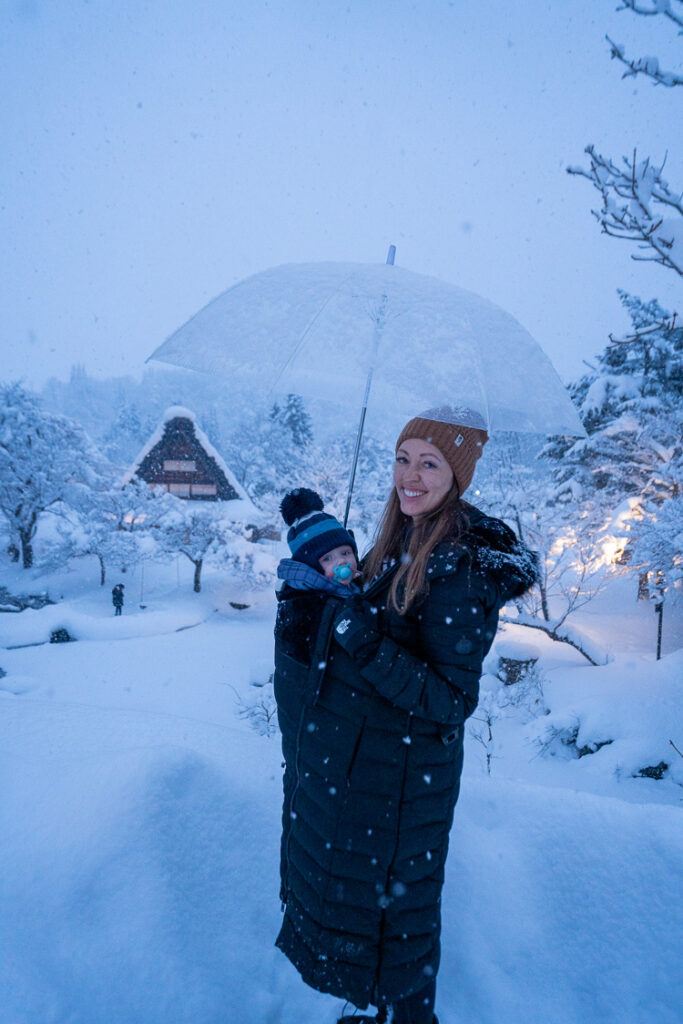
Day 7: UNESCO site Shirakawa-go
Light Up Shirakawa-go was the event I mentioned that caused us to leave Kyoto a bit earlier than I normally would have. Each winter, for six Sundays over January and February, Shirakawa-go lights up all of its buildings in the evening. If you are planning way ahead and can snag a reservation to stay overnight, do it, but if not, you can take a bus tour to the event from Takayama.
Tickets for this may sell out, as the number of visitors is capped. I logged on right when they went on sale in November and had to refresh the page for a couple of hours before finally getting through, but I’m happy to say that it was worth it. It truly felt like we were in a snow globe.
If you can’t get tickets for the light-up event, be sure to head there during the day. It is easy to access from Takayama via a bus that runs hourly (the bus costs ¥700, village admission is free). The village and buildings are quaint, there are a few museums you can enter for a couple hundred yen, and there’s an observation deck as well. The village would be delightful in every season, though I loved seeing it so snowy!
Stay: it’s possible to overnight in Shrakawa-go in the traditional houses . They book up well in advance for the light up event, though other times of year or other evenings would be easier. You’re only allowed to stay for one night in each house and they ask that you don’t bring large suitcases as there isn’t room for storage.
Day 8: Journey to Mt. Fuji
This was our longest travel day, making our way down to Yamanashi prefecture. It was so worth the journey, though, as staying on a lake with a view of Mt. Fuji was a highlight for us.
There were dozens of ways we could have chosen to get there, though we opted for the JR back through Nagoya, followed by a bus. (In 2023, the bus that runs between Takayama and Kawaguchiko was not running, but it would be by far the best and cheapest way in the future.)
Kawaguchiko
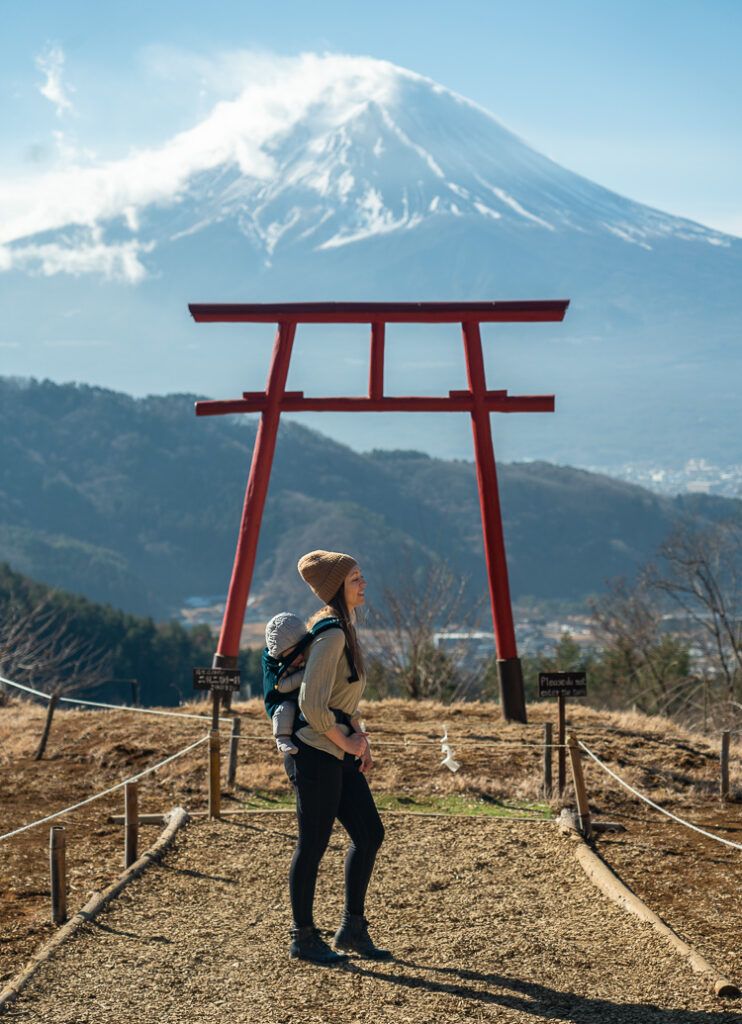
Wintertime is generally the clearest time of year and offers the best chance to see Mt. Fuji, one of the most famous sights in Japan.
When we were deciding between Kawaguchiko and Hakone, another popular spot an hour south, one of my Instagram followers suggested Kawaguchiko (and Takayama!), and I’m so glad we took her advice. We had gorgeous mountain views over the lake day after day.
Day 9: Chureito Pagoda
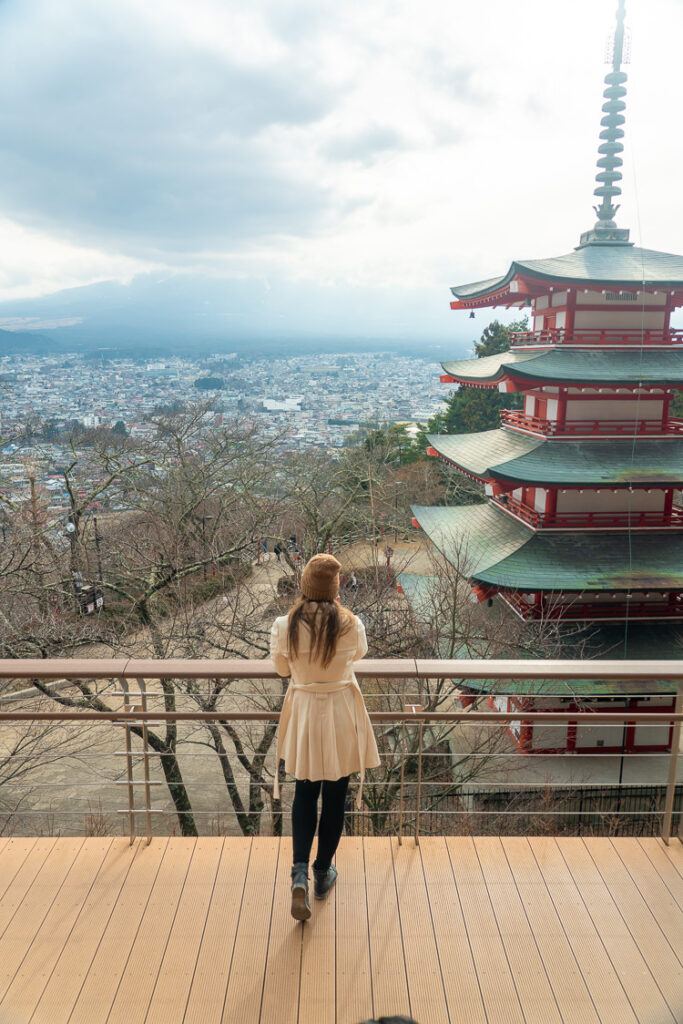
You can’t visit Kawaguchiko without seeing the Chureito Pagoda, which as one of the most iconic views in Japan.
That said, it was also my biggest heartbreak of the trip, having wanted to see this view of Mt. Fuji for years. The clouds rolled in just as we were getting off the train. C’est la vie!
The pagoda is free to visit. You’ll have to climb quite a few stairs to get there, though, but it’s worth it.
Consider also stopping by Oishi Park, which is easy to access from the sightseeing-loop bus, for another iconic Fuji view.
Day 10: Soak and stare at Fuji
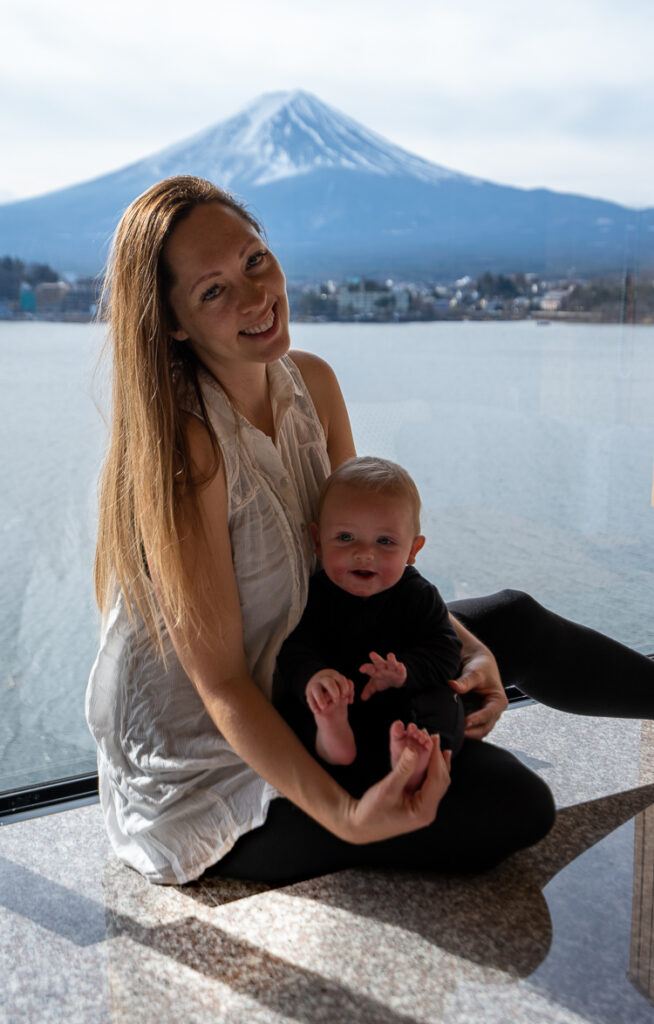
We spent a good chunk of our tenth day hanging out at our hotel, to be honest. I recommend booking a place to stay on the opposite side of the lake from Mt. Fuji (the northern side), so that you can take a day or so to just relax and enjoy the view.
We booked Ubuya , a ryokan (traditional Japanese inn that typically features tatami-matted rooms) that had private hot springs on the balconies. Since I have tattoos, this was the only way that I was going to get to enjoy onsen that are so iconic in Japan in the winter.
Due to tattoos’ association with gang culture, almost all onsen and even hotel spas in Japan ban those with tattoos, unless it’s very small and can easily be covered with a Band-Aid. You can’t cover them up with a swimsuit, either, as one is fully nude in onsen .
This ryokan was definitely a splurge for our trip, but it was worth it! We also ate breakfast and dinner in the hotel, the latter a kaiseki meal in a private room set up for us and the baby.
Day 11: Fuji ropeway and Asama shrine
Are you down for an Insta-famous photo opportunity? There are two big ones in the area, including the Mt. Fuji Panoramic Ropeway. It’s a short journey, so I normally would not feel the ¥1,800 per person round-trip is worth it, since you can get a great view of the mountain from the lakeside. But you can get some pretty cool pictures swinging with Mt. Fuji at a swingset at the top. You’ll have to queue up and pay an additional ¥500 for the photo op, which we didn’t do, but part of me wishes we had.
Next, take the bus bound for the Asama shrine and either walk from there, which is a 30-ish-minute uphill climb, or take a taxi to Tenku no torii. They’ll ask for ¥100 per person at the entrance and there will be another queue, but I loved the photos we got! (pictured at the beginning of the Kawaguchiko section).
Note: The “suicide forest” is also in the Kawaguchiko area, but it’s generally regarded as disrespectful to visit. Please pick other activities instead. There are many other beautiful forests in Japan!
Stay : As mentioned above, we booked Ubuya and loved the experience. If it’s out of your price range, I re commend staying on the same side of the lake and booking another hotel nearby so that you can still get the Fuji view from your room.
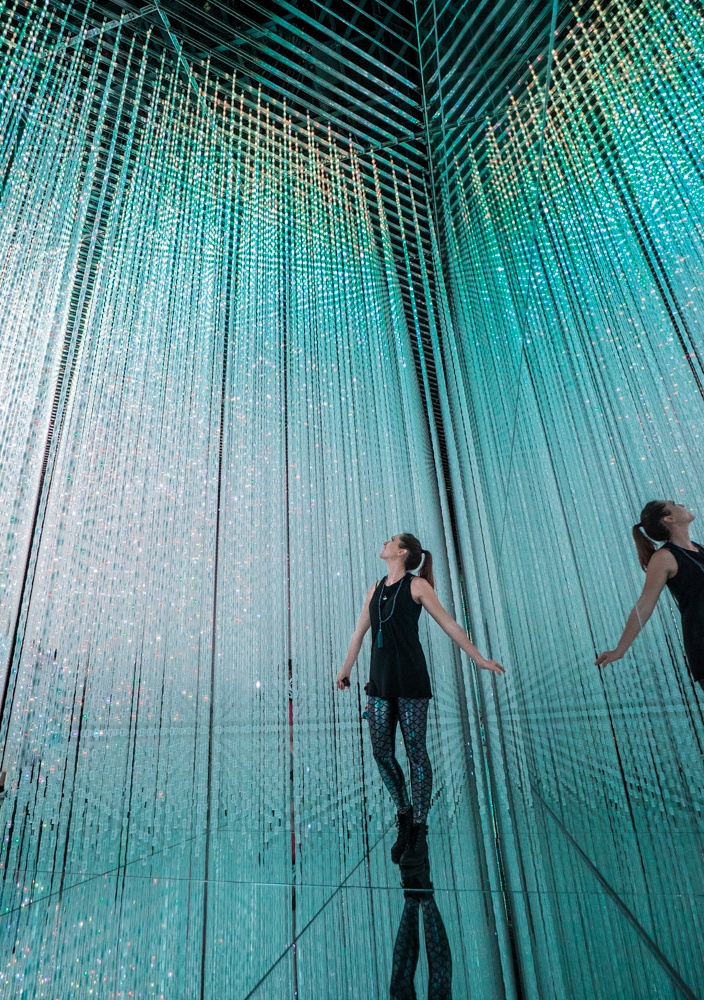
Welcome to the largest city in the world! I am usually not a big-city person, but Tokyo is a different animal. It’s one of the most unique places I’ve ever been, and there’s almost a limitless supply of things to do. Though you can only ever scratch the surface, these are some of my favorites:
Day 12: TeamLab and Harajuku
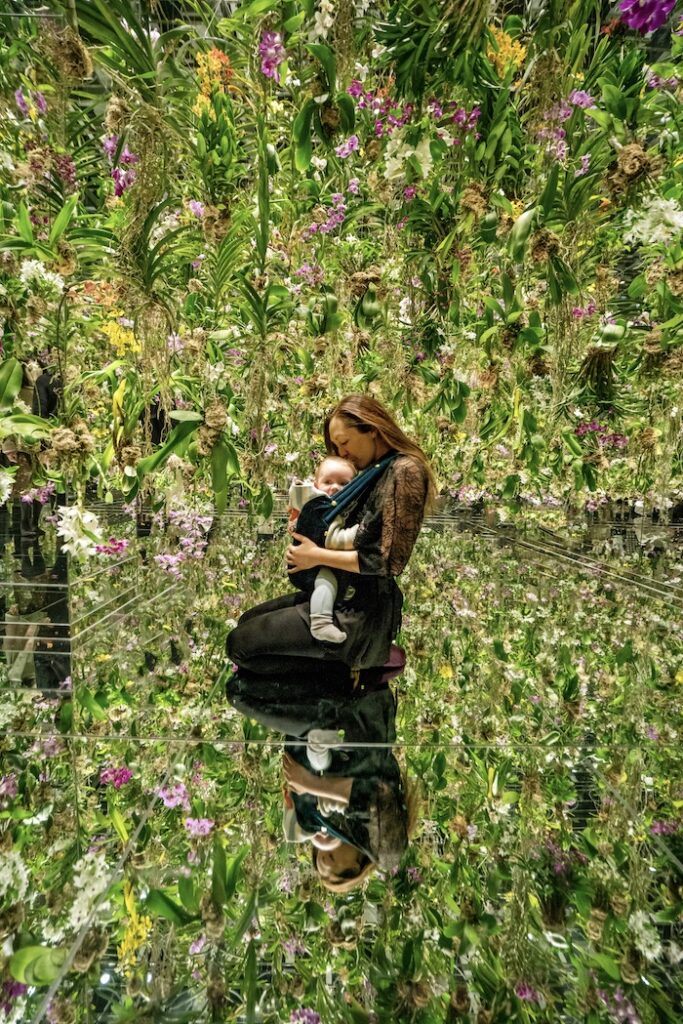
Harajuku is one of the most famous areas of Tokyo — and for good reason. There’s awesome shopping, creative cafés, and some famous local culture to check out. If you’re looking for something more traditional, in the same area, you can walk around the Meiji Jingu Shinto shrine.
From there, pop by the Hie shrine for another opportunity to walk through a smaller version of the Kyoto torii gates, as well as view one of the lovelier shrines in Tokyo, featuring white walls and a green roof.
Finally, do not miss a TeamLab exhibit! This art collective’s immersive art experiences get me every time. They tend to only remain open for a few years; TeamLab Planets should be open for another year or so, and it’s a must-see. I highly recommend going in the hours before closing so as to have fewer people in your photos. Book your ticket ahead of time too: this one somehow let us skip the whole line! Entrance is ¥3200.
Day 13: Nakano, Shibuya crossing, and ramen
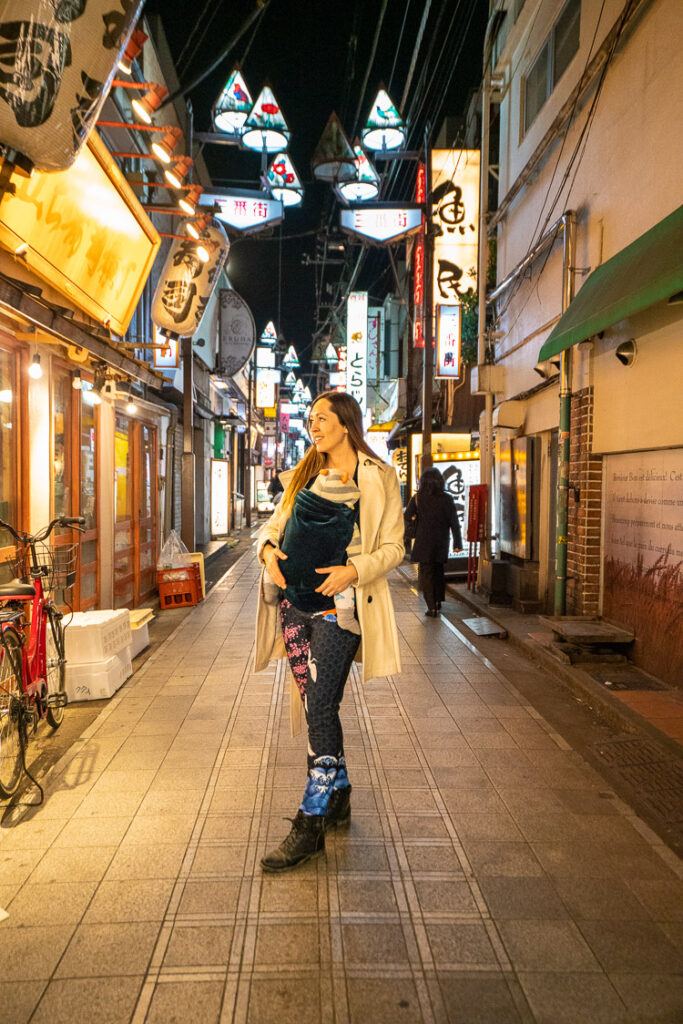
On our second-to-last day, I knew I wanted to do another food experience. There are a couple that I was looking at, including a walking tour in the famous Tsukiji fish market and a six-bowl ramen tasting . The latter just happened to fit better with our schedule, and it was delicious! We visited three ramen shops, all of which featured several unique flavors and styles. Garrett and I also shared each of our bowls, so that we could sample all of the flavors, so we ended up having 12 ramen samplings. Our favorite was the inventive pesto ramen, though I always love the curry version and was surprised by how much I enjoyed the squid ink as well.
Give yourself some extra time to check out Shibuya crossing, where the tour begins, which is the famous all-direction crosswalk that as many as 3,000 people use at a time! It’s quite a sight. If you want to see it from above, the Starbucks is a popular place to check it out.
We followed our ramen tour with a giant ice cream at Daily Chico at the Nakano broadway, pausing to take the photo featured above on one of the adjacent streets, which you can find by glancing to your right as you walk up the broadway.
Day 14: Imperial Palace, Disney, and unique kaiseki in Ginza
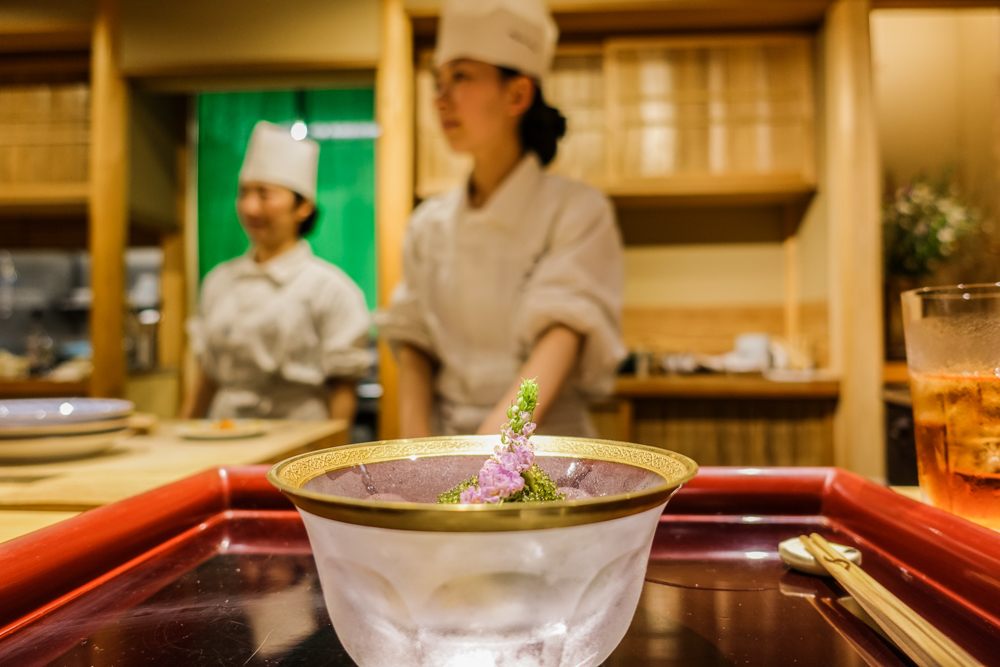
On your last day, you’ll have to make a difficult choice about what to see. I have a complete Tokyo itinerary here with a bunch of options. If our son were a bit older, we would have loved to go to Tokyo Disney or Disney Sea. Better believe it’s on the docket for the future!
Since our hotel was near the Imperial Palace, we opted to take a walk around the grounds. Keep in mind that you actually have to take a tour in order to get closer. The gardens are lovely, though, and the trees lining the streets near Tokyo Station are a great winter photo op.
I’d finish your trip with one of the most unique kaiseki experiences, in the high-end Ginza district of Tokyo: Tsurutokame , the only all-female kaiseki restaurant in Japan, featuring not only delicious food but incredible presentation. I was vegan when I visited a few years ago, and they even created a completely vegan menu for me! It was a highlight of all of my trips to Japan. It’s also popular, so book well in advance!
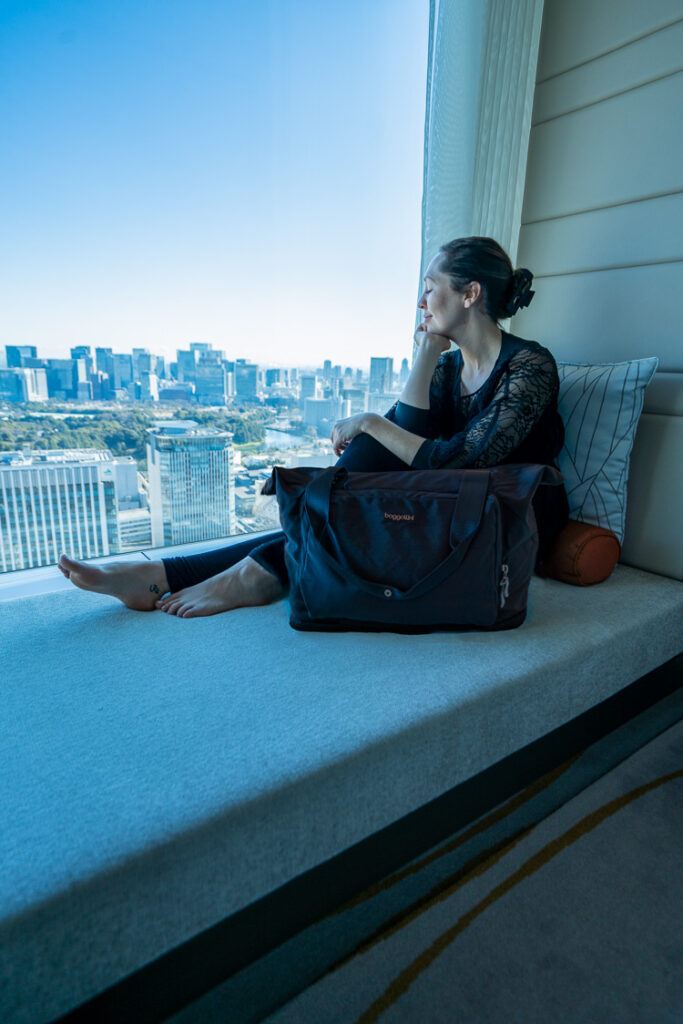
Where to stay : I splurged a bit on this part of the trip as well, booking us at the Prince Gallery Kioicho Hotel . The view from the room made it so worth it! The breakfast was delicious, and the location was central, but the best part about it was definitely the service, which was top-notch.
Although many of you won’t need to worry about this, it was also the only place we stayed in Japan that had a crib!
Hokkaido, Japan’s northernmost major island, is important to mention. Many people choose to ski its famous powder (known in the ski world as Ja-pow), during all or at least part of their winter trip.
From Tokyo, you can take the bullet train and be in Hokkaido in about four hours. Although it was under consideration for us, since we are not really ski people (who live in a ski town — it’s weird, I know) and had a baby with us, we passed.
But there’s good reason to visit. Sapporo, the largest city, has a snow festival each year that features massive ice and snow sculptures. It usually only lasts for a week, so plan your trip accordingly if you’d like to see it.
Getting Around
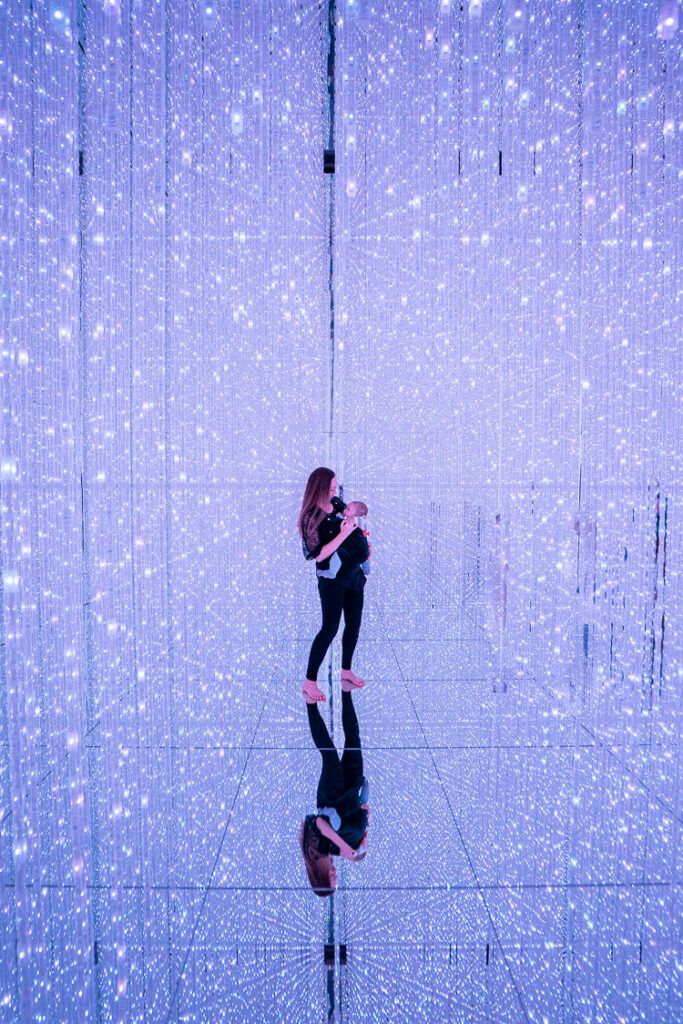
Getting around Japan was pretty straightforward using Google Maps. I would sometimes cross-reference with blog posts that specifically discussed the journey between certain destinations, just to be sure, but Google Maps was almost always correct. I also appreciated that it would usually give me the exact platform and even car to use in order to make a quick exit.
That said, both Kyoto Station and Tokyo’s larger metros can be confusing, although there were information desks scattered throughout, and they were super helpful — I would just show them where I was trying to go, and the staff person would point in the right direction.
To Rail Pass or not to Rail Pass?
Should you get the Japan Rail Pass ? Only foreigners are allowed to get this pass, which for a one-time fee gives you unlimited rides on the Shinkansen (bullet train) and Japan Rail lines. If you are going to be taking long-distance trains between Kyoto and Tokyo or Hokkaido, for example, it could make a lot of sense.
We opted not to do it, however, since two of the towns we visited — Takayama and Kawaguchiko — involved bus travel. It didn’t work out to be financially advantageous for us, just barely. We did, however, get the Tokyo metro pass , and I recommend the Hakone pass if you opt to go there.
If you do plan to take trains during the high season, it will probably make sense to get the JR pass and book your seats ahead of time. There are only a few cars on each train that are unreserved, which only worked out for us because we were there during low season. Book highway buses ahead of time as well, either in person at the station or online. I hadn’t realized this was important — we were lucky to grab the last seats on our bus to Kawaguchiko, which would’ve been such a pain to have missed!
Also, be sure to have cash on hand. There are ATMs in most convenience stores and train stations. We found that the ticket machine did not take our foreign credit cards, but if we waited in line for in-person service, we could buy a train or bus ticket with a card. Many restaurants also prefer cash.
Language and other notes
Although I can read a bit of Japanese, thanks to my years studying Mandarin and the similarities between the two, I don’t speak it beyond hello ( konnichiwa ) and thank you ( arigato ). Thanks to Felix, I learned that the word for “cute” is kawaii .
I found that people were always willing to try to communicate, though, since Japanese people are friendly and wonderful hosts. So I highly recommend downloading Japanese on Google Translate before you go. That way you can access it offline if you need to show somebody something or ask a question.
Also keep in mind that people bow as a sign of respect, a greeting, or thank you. Be sure to bow back, fully facing the person.
Japan is easily one of my favorite countries to explore because it’s just so different from anywhere else on earth. You get the opportunity to travel back in time, to feel blasted to the future in the big cities, and the friendliness is incredible.
Note: Some links in this post are affiliate links to the hotels and activities that we participated in. Purchasing through these links supports us at no extra cost to you
About Kristin Addis
Kristin Addis is the founder and CEO of Be My Travel Muse, a resource for female travelers all around the world since 2012. She's traveled solo to over 65 countries and has brought over 150 women on her all-female adventure tours from Botswana to the Alaskan tundra.
Leave a Reply Cancel reply
Your email address will not be published. Required fields are marked *
Save my name, email, and website in this browser for the next time I comment.
subscribe to our newsletter
This site uses Akismet to reduce spam. Learn how your comment data is processed .
06/21/2023 at 11:50 am
Hello! I enjoyed reading about your trip, the photos are amazing. I am starting to come around to the idea of going to Japan during winter. What dates/month did you travel?
Kristin says
07/01/2023 at 10:40 am
This was end of January into February 🙂
- Things to Do
Winter in Japan: 20 Best Things to Do in Japan’s Cold Season

- Joshua Furr
- Steve Csorgo
Winter in Japan is an exciting time filled with unique activities and breathtaking landscapes. Whether it’s skiing down powdery slopes, soaking in hot springs, or dining on snow crabs, winter has no shortage of things to do, see, and eat. If you remember to pack the proper attire, and don’t mind a bit of adventure, this list of 20 things to do in Japan in winter is your ticket to a cool time indeed!

This post may contain affiliate links. If you buy through them, we may earn a commission at no additional cost to you.
When Is Winter in Japan?
Winter in Japan typically lasts from December until February, and reaches its peak in January. However, as Japan runs long from north to south, the winter climate differs greatly between regions. For example, in Japan's northernmost island of Hokkaido , wintery weather can start as early as October, while Japan’s southernmost Okinawa barely has a winter at all. That’s why it’s important to plan your itinerary before packing clothes and gear.
How Cold Does Japan Get In Winter?
Tokyo in winter is chilly but relatively mild and sunny, with the temperature averaging 0-8°C, and snowfall a rarity. Sapporo , the capital of Hokkaido, regularly drops below 0°C between December and March, and snow is a given. The Hokuriku and Tohoku regions are also notorious for their snow, including Niigata , Yamagata , Akita, Aomori, and Toyama , where accumulated snowfall is often measured in meters in particularly snowy spots!
The Best Things to Do in Winter in Japan
1. hit the powdery slopes.
One of the top reasons to visit Japan in winter is skiing and snowboarding. Ski resorts can be found in much of Japan, including the well-established Niseko in Hokkaido, which sits in the shadow of Mt. Yotei. Niseko’s powder snow is light and dry, and there are loads of resorts suiting all skill levels.
Closer to Tokyo is the valley town of Hakuba , Nagano Prefecture , which hosted the 1998 Winter Olympics, and boasts 10 fantastic slopes frequented by a vibrant community. Just over an hour from Tokyo is also the highly accessible Echigo-Yuzawa , home to 12 ski resorts including GALA Yuzawa, which has its very own bullet train station!
Recommended Accommodation in Niseko: Annupuri Lodge at Niseko
2. Warm Up Inside a Kamakura Snow Hut
Like the Inuits of Canada, winter in Japan comes with its own frozen domiciles called “kamakura.” These hollowed-out snowdomes were originally built as shrines to the God of Water, and continue to be a beloved winter tradition providing a surprisingly snug nook against the frigid climate.
Several areas throughout Japan hold kamakura festivals, such as Yunishigawa Onsen in Nikko , which is famous for both large-scale snowdomes that you can sit in, along with rows of adorable mini-kamakura illuminating the night. Further north, the annual Yokote Snow Festival is held in Yokote, Akita Prefecture, on February 15 and 16. It features more than 80 kamakura, including those set up at the foot of the magnificent Yokote Castle.
3. Admire the Architecture of Shirakawa-go
Situated at the foot of the sacred Mt. Haku in Gifu Prefecture , the old homesteads in the UNESCO World Heritage site Shirakawa-go appear even more spectacular during winter in Japan. These structures, some of which are around 300 years old, were built with triangular thatched roofs in a traditional style called “gassho-zukuri” to keep the heavy snowfall that regularly hits the region from building up.
In addition to viewing these impressive dwellings, Shirakawa-go also holds several festivals throughout winter, like the Silkworm Festival and the Katteko Snow Fireworks, both in February.
Recommended Accommodation in Shirakawa-go: Onyado Yuinosho
4. Relish Japanese Winter Delicacies
Winter in Japan wouldn’t be complete without enjoying the bounties of the season. Seafood delicacies are particularly plentiful between December through February, with Japanese crab being the staple. There are several crab varieties to sample in winter, such as king crab in Hokkaido, and snow crab in the Hokuriku region, which includes Echizen crab in Fukui Prefecture and Matsuba crab in Tottori Prefecture .
Other winter must-tries include fresh “fugu” (pufferfish) in Shimonoseki, plump salty oysters from Hiroshima , firm and succulent monkfish in the fishing village of Kazamaura, and “buri” yellowtail from Toyama Bay.
Our Top Tips

JR Pass for Whole Japan
Explore Japan in the most convenient and economical way with a Japan Rail Pass! It is valid for the majority of railways and local buses operated by JR.
5. Thaw Out in an Onsen Hot Spring
Whether you’ve spent the day on the slopes, or a night out at a winter festival, nothing beats a soak in one of the many “ onsen ” hot springs that dot Japan. There are loads of remarkable resort towns to choose from, like the evocative Ginzan Onsen with its charming retro gas lamps and wooden inns, or Kusatsu Onsen , famous for its picturesque Yubatake hot water field.
If you feel squeamish about bathing nude with strangers, here are 12 Japanese onsen hot springs you can visit with swimsuits.
6. Sapporo Snow Festival
The Sapporo Snow Festival started back in 1950 with just a few snow sculptures, but has since exploded into a massive spectacle drawing in over a million visitors each year.
The attractions are spread out across three distinct venues: the central Odori, where many of the biggest and best snow sculptures are exhibited; the nightlife district of Susukino, which is decorated by glimmering ice sculptures; and Tsudome, an interactive venue with snow slides and more. A skating rink and a plethora of food stalls add to the fun, while after-dark light-ups bathe the scene in an enchanting glow.
Sapporo is also near many renowned hot springs, like Jozankei Onsen, and is the birthplace of miso ramen, giving you plenty of warmth and nourishment to fight against the cold.
Recommended Accommodation in Sapporo: Hotel Resol Trinity Sapporo
7. Bask in Stunning Illuminations
Although night comes early during winter in Japan, magnificent “ illumination ” displays stave off the darkness to cheer up locals and attract visitors during these otherwise dreary months.
Yomiuriland, one of Tokyo’s largest amusement parks, hosts the Jewellumination, where magical jewel-colored LED lights transform the grounds into a radiant wonderland. Closer to Tokyo Station is the Marunouchi Illumination, which sees over a million golden bulbs on hundreds of trees make the already bright Tokyo streetscape even more dazzling.
Winter in Osaka likewise has its central Namba area lit-up with a festive kaleidoscope of a million lights, while Osaka Castle is adorned by illuminated artworks. Most cities in Japan also have their own renditions, so be sure to check them out while visiting!
8. Ring in the New Year With Hatsumode
Hatsumode is a Japanese New Year’s tradition dating back to the Heian Period (794-1185). It is the custom of visiting a shrine or temple during the first week or so of the New Year to make an offering and pray for the coming year.
However, there’s more to hatsumode than just praying. As the entire community is involved, it has a festive mood complete with food stalls and activities. You can scoop up decorative “omamori” good-luck amulets, and have your fortune told via “omikuji” paper slips. For those unfamiliar with how to pray the Japanese way, we suggest checking out this article , too.
Popular hatsumode spots include Tokyo’s Meiji Jingu Shrine and Senso-ji Temple, Tsurugaoka Hachimangu in Kamakura , Fushimi Inari Taisha in Kyoto , and Izumo Taisha in Shimane . Keep in mind that crowds will be massive, so be prepared to wait in line.
9. Hunt For Bargains With Fukubukuro
Those who love a good deal will do well to visit Japan in winter! Japanese lucky bags, called “fukubukuro” are packed with a bunch of goodies sold all together at a discount, often with the contents inside kept secret until opening!
The process is simple: visit a store of your choice between January 1-3 (or even afterwards) and try to get your hands on one of these fleeting fukubukuro. While they can be found easily enough, some popular stores may require a reservation months in advance!
Why the appeal? Mystery may have something to do with it, especially since fukubukuro are a way for stores to unload old inventory, and could be filled with anything. Check out our guide to fukubukuro to learn how to secure your own.
10. Mingle With the Snow Monkeys
While Japanese macaques can be found throughout the nation, none are more entertaining than the “ snow monkeys ” that live at Jigokudani Monkey Park in mountainous northern Nagano Prefecture. Here, visitors can walk amongst dozens of these playful primates as they freely run, roam, and even bathe in nearby hot springs.
Due to the area’s high volcanic activity, natural hot springs abound, and the snow monkeys adorably take to the onsen much like we humans do, visibly enjoying the steaming water as snow falls around them. Thanks to their tame nature, it’s easy to snap great photos, but don’t get too close to them.
11. Engage In Alternative Snow Activities
If skiing and snowboarding isn’t your thing, there are plenty of alternatives to make the most of winter in Japan. For a more relaxed experience, join a snowshoeing tour, which are available with both modern snowshoes or traditional “kanjiki” Japanese-style snowshoes. If you’re seeking speed, then a thrilling snowmobile ride through forest trails would be right up your alley.
For younger visitors and those young at heart, airboarding down a slippery slope, ice-skating at one of the many rinks set up during the season, or just making some good old-fashioned snow angels is sure to leave you with unforgettable winter in Japan memories!
12. Cruise Through the Okhotsk Drift Ice
Every January, ice chunks from the mouth of Russia’s Amur River drift down the Okhotsk Sea into northeastern Hokkaido, forming drift ice famous in places like Mombetsu, Abashiri, and Shiretoko. These wide sheets of ice are around 50 cm thick, and can only be broken up by special icebreakers that also double as passenger cruise ships.
We recommend setting sail on the powerful Aurora, which departs from Abashiri Port, or the equally tough dual-drill Garinko, departing from Mombetsu Port. For an even more up-close encounter, there are also “ice walk” tours available , where you’ll be able to walk across the drift ice to feel the intensity of winter in Japan for yourself.
13. Go Ice Fishing For “Wakasagi” Smelt
As mentioned, winter in Japan comes with an array of delicious seafood, but like the adage goes: Teach a man to fish and you feed him for a lifetime. That being said, ice fishing for “wakasagi” smelt is not just a practical pastime, but an enjoyable and (if you catch something) satisfying experience. In January, Lake Akan and Lake Abashiri in Hokkaido are ideal as they are the first to freeze, but Nagano’s Lake Matsubara and Fukushima’s Lake Hibara are also popular haunts for ice fishers.
This primitive method of fishing requires warm clothing, proper equipment, and, above all, patience. While pros will often set themselves up, ice fishing facilities and tours with tents, holes, and gear all provided can be found at several frozen lakes in Japan.
14. Survive the Snow Monsters of Zao
Around January, the Zao Mountain Range in Yamagata Prefecture is blasted by Siberian winds smothering its fir trees in layers of distorted ice giving the impression of monstrous beasts! Dubbed the “Snow Monsters of Zao,” these surreal natural creations can be viewed from above aboard the Zao Ropeway, and then examined up close at the Jizo Sancho Station Summit Terrace.
After absorbing the 360-degree view of the frozen world below (and heating up in the station’s restaurant), pop on your skis or snowboard and race down the mountainside slopes of the Zao Onsen Ski Resort. While a pleasure to behold in the day, the Snow Monsters become even more photogenic during the Zao Juhyo Festival, when they are illuminated by colorful lights at night.
Read more about Zao Onsen and 14 other places to visit in Yamagata Prefecture.
15. Uncover Frozen Waterfalls
The freezing temperatures during winter in Japan affect all elements of nature, and even powerful waterfalls cannot escape its grasp. The majestic wintery sheen and long glass-like icicles of these “icefalls” is perhaps the most stark demonstration of winter’s boundless might.
In Kamikawa, Hokkaido, visitors can join the annual Sounkyo Onsen Ice Waterfall Festival, which not only features the iced-over Ryusei and Ginga Waterfalls, but also a breathtaking winter fireworks show. Closer to Tokyo, the Chichibu region of Saitama Prefecture hosts the Otaki Ice Festival in January, where the magnificent Misotsuchi Icicles hang from the rocks above. Within the deep forests of western Tokyo, the 23.3-meter Hossawa Falls is another beautiful frozen wonder only a 20-minute walk from the Hinohara Village Office.
16. Catch the Early Plum Blossoms at the Atami Plum Garden
The Atami Plum Garden, in the coastal resort city of Atami , was established in 1886 and is filled with over 450 plum trees of 60 varieties, some around 100 years old. The first wave of delicate buds blossom as early as mid-November, making them some of the earliest in Japan. This is followed up by staggered middle and late-blooming plum trees, letting visitors enjoy their flowers all throughout the winter.
17. Capture Photos at the Kasayama Camellia Groves
Winter in Japan is also the season of the radiant camellia flowers that flourish in Toragasaki at the northern tip of Mt. Kasa, Yamaguchi Prefecture. Here, 25,000 camellias grow across 10 hectares, dotting the pastoral landscape with vibrant flourishes of red and yellow.
To celebrate, the Hagi and Camellia Festival is held every year from mid-February to March, coinciding with the flowers’ peak blooming period. Visitors can enjoy activities and events while strolling along a promenade under the luxuriant canopy.
18. Spot the Yukitsuri Trees at Kenroku-en
While winter in Japan is an exciting time for travelers, the harsh elements can harm nature. For example, Kenroku-en, one of Japan's premier ancient gardens , is known for its Karasaki pine and other beautifully manicured trees whose delicate aging branches can crack under the weight of winter snow.
Therefore, in order to protect them, the groundskeepers perform “yukitsuri” between November and mid-December. Using ladders, this process involves painstakingly setting up a tent-like structure of straw ropes and bamboo poles over the trees to support their branches and prevent damage.
While most famous at Kenroku-en, the tradition of yukitsuri can be seen all throughout the snowy regions of Japan, and is often said to be one of the first signs of winter. Witnessing this kind act truly drives home just how important gardens like Kenroku-en are to Japanese people.
Recommended Accommodation Near Kenroku-en Garden: House Hotel Kenrokuzaka
19. Climb the Snowy Steps of Kifune Shrine
Kyoto doesn’t typically get a lot of snow, which is why when winter weather does grace the ancient capital, it’s a truly special occasion best appreciated at a few select spots.
One of these is Kifune Shrine, whose stone stairs lined with vermillion-colored lanterns form a striking contrast when blanketed in pristine white snow. From early January to late February, the path is lit up at night, casting a warm winter glow over the spectacle. This special illumination only happens when it's snowy, so if you choose to visit, pray for fresh white powder.
20. Follow the Path of Light at Miyajidake Shrine
Just like the Arctic reveals its Northern Lights, a rare luminous phenomenon also exists during winter in Japan. The 1,700-year-old Miyajidake Shrine is located in the seaside town of Fukutsu, Fukuoka Prefecture , and is reputable for many aspects, but mostly for its transient “Path of Light” every February and October.
The shrine sits above the city, facing west towards the Genkai Sea, and a straight road runs uninterrupted from its entrance to the coast, giving the impression of a path. Twice a year in late February and late October, the setting sun blazes a perfect golden trail from the sea all the way up to Miyajidake Shrine. To celebrate, the Path of Light festival is held for a week, culminating in its namesake phenomenon.

Brighten Up Your Winter in Japan With Fun Activities!
With boundless fun and frivolity, it’s well worth braving the freezing temperatures to experience winter in Japan. In general, snowy northern regions like Hokkaido, Tohoku, and Hokuriku have the best winter scenery and activities, so we recommend starting your seasonal sojourn there. Whether it’s staples like skiing and snowboarding, or more unique activities like walking on drift ice or meeting the snow monkeys, you’ll be glad you picked winter to visit Japan. So, use this article as a jumping off point and start planning your ultimate winter Japan holiday!
Thumbnail: PIXTA
The information in this article is accurate at the time of publication.
tsunagu Japan Newsletter
Subscribe to our free newsletter and we'll show you the best Japan has to offer!

- illuminations
- sea of okhotsk
- snow festival
About the author
Related Articles
Related interests.
- Factory tours
- Instagrammable photo spots
- Exhibitions
- Skyline & Observatories
- Beauty salons
- Hair salons
Restaurant Search
Tsunagu japan sns.
Subscribe to the tsunagu Japan Newsletter
Sign up to our free newsletter to discover the best Japan has to offer.
Connect with Japan through tsunagu Japan
Let us introduce you to the best of Japan through our free newsletter: sightseeing spots, delicious food, deep culture, best places to stay, and more!
- Inspiring Bucket-List Adventures
- Start a Travel Blog
- Work With Us/Contact Us

- South Korea
- United States of America
- Falkland Islands
- Bosnia and Herzegovina
- Czech Republic
- Northern Ireland
- Book New Zealand Activities
Asia , Japan
Japan itinerary – 14 days of our incredible japan winter itinerary.
Last modified on October 16, 2021

Japan is an incredibly diverse country. With amazing nature, traditional architecture and a distinctive mix of ancient and modern culture, there’s really nowhere else in the world like it! Maximise your time with this Japan itinerary 14 days and prepare for the time of your life. Amazing in any season, this reflects our Japan winter itinerary, but can just as easily be applied to spring, autumn or summer (with just one or two t weaks).
Towering skyscrapers, incredible technology, pop culture, ancient traditions, unusual places , wildlife, food and so, so much more. Japan literally offers something for everyone.
Having spent two incredible weeks in the ‘land of the rising sun’, we’re pleased to share our honest thoughts on everything we did (and a few things that we didn’t have a chance to do ourselves too)!
Having visited the island of Honshu in late December/early January, this post is first and foremost a Japan winter itinerary, but the activities and ideas we share are largely transferrable to any season.
We intentionally visited a number of well-known tourist destinations (being our first trip, we didn’t want to miss out), along with some off-the-beaten-path Japanese highlights . The two have combined to bring you this awesome itinerary.
Just as Japan packs a punch, so does this itinerary! Be sure to use the table of contents box that follows should you want to jump to one section in particular (though we’d always suggest you start by skim reading the entire post).

Jump straight on in...
Getting Around Japan on Your Japan Winter Itinerary – Plan Transport for Your Japan Itinerary – 14 Days
Japan is renowned for its incredible transport system. Trains, in particular, making travelling in Japan an absolute breeze.
It is possible to travel through Japan by bus, rental car and plane too, but in our experience, trains generally end up being the best bang for buck (in regards to time vs cost).
Though its rail system isn’t particularly cheap, it is efficient, fast and convenient and though we initially questioned the value in our JR Passes (as they were far from affordable), we came away from our 2-week itinerary as complete converts.
When travelling to Japan, we suggest pricing up the train transport you require before comparing that total with the price of a JR Pass – that way you’ll be able to figure out the most cost-effective way for you to travel across the country.

Plan Your Own Japan Itinerary – 14 Days on Your Japan Winter Itinerary
Japan is an incredibly diverse and exciting country, that combines both ancient cultures and modern life in a manner that we’ve not experienced anywhere else in the world.
It is a place that has to be seen and experienced to be believed.
To help make life easy for you, we’ve broken down where we stayed and what we did in each of the key locations we visited.
From the incredible history of Hiroshima and Kyoto, to the buzz of Tokyo (and everywhere in between), this Japan Itinerary 14 Days covers many of the key highlights in Japan whilst taking a well-considered route.
Back your bags and great ready to hit the road!
Top Tip: Japan is amazing at any time of year! If you’re headed there earlier in the year, be sure to consult this Autumn packing list .
Osaka (1 Night) – The Start of Your Japan Itinerary 14 Days
A vibrant, buzzing city, Osaka is known for its nightlife, incredible street food and it modern architecture. It also serves as a great entry or exit point to Japan, when combined with Tokyo – do as we did and fly into one city and out of the other, to save both time and money.
Osaka is a large port city and commercial centre on the Japanese island of Honshu. It’s known for its modern architecture, nightlife and hearty street food. The 16th-century shogunate Osaka Castle, which has undergone several restorations, is its main historical landmark. It’s surrounded by a moat and park with plum, peach and cherry-blossom trees. Sumiyoshi-taisha is among Japan’s oldest Shinto shrines.
Though we didn’t have long in the city, it’s easy to spend much longer; even with four days in Osaka , you won’t be wanting for things to do.
What to Do in Osaka
Visit dotonbori – the heart of osaka.
There you’ll find countless neon signs (which are best viewed at night) lining a beautiful canal. There is also a 580m long shopping street that connects Dotonbori to Shinsaibashi – it’s the best place to go to try local street food dishes. You’ll be spoilt for choice there!

Admire the Osaka Castle
As beautiful as it is important, the Osaka Castle is a must-see whilst in the city. This castle is recognised as one of the most famous landmarks in all of Japan as it played an important part in being to unify Japan in the sixteenth century. It has since been decimated by fire and rebuilt and repaired a number of times; existing in its current form since 1931.
Our favourite time to visit is at night when it is illuminated (which just so happens to be when you see it on the go kart tour).
Check out Tsutenkaku – The Osaka Tower
This 100m+ observation tower boasts beautiful views of Osaka. Whilst you’re in the area, be sure to check out the restaurants and shops in Shinsekai.
Hit the streets on a Go Kart!
If you’re looking for a good time (and we know you are), you’ve got to jump in a go kart in Japan! We’d heard mixed things about just how appreciated the go karts are in Tokyo (and by that, I mean we’d read some horror stories), but that’s absolutely not the case in Osaka. We donned onsies and had the time of our lives!
Our guide did a great job of explaining how to safely drive the go karts on the open road, ensured we felt comfortable the entire time and zipped us around all of the key sights in the city (including the Osaka Castle, Namba, Dotonbori, Osaka Tower and the stunning Christmas illuminations). Be prepared to feel like a celebrity though; we couldn’t get over how many people were waving and snapping photos of us.
If there’s one thing you do in Osaka, make sure this is it! It really is the perfect way to get a sense of Osaka whilst having a good giggle.

Additional Things to do in Osaka:
Spend a day at universal studios japan.
A world renowned theme park brand, with rides and attractions based on Hollywood blockbusters, Universal Studios Japan (or USJ as it’s known by fans) appeals to guests of all ages. If you’re wondering whether it’s worth paying the Japanese park a visit (when you’ve already been to one elsewhere), the answer is yes; not only do they have an incredible Wizarding World of Harry Potter, but they also have Japanese favourites like Sailor Moon, Godzilla and Attack on Titan – attractions you don’t see anywhere else in the world. They’ve also got one of my Universal favourites – Jurassic Park: The Ride!
Visit the Kuromon Market
This is the most famous market in Osaka and where you’ll find endless fresh seafood, meat, fruit and more – Osaka is known for its regional street food and this is one of the best places to find it.
Spend some time at Kaiyukan – Japan’s Largest Aquarium
Osaka is home to one of the biggest aquariums in the world . There you’ll find whale sharks, rays, seals and over 600 other species of fish and marine animals. If you’re looking for a low-key wall to fill your time or entertain younger travellers, this is a great way to do so.
Where to Stay in Osaka
Kaja Hotel . Modern and funky, this surf-inspired hotel represents excellent value for money. With each self-contained suite built within a shipping container, it’s far from a traditional Japanese hotel but that doesn’t make it any less memorable. The Kaja Hotel is also close to a local light rail station, making it incredibly easy to get in close to the action of Osaka (and out of it again when it’s time to rest.
Hiroshima (1 Night)
Made famous for all the wrong reasons, Hiroshima was all but destroyed when an atomic bomb was dropped on it during World War II. Having worked hard to rebuild itself, it is an a modern city that draws in tourists from all around the world, looking to reflect and observe a glimpse into its difficult past.
What to Do in Hiroshima
Visit the peace memorial park.
The Peace Memorial Park spans the worst affected part of Hiroshima; the first city in the world to fall victim to a nuclear attack. It serves to remember those affected by this atrocity, both directly and indirectly.
Once home to the busiest commercial and residential district in the city, it is now an expansive park where you’ll find the A-Dome, Hiroshima Peace Memorial Museum, countless monuments and more. Unfortunately, the museum was closed during our visit (what are the chances when it’s only closed two days a year – the 30th and 31st of December) but we have heard it’s well worth seeing.
The A-Bomb Dome is on display year-round and is a moving reminder of the physical damage that atomic bombs cause in a community.

Check out Hiroshima Castle
Another beautiful example of Japanese architecture, the Hiroshima Castle is also known locally as the Carp Castle. Though it was originally built in the late 16th century, it was sadly destroyed, along with the rest of the city, by atomic bomb in 1945. In 1958, the castle was rebuilt as an exact replica – this now houses a museum to help inform visitors about life in Hiroshima before the war.

Additional Things to Do in Hiroshima
Enjoy shukkei-en – formal japanese gardens.
Shukkei-en (which means ‘shrunken scenery garden’ in English) is a great example of traditional gardening in Hiroshima. It includes a pond, tea houses and a range of scenery which is represented in miniature form (including mountains, valleys and forests).
You’ll find the garden connected by a path which works its way around the pond. We suggest you follow this pathway to ensure you see all of the miniature scenes.
Visit Miyajima
There are many day trips that are possible from Hiroshima but the most well-known is Miyajima (which is formally known as Itsukushima) . Miyajima Island is recognised as one of the most scenic locations in all of Japan thanks to it’s incredible. This ‘island of the Gods’ is home to the iconic orange Great Torii Gate, which appears to float above the water at high tide. Whilst visiting this island, visitors are also able to enjoy museums, temples and gorgeous forrest trails. Though we were short on time in Hiroshima, we will certainly be back to visit Miyajima.
Where to Stay in Hiroshima
Nest Hotel Hiroshima Hatchobori . Another excellent find, Hiroshima’s Nest Hotel is conveniently located in the shopping district of Hatchobori. Even better, the free JR tourist bus has a stop literally right outside! The hotel itself is modern and conveniently appointed, again offering privacy and comfortable whilst being superb value for money.
Nara (Day Trip)
A fantastic day trip from Kyoto, Hiroshima or Osaka, Nara is a quiet little town that surges to life each day as the tourists arrive. The town itself is beautiful but it’s the deer, shrines and temples which you’ll find just outside of town that are the main attractions.

What to Do in Nara
Feed the wild deer.
The best-known attraction in Nara was certainly our favourite; Nara Park where you’ll find hundreds of wild (but surprisingly tame) deer.
At the park, you’re able to buy deer crackers, but be warned – some the deer just love and some they won’t even touch. We arrived late in the afternoon when the deer were full and really didn’t feel the need to buy crackers for them – it was awesome just to be there, in amongst the deer.
For animal lovers, Nara is a real highlight on this Japan itinerary 14 days.

Visit Nara’s Temples and Shrines
As you walk along the main road to Nara Deer Park, you’ll find countless Japanese temples and shrines. They’re all beautiful and worth swinging up as you walk back from your visit to the deer.

Kyoto (3 Nights)
Widely recognised as ground zero for Japanese culture, if there’s one place to go to get a glimpse into the past, this is it.
Falling within the list of Japan’s ten largest cities, it has a population of 1.5 million, which swells exponentially due to tourism.
Once the capital city and home to emperors from 794 to 1868, the city was spared from atomic bomb during WWII due to its incredible history. Thanks to that decision, tourists and locals alike can enjoy many priceless original shrines and temples; more so in Kyoto than anywhere else.
Kyoto is just one of many beautiful places to visit in Japan and is a must-see on your itinerary.
Pro tip: We were there over the New Year period when the city was frantically busy; it’s still possible to avoid crowds in Kyoto (most of the time).
What to Do in Kyoto
Wander through fushimi inari taisha.
A key Shinto shrine, Fushimi Inari Taisha is one of the most famous and ancient in all of Japan. Known for its orange torii gates, its mountain trail winds up Mount Inari, paying respects to Inari, the Shinto god of rice. On your hike along Fushimi Inari, you’ll notice an abundance of foxes, thought to be Inari’s messengers, and smaller shrines off to the side of the gates on occasion.
It is possible to hike to the summit of Mt Inari over the course of 2-3 hours, but it is certainly possible to stop and turn around at any stage. The further you walk along the mountain trail, the fewer torii gates you’ll see and the further apart they are; this means that from a photographic point of view, the first 30 minutes or so of the hike is the most interesting.
Did you know? The gates that you’ll walk through have all been donated by Japanese citizens and companies. The smallest gates start at approximately JPY400,000 (USD3,635/NZD5,515) and larger ones require payments of over JPY1,000,000! In the small shrines that sit off to the side of the main trail, you’ll also spot mini torii gates which have been donated by people with smaller budgets.

Visit Arashiyama
Explore the arashiyama bamboo forest.
One of the most photographed parts of Kyoto, a visit to the Arashiyama Bamboo Forest is practically a must on your Japan itinerary 14 days. With a number of pathways, the forest is free for visitors to access, and even on a busy day, it’s magical. The sound of the breeze russling through the bamboo is unbeatable – to the point that that Ministry of the Environment has recognised it as part of the official soundscape of Japan!

Visit Monkey Park Iwatayama
On the opposite side of the Ōi River (to where you’ll arrive by bus or train), you’ll find a group of almost 200 wild Japanese macaque monkeys. Food can be purchased at the park, where you can enjoy some quiet time with our distant relatives.
Though we made the decision not to visit Iwatayama Monkey Park whilst in Arashiyama (as we knew we’d see the snow monkeys later in our Japan itinerary 14 days), we had been told that it was amazing!
Enjoy the township of Arashiyama
A stunning old village, Arashiyama is now home to countless authentic souvenir shops, street food vendors and restaurants. It is the perfect place to meander and soak in what makes Japan so special.

Wander Higashiyama
Check out sannenzaka and ninenzaka.
Two of the most iconic streets in Kyoto, a visit to Sannenzaka and Ninenzaka is a must. These two lanes slope gently down, past teahouses, beautifully preserved buildings and, at the right time of year, one of the most incredible displays of cherry blossoms you’ll see in the city.
If you follow these two ‘slopes’, you’ll find yourself at the beautiful Kiyomizudera Temple.
Admire the Kiyomizudera Temple
Build way back in 780, Kiyomizudera (known as the “Pure Water Temple”), is one of the most celebrated in the whole country. It is best known for its large wooden stage which provides incredible views out over Kyoto.
So you’re in the know… The Kiyomizudera Temple is currently being renovated; this work is expected to be completed in 2021.
Roam Gion on the look out for Geishas
Known across the world for their incredible ability to entertain (dance, culture, poetry – you name it, they can do it), geishas are unique to Japan.
In Gion , geisha’s learn their craft, so if you keep your eyes peeled (and have a little luck) you may find one wandering the streets.
Hire a traditional kimono
Though I went back and forth about dressing in a kimono and wandering the streets of Kyoto, it ended up being one of the real highlights from our trip!
To start, I selected my silk kimono (a difficult task in a sea of stunning options) and the team got to work on me.
If you’ve never been dressed in a formal kimono, it’s hard to explain just how incredibly involved the process is. It involves two women working together, towels, cord, tape and layer after layer of material, all whilst they natter away in Japanese. It is an amazing experience and one that I highly recommend!
Once you’re kitted out in your kimono, you’ll pick your hairstyle and accessories before setting off for the streets of Kyoto, ready to explore and snap photos.
Walking around the old streets of Kyoto, I felt a little like a Japanese princess!

Discover local eats on a food tour
A firm favourite for us whenever we travel, food tours are an amazing way to get to know locals, meet new travelling friends and chow-down on a variety of local dishes. In a country like Japan where meals are often foreign (not to mention, presented in a different language), having a Japanese guide order on your behalf is a godsend!
We tried a variety of meals on our tour, ranging from those that were fairly familiar to ones that we wouldn’t ever have thought to order (cold soba noodles, anyone?) but that is precisely what food tours are all about. Every dish was a treat and the company was even better.
We loved our time with Arigato Food Tours and will certainly be back when we next travel to Japan.

Additional Things to Do in Kyoto
Admire kinkaku-ji – the golden pavilion.
One of the most beautiful buildings in all of Japan, a visit to the Golden Pavilion is a highlight for many. This Zen Buddhist temple (which is officially named Rokuon-ji) has two floors completely covered in gold leaf – it is just stunning!
Where to Stay in Kyoto
M’s Inn Sanjo Omiya . Another fantastic hotel, M’s Inn Sanjo Omiya wasn’t as affordable as the aforementioned hotels, but when you’re visiting Kyoto over the New Years period, nothing is cheap! When compared to other properties, it was a great day though, and it certainly delivered on comfort and convenience. Located in a fairly local part of the city, it was away from the madness of central Kyoto (which we appreciated) but still well-connected both by bus and train. The rooms themselves were well-appointed and comfortable and though reviews online talked about some frustrations with the automated check-in, we didn’t have any issues (and found their staff to be very helpful).
Matsumoto (Day Trip)
The perfect day trip on the way from Kyoto to Nagano (and then on to Yudanaka), Matsumoto is a small town that packs a mighty punch!
What do Do in Matsumoto
Admire matsumoto castle.
One of the most important castles still standing in Japan, the Matsumoto Castle is a stunner.
With only three premier historic castles left in the country, it really is worth hopping off the train to see Matsumoto Castle for yourself. Best of all, access to the grounds are free and as it’s a relatively small town that doesn’t get as many tourists as other spots, you’ll be guaranteed an amazing view of the castle.

Snap a photo by the Seikando Bookstore
Sandwiched between two modern buildings, you’ll find the Seikando Bookstore . This incredible little building was modelled after the Matsumoto Castle and is home to an incredible collection of second-hand Japanese books. Unfortunately the store was closed when we visited, so we didn’t get a chance to explore inside, but the building itself is well worth seeing – even if you don’t step foot inside.

Yudanaka (1 Night) – Winter Paradise on this Japan Winter Itinerary
The gateway to the Snow Monkey Resorts Park, this is as close as you can get to them by train. Sleepy and quaint, Yudanaka provides a glimpse into rural life in Japan.
What to Do in Yudanaka
Visit the snow monkeys.
Winter icons in Japan, we loved visiting the snow monkeys just out of Nagano. Though they can be seen any time of year, it’s best to see the snow monkeys whilst on your Japan winter itinerary.
After completing an easy hike (which takes approximately 25 minutes), you’ll climb up to the geothermal home of the wild Japanese macaque troupe. There you’ll find the snow monkeys swimming, bathing, grooming and getting up to all sorts of general mischief!
It’s a must-do if you’re visiting Japan in the colder seasons and for us, was a real highlight on our Japan itinerary 14 days.

Relax in an onsen
If you’re looking for the perfect way to relax your tired, travelling muscles, an onsen is the perfect place. You’ll find these traditional Japanese hot springs throughout Japan, but they are especially popular in this region.
If you want to use the public onsens, you’ll need to be prepared to enter naked with only your own gender. It’s also important to check that tattoos are allowed at your onsen of choice, as they often aren’t.
Should you prefer to swim clothed or with your hetro partner it is possible to hire private onsens for periods of time. This is also a great solution should you have tattoos that cannot be covered (and onsens that are not tattoo-friendly).
Where to Stay in Yudanaka
Guest House Honami-Kaido . If you’re looking for a real taste of what it is to live in Japan, look no further! Yoshirou, the owner of this guest house, goes above and beyond to ensure his guests have a fantastic stay. What he lacks in English, he certainly makes up for in enthusiasm and kindness! Though the guest house is a little out of town, Yoshirou includes three return journeys each day and will happily drop you into town, to the famed onsens and also to the snow monkeys. It’s worth noting that as this is a traditional guest house, you will be sleeping on futons on the floor, but it’s all a part of the Japanese experience. This snuggly guesthouse is the perfect place to stop off for an evening or two on your Japan winter itinerary.
Shiga Kogen (2 Nights): Another Japan Winter Itinerary Highlight
Shiga Kogen (which means Shiga Heights in English) is all about the snow. Perfect for all skiers and snowboarders, it is close to the snow monkeys and to Nagano and is especially known as being an ideal spot for intermediate snow-bunnies. It first came into the spotlight internationally as the host of the 1998 Winter Olympics and is now a favourite amongst locals and in-the-know travellers.
For snowboarders and skiers, no visit to Japan is complete without a stop off at the mountains, as part of a Japan winter itinerary.
What to Do in Shiga Kogen
Ski and snowboard up a storm.
Shigan Kogen is the second highest ski resort in Japan and one of the largest too. With 19 different interconnected ski fields, it’s easy to cover a lot of ground in a very short amount of time – both via ski lift and their bus system. As all of these lifts and buses can be accessed using the one ski pass, multi-day skiing and boarding really is a breeze.
In total, you’ll find more than 80 kilometres of trails (wow!) that span an elevation of 980 metres, serviced by almost 70 lifts, gondolas and chairs. This is a serious ski resort by any standards, but add in a might dose of infamous Japanese powder (japow, anyone?) and you’ve got a match made in heaven.
After being dropped off at the Giant ski field (which was nice and handy to our accommodation), we spent the day snowboarding Hoppo Bunadaira and, my personal favourite, Nishidateyama . Though visibility wasn’t great for us on the mountain, we were blessed with the most incredible powder that fell right throughout the day.
We’d never experienced snowboarding in such incredible snow but now really do understand why people hunt the world for powder!

Where to Stay in Shiga Kogen
Hotel Astoria . Owned and run by a fabulous Japanese couple, Kyoko & Satoshi really make Hotel Astoria the kind of place that you could return to time and time again (made all the more magical when you’re cuddled up inside at night as the powder falls outside). Though the hotel is a little dated now, it all adds to the charm. Located well in Shiga Kogen, you’ll find yourself close to countless ski fields. The evening meals (cooked by Kyoko) were fantastic and offered an amazing selection of food and Satoshi really went out of his way to help us throughout our stay. Ski and snowboard gear is conveniently available to rent onsite (everything from waterproof clothing right down to snowboard bindings ) and Satoshi will gladly take you to and from the ski fields each day (at no additional cost and at the times you choose) – plus he’ll collect you from the nearby bus station too. This is another hotel that offers true Japanese hospitality!
Fujiyoshida (1 Night)
With Mt Fuji looming in the background, Fujiyoshida is a small, quiet city that services Japan’s tallest peak (at almost 3,800m high).
What to Do in Fujiyoshida
Get your scream on at fuji-q highland.
Widely recognised as the best rollercoaster theme park in Japan, Fuji-Q Highland calls adventure-seekers from all around the globe. With giants like Eejanaika (a 4th dimension hypercoaster, like X2 at Six Flags Magic Mountain – one of my favourite coasters of all time), Do-Dodonpa (maximum acceleration) and Takabisha (with a record-breaking inverted drop-hill), Fuji-Q Highland really does play with the big boys.
Though it would be next to impossible to compete with the quality thrills of Six Flags Magic Mountain and Cedar Point , or the theming of Disneyland , Fuji-Q Highland provides an awesome introduction to serious coasters (even if many of them are getting on a little in age now).

Where to Stay in Fujiyoshida
Hostel Fujisan YOU . If you’ve new to hostel life, this is the perfect place to start (though it’ll probably ruin you for any future hostel!). With a full breakfast (including fresh bread, cooked daily), a lovely quiet atmosphere, comfortable beds and an impeccably clean and well-appointed bathroom setup, it’s exactly what a hostel should be. Better still, it’s so affordable that we didn’t think twice about getting a private room.
Tokyo (4 Nights); The Last Stop on Your Japan Itinerary 14 days
The beating heart of Japan, Tokyo really does have to be seen to be believed. With its busy streets, vibrant pop-culture, ancient traditions and towering buildings, no trip to Japan is complete without paying this amazing city a visit.
What to Do in Tokyo
Be wowed at the robot restaurant (shinjuku).
I thought I knew what to expect walking into the Robot Restaurant but truth me told, nothing can prepare you for the insane spectacle that you’ll experience.
It’s loud, it’s bright, it’s manic and over-the-top. Above all else though, it is an amazing glimpse of modern Japanese pop-culture and a must-do in Tokyo!
Though food is available for purchase, it’s fairly expensive and of questionable quality (especially when compared with the incredible food everywhere else in the city) but contrary to the name, this spot’s all about the show. Go in with an open mind and ready for a good time and you’ll come out buzzing.
Whilst in Shinjuku, be sure to spend some time wandering the streets – it’s one of the most vibrant and exciting parts of Tokyo!

Take a supercar for a spin in the home of street racing!
Considering the supercar scene in Tokyo, there really is no better place to put a fast car through its paces.
We booked in to drive a Ferrari F430 and spent two hours weaving in and out of inner-city streets, racing along the motorway and stopping off at key landmarks. The highlight of it all (besides driving in an incredible car of course), was our stop at a local carpark – there, dozens of car enthusiasts would meet up to show off their amazing rides.
It was a taste of the good life that we’d love to experience again!

Treat yourself to a dinner cruise
A surprisingly local experience, we really enjoyed our dinner cruise . As the only obvious tourists onboard, we really felt like we stumbled across a surprise Japanese gem!
Based on the menu you choose, you’ll be served an outstanding multi-course meal all whilst sailing through Tokyo Bay. Throughout the evening, you’ll enjoy live music and have the opportunity to take to the deck to enjoy incredible city views (and to snap the odd photo of course).
Maybe you have a special occasion to celebrate? Or maybe simply being away is reason enough to treat yourself? Either way, an evening dinner cruise is the perfect combination of sightseeing and fine food & wine.

Chow down on world-class steak
Apologies, first of all to our vegetarian and vegan readers – we suggest you skip right on past this suggestion.
Assuming you do eat meat, you absolutely have to try Japanese steak whilst visiting the country – it really is unlike anywhere else.
If Japan has the best steak in the world (and it really does), then Misono really is the best of the best. Established in 1945, this restaurant created the concept of teppanyaki steak – where delicious high-grade steak is cooked by master chefs right infront of your eyes.
Without doubt, it will be the most memorable meal of your trip!

Be amazed at TeamLab Borderless
A triumph of art and technology, TeamLab Borderless is a favourite amongst tourists and for good reason – it is incredible!
TeamLab Borderless is divided into five different sections; Borderless World, Future Park, Forest of Lamps, Athletics Forest and the En Tea house. Each and every part of this must-see attraction is mind-blowing.
To avoid the crowds, we suggest pre-purchasing your ticket and aiming to arrive as TeamLab Borderless is opening.
Even if you can’t be amongst the first to enter for the day, we still highly recommend popping along – crowds or not, you’ll have an incredible experience.

… and again at TeamLab Planets!
Another amazing light and art installation, TeamLab Planets is different enough to Borderless that it’s still more than worth a visit.
More physically immersive, you’ll even take your shoes and socks off to stand in knee deep water, amazed as projected fish swim right past you.
Both of these museums blew our minds! They’re a must-see on any Japan itinerary 14 days.

Don your Disney ears and hit DisneySea
One of two Tokyo Disney parks , and widely recognised as the most extravagantly themed park in the world, DisneySea is a sight to behold. This is the most unique of all the Disney theme parks, so for us, it was a must-see whilst we were in Tokyo. The park, however, can be crazy busy so it’s important to plan appropriately so you don’t spend more than you need to and to avoid spending all day in line.
To help organise our visit to DisneySea, we used two different booking planners to find the quietest possible day to visit and went ahead and pre-purchased our tickets at a discounted price . Instead of picking up our tickets at the gate, we met a travel agent at the final train station (where you’ll get off to transfer to either Disneyland or DisneySea) and got our tickets from him. Our tickets were original tickets (exactly the same as we’ve received when visiting the original Disneyland and Disneyland Paris ) and were accepted at the front gate without any problem at all; they are genuine tickets just offered at a lower price.

Visit the Shibuya Crossing
The one crossing in the world that really needs no introduction, the Shibuya Crossing is absolutely frantic.
Though it’s awesome any time of the day, we recommend visiting around sunset and people-watching before heading off to dinner at a nearby restaurant.

Check out Gōtokuji Temple – The Cat Temple
Located outside of central Tokyo, you’ll find Gōtokuji Temple. Though you’ll find incredible traditional Japanese gardens there, there’s one more unique feature that people visit for – the thousands of lucky cats on display!
Known in Japanese as maneki-neko (which means beckoning cat), these good luck charms are left by locals and tourists alike.
Not only do these gorgeous little cats bring luck to those that leave them behind, they also provide a great photo-op and free afternoon’s entertainment.
Without a doubt, this is one of the most unique things to do in Tokyo !

Visit some of Tokyo’s most exciting districts!
Harajuku; home to pop culture and cosplay in japan.
If there’s one place in Japan where you’ll can expect to see all things cute and colourful, Harajuku is it!
I must admit though, I went expecting to see people dressed in costumes, but realised pretty quickly that this isn’t the Harajuku of old.
Instead, we were greeted by countless crêpe shops, souvenir stands and the odd whacky-dessert vendor.
Was it bright and colourful? Absolutely.
Was it as amazing as I’d hoped for? To be honest, no.
Though I’d always considered Harajuku a must-see part of Tokyo, having now visited, I wouldn’t hurry back, nor would I miss seeing something else in favour of a visit to this district.

Be wowed as you visit Akihabara
Home to manga, Japanese anime and gaming, Akihabara buzzes with energy. This vibrant shopping hub is where you’ll want to head if you’re keen to pick up electrical gear to take home. Even if you’re not actively shopping, it’s worth a visit though.
Looking for the centre of Akihabara? Head along to Radio Kaikan where you’ll find 10 floors, filled to the brim with trading cards, collectibles and toys (for all ages!)
Additional Things to Do in Tokyo
Visit the happiest place on earth; disneyland tokyo.
A perpetual favourite, Tokyo has its very own Disneyland (which just happens to be right beside DisneySea). Modelled after the original Disneyland in Anaheim, California (which we have visited a number of times), we decided to check out DisneySea instead. If you’re never been to Disneyland though, we’d definitely encourage you to pop along. As an added bonus, Disneyland Tokyo has significantly less crowding than DisneySea!
Check out the best views in Tokyo
Whilst visiting the Shibuya crossing, why not head to the top of Shibuya Scramble Square , where you’ll find Shibuya Sky . 230 metres above the city below, this open-air observation deck offers incredible 360° views.
As you’d expect though, be warned if you’re afraid of heights!
Where to Stay in Tokyo
Hotel Park Side Ueno . Located right in the hustle and bustle of Tokyo, Hotel Park Side is nearby fantastic restaurants, bars, shops, whilst enjoying the calm of its neighbouring park. With a selection of options, including traditional Japanese rooms and their beautiful sakura rooms (cherry blossom themed), there’s something to make everyone in this hotel. Our personal recommendation is the sakura room – with a beautiful cherry blossom decal blooming right across the walls, it’s distinctly Japanese (without the need to sleep on the floor). Hotel Park Side also offers a delicious cooked breakfast each morning – it was easily the best Western breakfast that we had on our 2 week visit in Japan!

Henn Na Hotel Tokyo Asakusabashi . If you’re looking for a techy hotel in Japan, look no further! The Henn Na Hotels are known for innovative use of technology, both in improving guest experiences and in making their stay a lot more fun. From your check-in with an android (available in a number of languages), through to freshening up your gear with the LG Clothes Styler , Henn Na manages to combine technology with convenience and service. As an added bonus, their Asakusabashi hotel is literally minutes walk from the train station (but we never once heard a train from our room). They’ve also got a restaurant downstairs that caters to all tastes, offering a Western, Indian (my personal recommendation there – yum) and Japanese breakfast.

And there you have it, your action-packed Japan itinerary 14 Days, ready to go!
Japan is an incredible hive of energy and a powerhouse of juxtaposition. Whether you visit for the shopping, food, activities, pop-culture, history, religious sites or the outdoors, this incredible country is widely recognised as one of the most desirable travel destinations in the world for good reason!
What is it about Japan that will inspire your visit? And most importantly, how soon can you get there?
Pin this post to return to this Japan winter itinerary…

Sarah - Exploring Kiwis
Sarah is a teacher and passionate traveller from New Zealand. Thirsty for adventure, she has just returned from two years in Abu Dhabi and six months travelling around South America with her husband, Nathan. She has worked in the past for an international airline and as a tour manager - travel and adventure is her passion! Sarah hopes to inspire others to push their boundaries and make new discoveries through travel too.
3 thoughts on “ Japan Itinerary – 14 Days of Our Incredible Japan Winter Itinerary ”
My girlfriend and I are both Kiwi’s looking to go to Japan this New Year period (roughly Dec 30 – Jan 15), and we were wondering how you found it over that period in terms of restaurant/shops/attractions being open or closed? I’ve read in a few places that a lot of places close over this time. Was this your experience? And where do you think would be best to go to ‘minimise’ the impact of these closures?
Hi James, how exciting! Retail shops were closed on New Year’s Day but it’s like that in much of the world. We just took it easy that day and visited a beautiful garden and temples. We didn’t have any issue getting food though. I really wouldn’t let it worry me 🙂 If it’s helpful, I can give you a promo code to save some money on activities over there too?
Hi! My partner and I are heading over in the 2022-2023 new year period. You mentioned to the previous comment that you had a promo code? Would it be possible to get that from you? And how do you go about using it?
Leave a Reply Cancel reply
This site uses Akismet to reduce spam. Learn how your comment data is processed .

Japan Winter Itinerary – Activities, Destinations, and Trip Ideas!

If you’re wondering whether winter is the best time to visit Japan, then worry not! Japan has four distinct seasons, each with its own unique set of seasonal activities, places to visit, and different cuisines, making it a wonderful time of year to travel. Personally, I prefer the Japan winter season to the summer months, which are stiflingly hot and humid, making any kind of outdoor activity unbearable.
Winter in Japan has plenty to offer visitors, from the snow monkeys of Nagano to ice sculptures in Hokkaido. Japan’s mountainous landscapes mean its snowy peaks are heaven for winter sports enthusiasts, whilst illumination events around the country are popular with families and couples. Read on to discover what to do in Japan in winter using this 14 day Japan winter itinerary!
Have you been to Japan during the winter? What was your favorite activity? Let me know in the comments!
Are you planning a trip to Japan soon?
Check out my 4-day Tokyo itinerary, 5-day Tokyo itinerary , and 3-day Kyoto itinerary for first-time visitors. Also, don’t forget to download your free Kyoto Bucket List for 2024 .
Recommended 2 Weeks Japan Winter Itinerary
This is a sample of an ideal 2-week winter itinerary in Japan, but if you are visiting for a shorter period, you could also just select a couple of areas to travel to based on your interests. I’ve also included some ideas at the end for top winter destinations and activities for longer itineraries or if you want to switch out some of the suggested destinations below.
Domestic travel in Japan is super easy with an excellent public transport system and rail network, plenty of cheap domestic flights, and even night buses offering transport options to suit any budget.
- Days 1–2 Tokyo
- Days 3-4 Hakone/Mt Fuji
- Days 5-7 Hokkaido
- Days 8-10 Japanese Alps
- Days 11-12 Kyoto
- Days 13-14 Tokyo
This page contains affiliate links. If you choose to purchase after clicking a link, I may receive a commission at no extra cost to you .
Days 1-2 Discover Tokyo
Begin your Japan Winter Wonderland extravaganza with a short break in Japan’s capital city. Tokyo is so magical during the wintertime and has many beautiful Christmas displays, illuminations, and markets as well as all of the classic sights to try and squeeze in!
Tokyo Winter Itinerary – Day One

Spend your first day in Tokyo with some sightseeing, taking in the classic landmarks such as the Senso-ji Temple in Asakusa, one of Tokyo’s most famous temples and the oldest too. If you have time, take a guided rickshaw tour before you leave!
After visiting the temple, walk over to Tokyo Skytree where you can visit their annual Christmas market which usually runs from mid-November until December 25. Fill up on festive treats, see the tower light up, then go up to the top of the tower for epic views across the city!
Be sure to also check out Meiji Shrine and enjoy the peaceful gardens and ponds whilst strolling around. Unlike Senso-ji which is a Buddhist temple, this is a well-known Shinto shrine. Shinto is Japan’s ancient religion, so I think it’s interesting to visit both. Meiji Shrine is really close to Harajuku, Shibuya, and Omotesando which have plenty of attractions to occupy you for the rest of the day!
Shibuya also has a gorgeous winter light display, the Blue Cave illuminations, which sees around 800 meters of trees illuminated with approximately 600,000 lights to create a magical atmosphere. Over in nearby swanky Omotesando, the famous tree-lined shopping avenue is also covered with 900,000 golden lights to create a stunning display.
A little bit further afield but still worth the visit are the illuminations at Yomiuriland , a theme park in Tokyo whose attractions are decorated with millions of LED lights.
Tokyo Winter Itinerary – Day 2
Continue exploring Tokyo at your own pace and take in some special winter activities whilst you’re here like enjoying a Japanese winter dining experience, shopping for lucky bags, or experiencing a traditional new year.
Enjoy Japan’s Unique Winter Dishes

Much of Japan’s cuisine changes with the seasons and the arrival of winter marks the appearance of heart-warming dishes such as nabe , oden , and nikujaga . Nabe is a kind of Japanese hotpot usually filled with vegetables and meat or fish.
Eating nabe is a fun and social dining experience where friends gather to make the dish around a portable stove or meet in nabe restaurants. If you’re in Tokyo, you must try out a nabe party for yourself!
Oden can be purchased throughout Japan and is often sold in convenience stores during the winter, it consists of a light broth containing items including fishcakes, daikon radish, and boiled eggs. Nikujaga is a filling dish often cooked at home and is a kind of beef and potato stew, the perfect comfort food on a cold day.
Enhance your winter dining experience even further by getting cozy under a Japanese kotatsu, a low table with a built-in heater, covered by thick blankets that are impossible to leave once you’re under! Google ‘kotatsu dining Tokyo’ for a list of restaurants where you can have your own kotatsu experience!
Go Crazy for Japan’s Lucky Bags

Every winter in early January, people line up to buy fukubukuro, Japanese lucky bags. The idea is that you go to your favorite stores and buy a mystery bag that contains items that are heavily discounted. The only catch is that you can’t see what is inside the bag, so there is an element of luck involved as to whether you will like what’s inside. These kinds of bags are extremely popular, with many selling out within minutes of going on sale. If you are visiting Japan during this time, it’s a fun shopping experience to try. Whilst clothing brands sell some of the most popular lucky bags, other companies such as Starbucks also sell bags featuring items such as coffee beans, drinks vouchers, and mugs.
Experience a Japanese New Year

New Year in Japan is different from western countries, it is a time for families to get together and visit the local temple, eat traditional food known as osechi, and stay up to watch the first sunrise of the year.
It’s a time of reflection not partying, although you can still find western-style countdown parties in Tokyo too. One of the best places to spend New Year’s Eve near Tokyo is around Narita in Chiba , close to Tokyo’s Narita airport. This small town is buzzing on New Year’s Eve with lively restaurants and bars, whilst food stalls line the streets surrounding the Naritasan Shinsho-ji temple.
Days 3 & 4 Hakone Hot Springs and Majestic Mount Fuji

What could feel cozier than viewing Mt Fuji’s snow-capped peak from a traditional Japanese onsen (hot spring) on a crisp winter’s day? Depart Tokyo and head to Hakone for a couple of nights, an area famous for its abundance of hot springs, nature, and views of majestic Fuji-san.
If you’re planning to spend a couple of days exploring the area, then consider purchasing the Hakone free pass, a 2-day discounted pass which allows unlimited travel on eight different types of transportation in Hakone, including the sightseeing cruise and ropeway.
You’ll find an abundance of hot springs in the Hakone area, so be sure to take some time to do a bit of hot spring hopping in between your sightseeing! Even better, if the travel budget allows, stay in a Hakone ryokan with a private onsen so that you can really take some time to relax in your own exclusive space.
Ryokan Hakone Ginyu is a peaceful ryokan where every guest room features an outdoor hot spring bath with views over the Hakone mountains. The Hotel Green Plaza Hakone is close to attractions like the Hakone ropeway and features rooms with private open-air baths and Mount Fuji views.
Days 5-7 Explore Hokkaido, Japan’s Winter Wonderland

Head back to Tokyo and hop on a short flight to Hokkaido, Japan’s northernmost island and a haven for winter sports and activities.
Without a doubt, one of the best places to enjoy Japan in the winter is on the northernmost island of Hokkaido , which transforms into a stunning winter wonderland around December time as the snow starts to fall. The island offers something for everyone. If you’re looking for a city break, head to Sapporo and Hakodate to discover their Christmas markets and illuminations. The charming coastal city of Otaru is also a delight to experience during its annual festival in February, which sees thousands of candles light up the city and along the canal. Fans of winter sports can, go ice walking across Hokkaido’s famous partially frozen Lake Shikotsu or head to the slopes of Niseko, whilst nature fans can enjoy smelt fishing, canoeing, and snowshoe trekking through the Kushiro marshlands in a one-day winter tour .
Probably the most famous winter festival in Japan, the Sapporo Snow Festival is held every February for a week where visitors can admire jaw-droppingly impressive snow and ice sculptures among the many attractions.
Ice Hotel and Village
For something extra during your Hokkaido visit, check out the Hoshino Resort Tomamu which features a stunning ice village from mid-January to the end of February that you can visit with an ice bar, ice restaurant, and ice onsen!
Days 8-10 Explore the Japanese Alps
After your trip to Hokkaido, head back to Tokyo via a short domestic flight and explore the Japanese Alps in Nagano Prefecture or Gifu Prefectures. Jump on the bullet train in Tokyo and arrive at Nagano Station just 80 minutes later ready to continue your Japanese winter adventure!
Nagano: Hot Springs, Snow Monkeys, and Ski Resorts

From Nagano train station, travel for 45 minutes by JR trains to Yudanaka Onsen, the gateway to the Yamanouchi region, a popular tourist destination famous for its snow monkeys and the largest ski resort in Japan, Shiga Kogen which played host to the 1998 Nagano Winter Olympics.
Spend the night in a traditional ryokan and take a soak in the peaceful thermal baths whilst admiring the mountain views. After spending time with the snow monkeys or hitting the ski slopes, return to Nagoya Station.
Gifu Prefecture: Takayama and Shirakawa-go
Around a 4-hour train journey from Nagano Station, Takayama is a beautifully preserved traditional Japanese town nestled within the Hida Mountains which is ideal for an overnight stay and as a base to explore the area. Aside from exploring the old town, popular attractions here include the Hida Folk Village and the Shinhotaka Ropeway which transports visitors 2,200 meters above sea level to admire stunning mountain vistas via cable car all year round.
A popular side-trip from Takayama is a 50-minute bus journey to the UNESCO World Heritage Site of Shirakawa-go , an area famous for its thatched roof farmhouses which turn into a picture-perfect winter postcard scene each year, particularly during the village’s light-up events when the farmhouses are illuminated at night-time. The farmhouses have been preserved for hundreds of years and their sloped roofs are designed to cope with heavy snowfall.

Whilst most people visit Shirakawa-go as a day trip, it is possible to stay overnight in a minshuku – family-run guesthouses. For the overnight stay or visits during the illumination period, you should book in advance via a tour company to guarantee access. You can also t ake a trip to Shirakawa-go by bus from Nagano.
The UNESCO World Heritage site of Shirakawa-go in Gifu prefecture is one of Japan’s loveliest winter spots thanks to the region’s unique style of thatched farmhouses which have been preserved for hundreds of years. The building’s sloped roofs are designed to cope with heavy snowfall, making them a picturesque spot to visit for a day or stay overnight. Some of the villages in the area also hold winter illumination events where the houses are lit up at night.
Kanazawa Castle City
After a couple of days in Takayama and Shirakawa-go, you could spend also spend a night in Kanazawa – which can be accessed directly by bus in just over two hours. Kanazawa is an ancient castle city situated in the neighboring Ishikawa Prefecture. During the wintertime, Kanazawa becomes a picturesque snow-covered wonderland, with winter illuminations lighting up much of the city and its gardens. Kanazawa is also home to a historic geisha district that holds regular performances and the Nagamachi district which houses traditional buildings was once home to powerful samurai. Kanazawa is also the center of Japan’s gold leaf production and you can participate in your own gold leaf pasting experience too.
Days 11-12 Visit Kyoto, Japan’s Cultural Capital
Following your Japanese Alps adventure, from Kanazawa, you can take a train directly to Kyoto with a journey time of just over two hours, or alternatively, it’s about a half-day train journey from Nagano.
Kyoto is a must-visit destination in Japan any time of year, as one of Japan’s best-preserved and most beautiful cities. There’s so much to see and do in Kyoto, that a 2-night stay should be the very minimum amount of time that you spend there. Here are my top recommendations for how to spend 2 days in Kyoto:
Day 1 – Explore Kyoto’s Temples & Shrines

It would be impossible to see all the wonderful temples and shrines that Kyoto has to offer in a single day so my advice would be to research and just pick a few that appeal to you the most and spend a whole day temple hopping. Oh, and remember to pack good walking shoes!
My top recommendations for first-time visitors would be to check out some of the following sights:
Kinkaku-ji – Kyoto’s striking golden temple is always worth a visit and for minimal crowds, I recommend arriving right at 9 am when it opens and after you have finished taking photos, stop by the cute tea garden for some green tea.
Ginkaku-Ji and Nanzen-Ji via the Philosopher’s Path – the Philosopher’s path is a lovely scenic canal-side walk that passes by several shrines. The route only takes around 30 minutes to complete but you’ll also find a temple at both ends of the path, Ginkaku-ji and Nanzen-ji that are definitely worth a visit.
Heian Shrine – this is one of Japan’s most important Shinto shrines and features a huge Torii gate and extensive gardens, which were featured in the movie Lost in Translation.
Fushimi Inari – you’ve probably already seen photos of the famous torii gates at Fushimi Inari shrine, and as one of Japan’s most popular tourist attractions, the earlier you can arrive there, the better. As admission is free and it’s technically open all the time, you can get there as early as you like to avoid the crowds and get those perfect photos.
Gion – the Gion district of Kyoto is a treasure trove of hidden delights waiting to be discovered and is also the city’s geisha district. During the evening you may be lucky enough to catch a glimpse of a geiko or maiko (geisha in training) on her way to an engagement.
Kiyomizu-dera – this famous temple located in the east of Kyoto is a UNESCO World Heritage Site and is known for its large wooden terrace which offers visitors incredible views of the city.
Day 2 – One Day in Arashiyama

I always think it’s worth spending a whole day in Kyoto’s Arashiyama district, it has lots of things to see and do all within walking distance, rather than having to rely on crowded buses to get around like in downtown Kyoto.
Arashiyama is just a short train ride from downtown Kyoto and there are also plenty of hotels and traditional Japanese ryokan in the area if you want to experience an overnight stay here.
These are my top 5 recommendations for how to spend one day in Arashiyama:
Visit the monkey park – Iwatayama Monkey Park is home to around 120 Japanese Macaque monkeys and although it’s around a 20-minute uphill walk, the rewards include scenic views from the observation deck and the chance to observe the monkeys roaming freely. You can also purchase snacks such as peanuts and bananas to give to the monkeys!
Hire a boat – on your way back into Arashiyama town, you’ll cross a river where you can rent rowboats by the hour. This is a great activity to do if the weather is nice, and a chance to enjoy the scenery.
Stroll through the Bamboo Grove – be sure to take a walk through the famous Bamboo Grove, one of Kyoto’s most magical spots. The towering bamboo creates a sense of tranquility and calmness against the crowds of tourists.
Visit Gio-Ji – one of Kyoto’s lesser visited temples, this serene spot has beautiful moss-covered gardens and is the perfect place to stop and have a quiet moment.
Stop by Saganoyu Café – one of my favorite lunch spots in Arashiyama, this former bathhouse has been converted into an elegant café serving everything from pasta to stacks of pancakes!
Days 13-14 Return to Tokyo

Take the bullet train back to Tokyo and spend your last night in Japan enjoying the best the city has to offer! For a final night out to remember, choose your own adventure from one of the following activities:
Izakaya and Karaoke – if you want to experience a classic Tokyo night out like a local, find a cozy izakaya for drinks and food before ending the evening in your own private karaoke booth! One of my favorite izakaya is a cheap and cheerful chain called Hanbey, whose walls are adorned with Showa-era posters and advertisements. Top karaoke rooms in Shinjuku include Karaoke no Tetsujin (one of the more reasonably priced places), Karaoke Kan, and Karaoke Uta Hiroba, whose prices also include free soft drinks.
Classic Cocktails at the Park Hyatt – i t’s pricey but if you are looking for somewhere romantic and special to spend your last night then you can’t really go wrong at Park Hyatt’s New York Bar. They have a cover charge in the evenings when live bands perform and drinks are what you would expect to pay in a 5-star hotel, but you can’t beat the views, service, and atmosphere!
Dinner at Gonpachi – Gonpachi in Roppongi is the restaurant that inspired the famous fight scene in the movie Kill Bill, and the menu is typical of what you would expect to find in a Japanese izakaya, from charcoal-grilled meat skewers to sushi, and they are also known for their soba noodles.
Tokyo Bay Cruise – go for dinner onboard one of the traditional yakatabune boats for a memorable evening. Cruise Tokyo Bay in houseboats decorated with hanging paper lanterns and tatami floors and feast on delicious sushi and tempura dishes.
Get Lost in Tokyo’s Yokocho – yokocho are alleyways packed full of tiny restaurants and bars and are so much fun to explore you’ll feel a little like Alice falling down the rabbit hole! The best ones include Omoide Yokocho in Shinjuku, Ameya Yokocho in Ueno, and Harmonica Yokocho in Kichijoji.
Additional Japan Winter Trip Ideas for Longer Itineraries
If you have longer than 14 days to spend in Japan, then you could also check out some of the following winter destinations and attractions:
Get Spirited Away with Snow Monsters

The famous snow monsters in Yamagata Prefecture are snow-covered trees in the ski resort of Zao Onsen, whose sinister monster-like shapes are on show throughout winter with nighttime illuminations open to the public. In addition to the ski resort, there are plenty of natural hot springs and ryokans to experience in the area.
After you have found the snow monsters, head an hour north Ginzan Onsen, a traditional and secluded hot spring town in the mountains that looks like it came straight out of the Studio Ghibli movie Spirited Away with its wooden buildings and gas lamps.
Nabano no Sato Illuminations

The Nabano no Sato flower garden on the outskirts of Nagoya is famous in Japan for its spectacular winter illuminations with nearly 6 million LED lights brightening up the park with popular attractions like the tunnel of lights. The illuminations run from October to May each year with cherry blossom light-ups running from late February.
Cherry Blossom Viewing
Whilst cherry blossom season typically runs from mid-March through to early April, if you visit Japan in February there are a few early bloom spots you may be able to see cherry blossoms, such as Kawazu Town in Shizuoka Prefecture whose blossoms usually appear in early February due to the warm climate. Another spot for early blossoms is Matsuda Herb Garden in Kanagawa whose cherry blossom festival is held from early February to early March each year.
Try Some Winter Sports

Japan’s abundance of mountains makes it the ideal destination to try out some winter sports, and there are more than 500 ski resorts around the country to choose from. Japan’s ski season usually lasts from December to March although dates can vary depending on the weather conditions. Some of the most popular areas for winter sports include the resorts of Niseko, Rusutsu, Tomamu, and Furano in Hokkaido, and Hakuba Valley near Nagano which played host to the Winter Olympics in 1998. Just one hour on the bullet train from Tokyo you’ll also find Karuizawa, an upscale resort with skiing and ice skating.
Have any questions about your Japan itinerary or Japan winter travel? Join my Facebook group and ask me anything!
If you’re planning a trip to Japan be sure to download my 101 insider travel tips below, based on my experiences of living and traveling extensively in Japan for 4 years and interviews with local experts and tour guides.
Share this:
About author.
Related Posts

Japan in June – 14 Things to See and Do in 2024!

Best Boutique Hotels in Kyoto

Japan in September – 14 Things to See and Do in 2024!
Leave a reply cancel reply.

- WHERE TO GO
- CHERRY BLOSSOMS
- FALL COLORS
10 day Japan winter itinerary ⛄ How I did the Japanese Alps ⛄ Tokyo Nagano Hakuba Takayama ⛄ Backpacking Japan travel blog
This is basically part 1 of my Japan winter itinerary and almost exactly what I did. (Part 2 is winter in Hokkaido !)
This starts off from Tokyo, and then heads to places where you can visit the mountain range called the Japan Alps or Japanese Alps.
This is how I did it anyway in early 2019.
I started at the very end of February and was in these places through March.

This was actually a little late in terms of winter landscape, as some places I visited didn’t have the packed snow as seen in pictures. The snow was melting.
So if you have flexibility in your dates, it may be better to try to go earlier in the season than I did. Although they did say the season I went was unseasonably warm so snow was melting earlier than usual. In pictures below that you don’t see packed snow, google winter pictures of these places!
But even with places that did have snow melting, you’re sure to have a very Japan experience by following this winter itinerary!
There are some places on this list that aren’t necessarily winter-specific destinations, but since you are in the area, they can be a perfect way to experience more of Japan!
First, the quick list of the best places to visit for winter in Japan when starting your trip from Tokyo.
Then, the quick list of the 10 day trip itinerary to go to these places with 1-2 weeks in Japan.
Then, a little bit about where to stay.
And then, a bit more about getting around Japan, specific to these places, by bus or train!
3 best places to visit for winter in Japan in 10 days
…when you’re making a loop from tokyo.
- Nagano City
These are the places to spend your nights!
And then from these places…
9 best things to do in Japan in 10 days
1. nagano city.
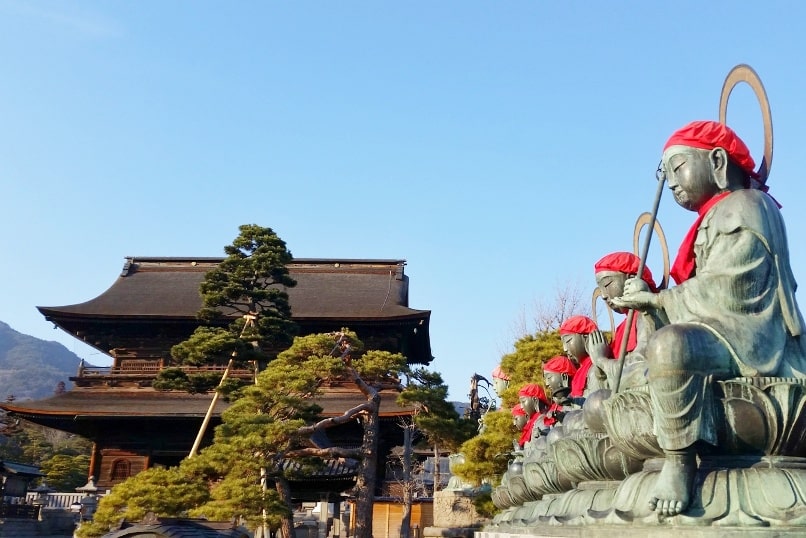
2. Jigokudani snow monkey park

3. Shibu onsen hot spring town

4. Obuse chestnut town

5. Hakuba Valley
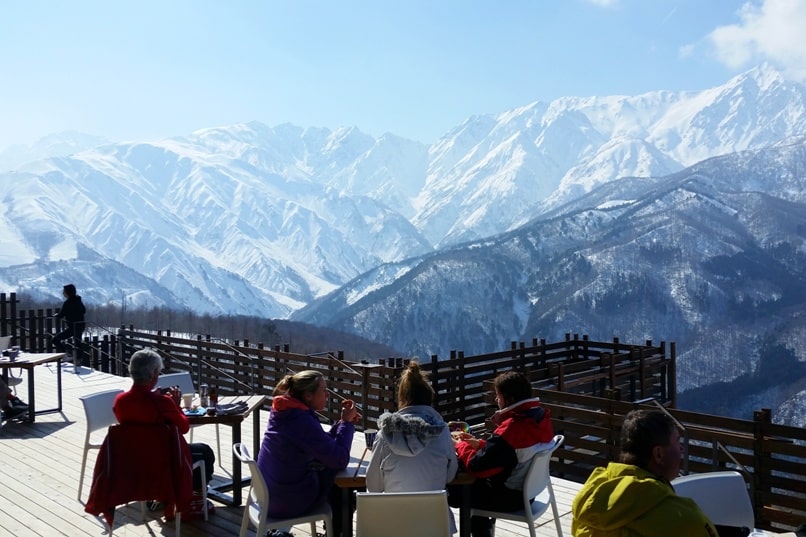
6. Matsumoto

- Kumano Kodo ancient pilgrimage trail (temples and shrines through the mountains)
- Must-see sumo show
- Traditional yukatabune dinner cruise
- Fun ninja lesson
- Koyasan pilgrimage temple town
7. Takayama
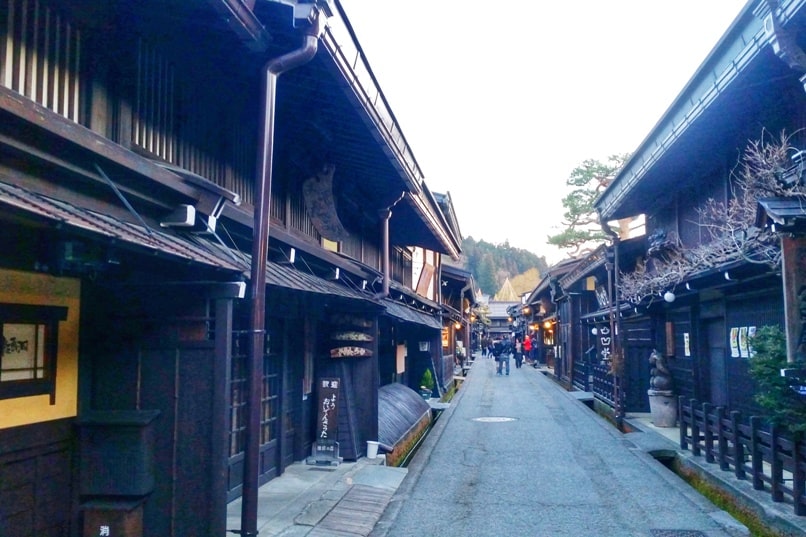
8. Shinhotaka ropeway

9. Shirakawago

So how to make these things a part of your trip to Japan?!
Here is the quick list of the Japan winter itinerary!
Day 1: Tokyo to Nagano
- Tokyo to Nagano by bus (4 hours)
- Overnight in Nagano
Day 2: Nagano
- Jigokudani snow monkey park
- Shibu onsen
Day 3: Nagano
- Zenkoji Temple
Day 4: Nagano to Hakuba
- Nagano city to Hakuba by bus (1.5 hours)
- Overnight in Hakuba
Day 5: Hakuba ski resort
- Happo-one ski resort (gondola ride for winter landscape of snow-capped mountain views if you don’t ski!)
Day 6: Hakuba ski resort
- Iwatake ski resort
Day 7: Hakuba to Takayama
- Hakuba to Matsumoto by train (1.5 hours)
- Matsumoto walk , including to Matsumoto Castle
- Matsumoto to Takayama by bus (2.5 hours)
- Overnight in Takayama
Day 8: Day trip to Shirakawago
- Takayama to Shirakawago by bus
- Visit Shirakawago
- Walk around Takayama Old City
Day 9: Day trip to Shinhotaka Ropeway
- Takayama to Shinhotaka ropeway by bus
- See winter mountain views around the Shinhotaka ropeway
Day 10: Takayama to Tokyo
- Takayama to Tokyo by bus or train
- Overnight in Tokyo
There’s a bit more on how to get around Japan below, but first…
Where to stay in Japan
There are maps and links below (partner websites) to search for hotels in the overnight cities that are a part of this itinerary. Put in future dates into the map, and have a look at hotel prices and reviews!
Since this itinerary uses the snow monkey pass (more on this in a bit) to go places from Nagano city, it can be convenient to stay near Nagano Station which is where you can find the train station and bus station.
I stayed at this hostel that also has private rooms that will give you a Japanese feeling.
For Hakuba, it can be helpful to first decide what it is you want to do here. The ski resorts are kind of spread out, so it will save you time if you stay in an area that will be closest to some of your activities. Some ski resorts might be a 30 minute to 1 hour shuttle ride away.
I stayed at this hostel that also has private rooms. It was located within walking distance of a shuttle bus stop, and they offered a free ride to the train station too.
If you follow this itinerary by going to the suggested day trips, then it will be convenient to stay near the bus station (which is also near the train station).
I stayed at this hostel that also has private rooms, and also gives you a bit of a Japanese feeling. This was a 5-10 minute walk from both the bus station and the old city area. If that’s all booked up, this hostel is a sister property of that one, also in a good location.
To be safe, it would be best to book your flight out of Tokyo on the day after you arrive back. Winter travel can mean an increased risk of delays. You don’t want to feel stressed about having to make it back by a certain time for your flight! (Although this could be a good reason to have travel insurance for those weather related delays !)
Shinjuku is where the main long distance terminal is located, and it’s also the location of a major train station too. This is also a popular Tokyo neighborhood for tourists.
In Shinjuku, I’ve stayed at this more modern hostel . In another area of Tokyo, I’ve also stayed in this hostel right near the Asakusa neighborhood of Tokyo that offered free group activities like cooking classes, and I would also recommend having a look at this hostel that is in Asakusa. This neighborhood can also be nice if you’ll be further exploring Tokyo.
And now…
A few more details about getting around Japan!

Getting from Tokyo to Nagano

To get from Tokyo to Nagano, it’s possible to take a shinkansen train if you want to use your JR pass .
But it’s also possible to get there for cheaper, at least when it comes to individual tickets. (Tokyo to Nagano shinkansen train vs Tokyo to Nagano bus.)
I basically just showed up at the Shinjuku bus station in Tokyo (THE main bus station in Tokyo) and bought a bus ticket to Nagano. I don’t always recommend this approach as it depends on season and destination (you might not get a seat), but it worked out for me at the end of February! The bus was fairly empty.
See more about my trip from Tokyo to Nagano by bus .
Getting around Nagano city area

Day 2: Nagano city
- Shibu onsen, small hot springs town
Day 3: Nagano City
- Obuse, the small chestnut town
Nagano is the name of a prefecture (similar to a state or province), and there’s also a city by the same name. This region was home to the 1998 winter olympics.
When in Nagano city, I bought the 2-day snow monkey pass which is around 3,500 yen (US$30). This included all necessary transportation to and from the famous Jigokudani snow monkey park (there’s a direct bus), and it includes the entry too. This is where you see snow monkeys in the onsen hot springs.
The snow monkey pass also includes transportation to Shibu onsen , which is a small hot springs town. You can visit Shibu Onsen on your way back from the monkey park. (It is kind of a long walk, but I walked there from the monkey park.) The pass also includes transportation to Obuse , which is a small town known for chestnuts. Visiting both of these places can give you a quieter small town Japanese experience.
You can buy the snow monkey pass once you arrive in Nagano, in the basement level of the train station. Follow signs for the Nagano Dentetsu Station.
When you’re in Nagano city, also be sure to visit Zenkoji Temple. This is a famous temple in Nagano.
Nagano is also known for the Japanese noodles called soba . While you can find soba all over Japan, since it’s a specialty here, be sure to have soba in Nagano! You might be able to see them prepare the soba from the street too.

I stayed at a hostel in Nagano which can give you a Japanese feeling type stay – see my photos !
Also see my photos for:
- How to spend 2 days in Nagano
- Walk through streets of Shibu Onsen
- Walk through streets of Obuse
Getting from Nagano to Hakuba

There is a direct bus from Nagano City to Hakuba.
You need to buy a bus ticket before you board the bus. The Nagano bus station is right next to/at the train station. You can buy bus tickets at a store near the place to catch the bus to Hakuba. (You’ll see signs.) It can be better to buy a ticket as soon as you arrive in Nagano, just so you don’t have to worry about tickets selling out. I bought mine on the same day I was leaving though.
Getting around Hakuba

- Happo-one ski resort
Hakuba is a popular ski destination in Japan, as well as a popular snowboarding destination.
Hakuba Valley located in Nagano prefecture, and is a part of what’s called the Japanese Alps or the Japan Alps.
There are a number of ski resorts and snow fields that make up Hakuba, and there’s a Hakuba Valley mountain area pass. This will give you access to all 10 mountains that make up Hakuba Valley including the gondolas and ski lifts, as well as free rides on the shuttle buses that run between the various ski resorts. You can go for 1-day ticket, starting at around 6,100 yen (US$60), through a 7-day ticket. Here are updated prices for the ski lift pass.
You can find ski rentals and snowboard rentals in Hakuba.
Even if you don’t ski, Hakuba can be worth a visit if you are seeking winter landscape! Have a look at taking the gondola at either the Iwatake ski resort (get snacks or a beer at Hakuba Mountain Harbor) or the Happo-one ski resort. You’ll need to buy a round-trip gondola ticket. And without a ski lift pass, the way you’ll get around the various Hakuba ski resorts will also be the shuttle, but that will be around 500 yen (US$5) per ride.
Some of the bigger ski resorts have free shuttles running around the areas too.
I stayed at a hostel in Hakuba that was a short walk from a Hakuba shuttle stop, and it’s also near a train station. See my photos!
Getting from Hakuba to Takayama

To get from Hakuba to Takayama, Matsumoto is basically along the way. Matsumoto has a famous castle, so it could be a convenient stop when you want to visit a castle in Japan!
See more about my trip from Hakuba to Takayama .
Getting around Hida Valley (Takayama area)

- Takayama to Shirakawago by bus (1.5 hours)
- Takayama to Shinhotaka ropeway by bus (2 hours)
- See winter mountain views
Takayama’s old city is a relatively small area you can walk that will give you that “very Japanese” feeling.
Takayama also makes for a good base for day trips by bus. You can make a trip to the UNESCO world heritage site and historic village of Shirakawago. (Google winter pictures for Shirakawago!)
You can also make a trip to Shinhotaka ropeway for more snow-capped mountain views if you didn’t get enough in Hakuba. If you’re interested in winter hiking or snowshoeing, this is a good area to start a trail too. You need to bring your own gear though! Otherwise if want just a casual winter hike, you can walk for 10-15 minutes on the snow-packed trails and then turn around!

See more about my trip to Shinhotaka ropeway on a cloudy day .
Takayama has a specialty “ Takayama ramen ” so be sure to have some of this type of Japanese noodles when in Takayama!

I stayed at a hostel in Takayama , which is another place that can give you a Japanese feeling type stay! It’s also a short walk from the bus station, which is convenient for those day trips!
Getting from Takayama to Tokyo

- Takayama to Tokyo by bus (6 hours)
There is a direct bus from Takayama to Tokyo. It’s best to buy this bus ticket at the bus station as soon as you get to Takayama so you don’t have to worry about bus tickets being sold out.
Otherwise, train is another way to get from Takayama to Tokyo, although it will require a train transfer and will be more expensive. If you plan on further exploring Japan like the traditional Golden Route tourist trail , this might be a time consider activating a JR pass . If riding the shinkansen bullet train is on your bucket list for Japan, this is a time you can take it. (You can also take it at the beginning of this Japan itinerary, from Tokyo to Nagano.)
For the end of the trip, instead of heading back to Tokyo, I moved on to Hokkaido for more of winter in Japan. There was plenty of snow to be seen in Hokkaido even at the end of March!
I went from Takayama to Nagoya by bus to get to the Nagoya airport, and from there took a flight to Hokkaido. (I almost didn’t get a bus ticket, so I would definitely say get this in advance if you’re headed to the airport!)
HAPPY 10 DAYS OF WINTER IN JAPAN!

How to spend winter in Japan
- 10 day winter itinerary with the Japan Alps
- 7 day winter itinerary in Hokkaido
If you're looking for a route for winter in Japan, here are some ideas!
- 10 day Japan winter itinerary
- Tokyo to Nagano bus
- 2 days in Nagano with snow monkey pass // Stay at this Nagano hostel (private rooms available)
- A few days in popular ski resort area Hakuba (go here for at least a day even if you don't ski for the winter landscape in the mountains!) // Stay at this Hakuba hostel (private rooms available)
- Hakuba to Takayama ( Hakuba to Matsumoto train / a few hours in Matsumoto / Matsumoto to Takayama bus )
- A few days in Takayama with day trips: Shirakawago / Shinhotaka ropeway on a sunny day // Stay at this Takayama hostel (private rooms available) and eat regional Takayama ramen
- Takayama back to Tokyo OR Takayama to Nagoya airport to fly to Hokkaido for more winter landscapes!
Hokkaido winter itinerary (train to get around - there are JR Hokkaido passes available, and you can use a regular JR pass too)
- Sapporo to Asahikawa (Asahikawa for penguin walk at zoo)
- Asahikawa to Abashiri (Abashiri for drift ice cruise)
- Abashiri to Obihiro (night in Obihiro and go to Lake Shikaribetsu ice village the next day)
- Obihiro to Sapporo
- Sapporo to Noboribetsu onsen hot spring town (day trip)
- Sapporo to Hakodate // Stay in this Hakodate hostel
- Hakodate to Tokyo on shinkansen bullet train through the underwater tunnel! ( Regular JR pass will be worth it if you take this train ride along with one more long distance train ride within 7 days)
Is a JR pass worth it?!
- Google maps can make it easy to figure out whether or not you should get a JR pass!
- In google maps, type in your departure and arrival city, and choose the transit icon. The route will come up, and so will the estimated cost at the bottom!
- Here is an example of a train route with cost on google maps.
- So do that for all of your long distance routes to figure out how much it might cost.
- Next, go here to see how much a JR pass costs from an official JR pass vendor (and partner of this website).
- And compare!
- Not all forms of public transportation are JR, but long distance shinkansen bullet trains are, and that's where the most cost savings will come.
Best of Kyoto (and Japan!)
- Best temples to visit in Kyoto
- Japanese gardens in Kyoto
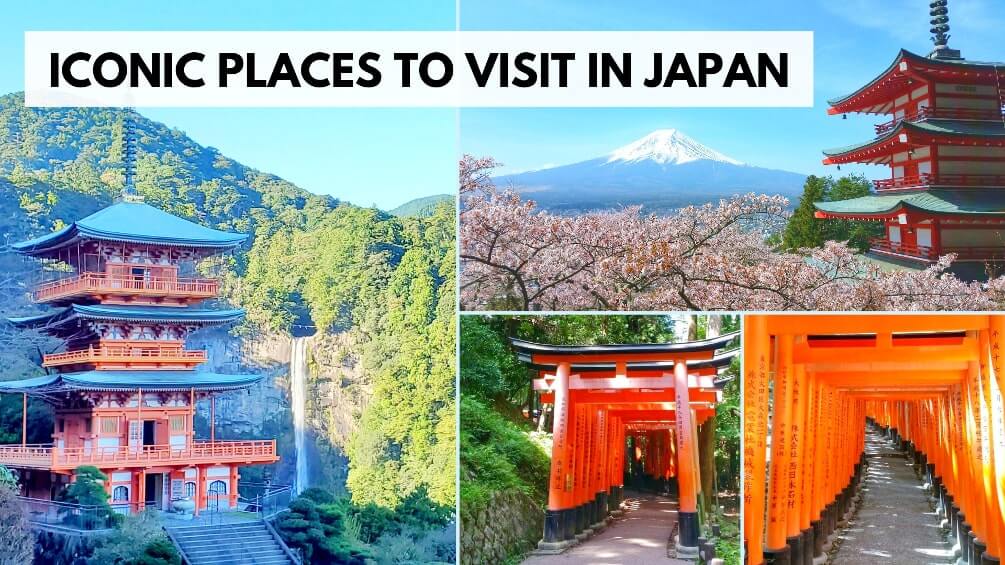
REQUEST INFORMATION
Don't know which tour is suitable for you.
Let us help you. Please tell us more about your interests. We will send some suggestions based on your needs.

- Trip Finder
- Saved Tours

Japan Winter Tours
Ring in the Holiday season in Japan! See a Japan covered with snow and shrouded in cool weather. Experience the Sapporo Snow Festival or see the famous Japanese Snow Monkeys.
- Our California office it's now
- 15:09 PM(Fri) - We Are Open
- Tel: 1-909-988-8885 Toll free : 1-855-325-2726 (USA & CANADA)
- Whatsapp: Website Line : 1-909-818-5901

- Monday to Friday 8:30AM - 5:30PM (PST) Saturday 9:00AM - 3:00PM (PST)
Winter in Japan
Why should you visit Japan in winter? Winter in Japan offers must-see sites blanketed in snow, savory seasonal dishes, and a list of winter activities for every traveler. Japan's winter season is vast depending on the region, but each are unique in beauty.
Winter in Japan can range from a generous amount of snowfall, to dry and mild weather conditions depending on certain parts of Japan. Japan enjoys its winter season in a list of ways. There is nothing like bathing in an outdoor onsen (hot springs) on a cold day, attending cheerful snow festivals, or enjoying delicious foods unique to the season. Northern regions of Japan, such as Hokkaido, experience an ample amount of snow that is perfect for its beautiful winter festivals. Kyoto or Tokyo, however, are known for its mostly dry and sunny winters, so you can still enjoy sightseeing.

Visiting Japan in December
While traveling to Japan in December, visitors can expect many local festivals, Christmas illuminations, and fewer tourist crowds. December is a great time to visit Japan, especially Tokyo. The climate is mild, not too cold, and mostly dry. You may even catch autumn leaves lingering early in the month. Although Christmas is not a national holiday in Japan, the country is big on night time illuminations, which are a romantic atmosphere to stroll around in. December also marks the first chance to see the famous onsen-bathing snow monkeys in Nagano.
Visiting Japan in January
Traveling to Japan in January means visitors have the opportunity to meet the famous Japanese snow monkeys at Jigokudani Snow Monkey Park. The red-faced monkeys, or Japanese Macaque, can be found bathing in an outdoor onsen (hot springs) against an icy backdrop in the forest. January is also the perfect time for travelers to unwind in a warm onsen and enjoy savory foods unique to the cold season. Gardens and temples are particularly beautiful too, with delicate specks of snow and few visitors, it really sets the winter scene.
Visiting Japan in February
If you plan on visiting Japan in February, you're in luck because this is the month where Japan's greatest winter festivals take place. To name, there is the Lake Shikotsu Ice Festival, Sapporo Snow Festival, Otaru Snow Light Path, Asahikawa Winter Festival, and the Sounkyo Ice Waterfall Festival. Additionally, travelers will have the chance to board an "ice breaker cruise" and sail across drift ice, and experience ice smelt fishing on the frozen Lake Akan. There is also the Kawazu Cherry Blossom Festival to see early-blooming cherry trees, and of course, the onsen-bathing snow monkeys.
Month-by-month guide to traveling in Japan in Winter
Japan Winter Tours incorporate must-see sites in prominent regions, fun winter activities, and the most charming winter festivals the country has to offer. Experience pleasant, dry weather in Japan's big cities and beautiful landscapes blanketed with snow in the northern regions. Our travelers on our Japan Winter Tours have the chance to see the red-faced snow monkeys and the most impressive snow sculptures.
Travel to Japan on one of our Japan Winter Tour packages to experience the best winter attractions. Visit must-see sites in Tokyo and Kyoto, or meet Nagano's famous snow monkeys.
- Spring Tours
- Summer Tours
- Autumn Tours
- Winter Tours
19 winter tours in Japan

Beyond Tokyo: Kawazu Cherry Blossoms & Snow Monkey Tour
Kawazu / Mt Fuji / Matsumoto / Yudanaka / Obuse / Nagano
5 Days 4 Nights | from US $1898.00
Take an exclusive 5-day trip Beyond Tokyo to experience the blooming of Japan's earliest cherry blossoms at the Kawazu Cherry Blossom Festival and a trip to see the adorable Snow Monkeys!

The Golden Route Japan Tour Winter
Tokyo / Hakone / Hikone / Koka / Kyoto / Nara / Osaka
7 Days 6 Nights | from US $2898.00
Perfect introduction for first time visitors with limited time.

Beyond Tokyo: Mt. Fuji & Snow Monkeys Winter Photography Tour
Mt Fuji - Matsumoto - Obuse - Yudanaka Onsen
5 Days 4 Nights | from US $2898.00 (Limit to 10 guests)
Go beyond Tokyo for a 5-day journey to Mount Fuji, Matsumoto, Obuse, and Nagano prefecture, and photograph Japan's natural splendor including the adorable Snow Monkeys of Yudanaka.

Nakasendo Trail Winter Tour
Kyoto / Nakatsugawa / Magome / Tsumago / Kiso Fukushima / Narai / Kiso Hirasawa / Asama Onsen / Tokyo
8 Days 7 Nights | from US $2935.00 (Limit to 13 guests)
A small-group guided winter tour to the Nakasendo trail. Walk or snow-shoe on five days for 1-3 hours.

The Golden Triangle of Japan Tour Winter: Snow Monkeys
Tokyo / Lake Kawaguchi / Matsumoto / Yudanaka / Takayama / Shirakawa-go / Kanazawa / Kyoto / Nara / Osaka
8 Days 7 Nights | from US $3198.00
The must see sights of Tokyo, Takayama & Kyoto... plus the Snow Monkeys.

Anime Flavor: Tokyo & Kyoto Winter Tour
Anime Flavor Tour is the best thing to fulfill your Otaku needs. We will go to some of the popular anime spots while learning about Japan’s culture.

Anime Flavor: Tokyo & Kyoto with Snow Monkey Tour
9 days 8 nights | from us $3598.00.

The Golden Triangle of Japan: Kawazu Cherry Blossom Festival & Snow Monkeys
Tokyo / Hakone / Kawazu / Lake Kawaguchi / Matsumoto / Yudanaka / Takayama / Shirakawa-go / Kanazawa / Kyoto / Nara / Osaka
9 Days 8 Nights | from US $3698.00
The must see sights of Tokyo, Takayama & Kyoto... plus the Kawazu Cherry Blossom Festival & Snow Monkeys.

Charms of Hokkaido Tour: Hokkaido Winter Festivals
Shiraoi / Lake Shikotsu / Sapporo / Otaru / Asahikawa / Sounkyo / Kitami / Abashiri / Lake Tofutsu / Lake Akan / Kushiro
9 Days 8 Nights | from US $3798.00
See the Sapporo Snow Festival, as well as three other main Winter Festivals in Hokkaido.

Best of Japan Tour Winter
Tokyo / Hakone / Hikone / Koka / Kyoto / Nara / Osaka / Himeji / Kurashiki / Hiroshima / Shimanami Kaido / Oobokekyo Gorge / Takamatsu / Kobe
10 Days 9 Nights | from US $4098.00
Perfect for those who want to visit the well known regions of Japan.
Why Travel on Our Group Tours
Lorem Ipsum is simply dummy text of the printing and typesetting industry. Lorem Ipsum has been the industry's standard dummy text ever since the 1500s, when an unknown printer took a galley of type and scrambled it to make a type specimen book.
Best Itinerary
Planned by experts, based on seasonal favorites and must-see sites.
Budget-friendly
Choose your style and split cost with other passengers
Hand-picked Accommodations
Chosen by our experienced staff
Fully Guided
Guide is available to you 24/7 and sleeps in the same hotel
Unique experiences
Learn to create your own Sushi, meet a geisha or maiko, and more
Meet locals and visit rural areas of Japan you might miss on other tours
Travel Styles
Deluxe-Plus
Spring Tours (Mar - May)
Summer Tours (Jun - Aug)
Autumn Tours (Sep - Nov)
Winter Tours (Dec - Feb)
Cherry Blossom Tours
Autumn Leaves Tours
Festival Tours
Special Interest Tours
Best Japan Tours
Tours for First Timers
Tours for Repeaters
Family Friendly Anime Tours
Anime Tours
Small Group Tours
Luxury Small Group Tours
Small Group Departures
Walking Tours
Seasonal Flowers Tours
Art & Architecture Tours
Photography Tours
Birding & Wildlife Tours
Garden Tours
Pottery Tours
Japanese Ancestry Tours
Pre & Post Cruise Tours
Starting City
Sapporo to Sapporo
Sapporo to Kushiro
Sapporo to Tokyo
Sapporo to Osaka
Sapporo to Fukuoka
Sapporo to Okinawa
Kushiro to Kushiro
Kushiro to Memanbetsu
Tokyo to Sapporo
Tokyo to Tokyo
Tokyo to Kyoto
Tokyo to Osaka
Tokyo to Hiroshima
Tokyo to Fukuoka
Tokyo to Okinawa
Tokyo to Seoul
Tokyo to Kushiro
Kyoto to Tokyo
Kyoto to Kyoto
Kyoto to Osaka
Osaka to Sapporo
Osaka to Tokyo
Osaka to Osaka
Osaka to Kotohira Onsen
Osaka to Fukuoka
Osaka to Okinawa
Fukuoka to Sapporo
Fukuoka to Tokyo
Fukuoka to Osaka
Fukuoka to Fukuoka
Fukuoka to Okinawa
Seoul to Tokyo
Taipei to Tokyo
Beijing to Tokyo
Hong Kong to Tokyo
5 Day Japan Tours
6 Day Japan Tours
7 Day Japan Tours
8 Day Japan Tours
9 Day Japan Tours
10 Day Japan Tours
11 Day Japan Tours
12 Day Japan Tours
13 Day Japan Tours
14 Day Japan Tours
15 Day Japan Tours
16 Day Japan Tours
17 Day Japan Tours
18 Day Japan Tours
19 Day Japan Tours
20 Day Japan Tours
21 Day Japan Tours
22 Day Japan Tours
Departure Month
Japan Tours in January
Japan Tours in February
Japan Tours in March
Japan Tours in April
Japan Tours in May
Japan Tours in June
Japan Tours in July
Japan Tours in August
Japan Tours in September
Japan Tours in October
Japan Tours in November
Japan Tours in December
Hokkaido Tours
Tohoku Tours
Kanto Tours
Chubu Tours
Kansai Tours
Shikoku Tours
Chugoku Tours
Kyushu Tours
Okinawa Tours
Must-See Cities
Kiso Valley
Sado Island
Akan National Park
Shirakawago
Kinosaki Onsen
Seasonal Attractions
Sanja Festival
Cherry Blossom Viewing at Yoshinoyama
Sendai Aoba Festival
Cherry Blossoms
Cherry Blossoms in Hokkaido
Cherry Blossoms in Tohoku
Cherry Blossom Festival at Matsumae Park
Cherry Blossom Festival at Ueno Park
Cherry Blossoms at Maruyama Park
Cherry Blossoms & Azaleas at Mifuneyama Rakuen
Shibazakura Festivals
Shibazakura Festivals of Hokkaido
Fuji Shibazakura Festival
Great Wisteria at Ashikaga Flower Park
Baby Blue Eyes Flowers at Hitachi Seaside Park
Takayama Spring Festival
Kyoto Aoi Festival
Tateyama Kurobe Alpine Route
Miyako Odori
Tenjin Festival
Tohoku 3 Great Summer Festivals
Aomori Nebuta Festival
Akita Kanto Festival
Sendai Tanabata Festival
Gion Summer Festival
Awa Odori Dance Festival
Lavenders in Hokkaido
Tanabata Fireworks
Karatsu Kunchi Festival
Jidai Festival
Jingu Gaien Ginkgo Avenue
Lake Kawaguchi Momiji-Kairo
Autumn Leaves
Takayama Autumn Festival
Obara Shikizakura Festival
Japan Winter Festivals
Sapporo Snow Festival
Lake Shikotsu Ice Festival
Asahikawa Winter Festival
Sounkyo Ice Waterfall Festival
Ice Breaker Cruise
Wakasagi Smelt Fishing
Kawazu Cherry Blossom Festival
Things Not to Miss
Hakone Open-Air Museum
Gion Geisha District
Kyoto Cuisine with Maiko
Green Tea Ceremony
Shikoku Pilgrimage Route
Takayama Festivals
Green Tea Ceremony with Maiko Interaction
Sushi-Making Experience
Tokyo SkyTree
Ghibli Museum
Kiyomizu Temple
Kenrokuen Garden
Hikone Castle
Zen Meditation (Zazen)
Calligraphy Lesson (Shodo)
Ikebana Lesson (Flower Arrangement)
Kimono Experience
Taiko Lesson
Dotonbori Street Food Tour
Nakasendo Hike
Ise Grand Shrine
Shiretoko Nature Cruise
Seikan Undersea Tunnel
The Omiya Bonsai Art Museum
Asakusa Sensoji Temple
Kinkaku-ji Temple (Golden Pavillion)
Todaiji Temple
Fushimi Inari Shrine
Miho Museum
Koka Ninja Mansion
Mikimoto Pearl Island
Himeji Castle
Izumo Grand Shrine
Naoshima Island
Gunkanjima Island
Mt Takasaki Monkey Park
Matsumoto Castle
Tokyo Tower
Snow Monkeys
Most Beautiful Places in Japan
Otaru Snow Light Path
Arashiyama Bamboo Forest
Kurashiki Canal Area
Miyajima Island
Shimanami Kaido
Takeda Castle
Motonosumi-Inari Shrine
Adachi Museum of Art
Takachiho Gorge
Oirase Stream
Tottori Sand Dunes
Wisteria Tunnel at Kawachi Fuji Gardens
What our customers say
4.9 stars based on 517 REVIEWS
We had a great tour guide (Miharu). Very sweet and knowledgeable she gave us alot of history but also insight into Japanese culture. It was an amazing experience with so many different places and activities.
We gained great appreciation for the culture and history of Japan through the sites we visited. The transportation was comfortable and convenient, and our guide, Trend, was outstanding, knowledgeable and entertaining. The accommodations were terrific, and it was so convenient to have two meals included each day. We enjoyed every aspect of the tour and we'd highly recommend it to others!
This tour was amazing with everything so well organized. The transportation was comfortable, accommodation was great (pretty much got 4-star hotels) and all the important touristy places were covered. It'd be hard for anyone to do the same itinerary on their own for sure. My fav. aspect of the tour is that it was not rushed and had ample time at each of the spots making it more enjoyable. Most importantly, our guide TREND was brilliant. She did an excellent job in taking care of the group, keeping it entertaining and educative. She always ensured we were all comfortable everywhere and especially in the restaurants where the menu was hard to understand given I had dietary restrictions leaving few choices. I'd recommend this tour to anyone who is looking for the highlights of Japan.
We had a wonderful tour.
We had a trip of a lifetime! Our guide Joyce and driver, Yokomi-san were very professional and timely. We will miss them! They were very friendly and ensured our children (11 and 14) had an incredible experience! Joyce was very knowledgeable and provided a lot of information about the sites we were seeing, made sure we had our tickets and did not lose anyone. We had plenty of time at each attraction to walk around, get snacks and use facilities - we never felt rushed or that we were wasting time. Sadly, there was too many clouds at Hakone to see anything. We had spent a lot of time riding to get there and saw nothing, so we ate the black egg and took photos, which was still memorable. The onsen hotel is the most beautiful hotel ever! We enjoyed using the family onsen and the kaiseki dinner.
Don't know which tour is best for you? Let us help you.
- Request Information
- share trip finder saved tours inquiry book now

Email Signup

IMAGES
VIDEO
COMMENTS
Cold weather and warm spirits. As winter approaches, a frigid chill engulfs the whole of Japan, and while it rarely snows in most of the country's metropolitan areas, the surrounding mountains and northern regions are regularly covered by fresh blankets of powder. Pack plenty of warm clothes, then bundle up and head outside to enjoy snow ...
Kyoto and Osaka in winter. Activities to add to your Japan in winter itinerary. 1 - Visit an onsen. 2 - Slurp ramen. #3 Make the most of indoor entertainment. 4 - Stay in a traditional Japanese house. 5 - Indulge in the izakaya experience. 6 - Go shopping. 7 - Take part in a traditional tea ceremony.
10. Kenrokuen (Ishikawa) Kenrokuen is a huge garden with 11.4 hectares of land situated in the center of Kanazawa City, Ishikawa Prefecture. Designated as one of the three great gardens in Japan, it attracts a number of visitors all year round along with Kanazawa Castle which is located nearby.
Winter Weather in Japan. Winter in Japan is from December to February and the weather is cold and dry. In Sapporo on Hokkaido, the average daily temperature range is from 0°C (32°F) in the warmest part of the day down to -6°C (20°F) at night. While in Tokyo or Kyoto temperatures average above freezing, ranging from 2 to 10°C (36-50°F ...
1. Fresh Sushi and Seafood. Eating local and seasonal food is nothing new in Japan, where people think little of traveling across the country to sample a local specialty in season. But while food is always a great reason to travel to Japan, winter is in some ways the best time of year for culinary travelers.
Searching for the perfect Japan winter itinerary? Here's the ultimate guide to planning your trip! Japan is a country that is known for its unique culture, stunning landscapes, and delicious cuisine. The winter season in Japan is particularly special, as it transforms the country into a winter wonderland. From snow-capped mountains to hot springs, there...
Winter is a beautiful time to visit Japan. There are many beautiful winter destinations to choose from. From enjoying gorgeous winter scenery to fun winter activities, to places serving specialty winter cuisine, you can find something for your trip. This article will help you decide on the best winter destinations to visit in Japan. Main image: PIXTA
To start the trip, visitors can arrive at Tokyo Station. It is essential to stay warm and comfortable during the winter trip to Japan. There are many accommodation choices available, from traditional ryokans to modern hotels. For a traditional experience, visitors can stay in a ryokan, which offers tatami-matted rooms and communal baths.
For first-timers, I recommend at least a 10 day trip to Japan to really enjoy both the old and modern Japan. Season - Winter - New Year (Hatsumode) holidays (Dec 25, 2019, to Jan 4, 2020) Experiences - 2 Full Dayside trips (Hiroshima and Hakone/Mt Fuji) + 2 Tours/Classes (Matcha Tea Making and Calligraphy in Kyoto) Trip Cost - Approximately ...
With perfect powder snow and over 600 resorts to choose from, Japan is the ideal destination to enjoy incredible winter sports. Even if you don't ski or snowboard, Japan offers winter adventures full of culture, outdoor activities, and superb cuisine. What's more, Japan embraces the wintertime like few other countries, making the coldest ...
Key Information. Winter in Japan is a time of abundant snowfall. It brings unique experiences and transforms the country into a picturesque wonderland. From the UNESCO World Heritage sites in Mie Prefecture to the snow-covered slopes of Hakuba Ski Resort, the season offers something for everyone. The holiday season starts in early December.
Kenrokuen in Ishikawa prefecture is considered one of Japan's three great gardens. The well-manicured space is a popular spot to visit year-round, but during the winter, it's particularly special.
Planning a Trip to Japan? ... Countryside Travel: Japan's Best Winter Destinations. 2020/12/25. Winter; Guide; Winter Festivals in the Tokyo Suburbs. 2020/11/26. Tradition; Winter; Snow Parks in Kanto. 2020/11/26. Winter; Guide; Ishikawa, Japan Food Travel Guide: 4 Must-Try Specialties During Winter.
Winter Temperatures in Japan. Winter in Japan generally lasts from December to February. In Tokyo, December temperatures tend to be around 12ºC (54°F) in the afternoon and drop to about 5ºC (41°F) in the morning and at night. By January, afternoon temperatures drop to 10ºC (50°F) and morning temperatures tend to hover between 2ºC - 3ºC ...
2. Prices are cheaper in the wintertime. Since fewer people are visiting Japan during the wintertime, prices of hotel rooms tend to drop to reflect this. So if you're looking to travel to Japan on a budget, winter is a great time to visit this notoriously expensive destination.
Hokkaido, Japan's northernmost major island, is important to mention. Many people choose to ski its famous powder (known in the ski world as Ja-pow), during all or at least part of their winter trip. From Tokyo, you can take the bullet train and be in Hokkaido in about four hours.
Here are 8 activities that will keep you cozy and entertained during winter in Japan. From hot springs to indoor performances, explore the best ways to stay warm and make the most of your trip to Japan. Some of the most beautiful onsen towns you have to visit include Arima Onsen, Ginzan Onsen, Kinugawa, and Kusatsu.
The Best Things to Do in Winter in Japan. 1. Hit The Powdery Slopes. One of the top reasons to visit Japan in winter is skiing and snowboarding. Ski resorts can be found in much of Japan, including the well-established Niseko in Hokkaido, which sits in the shadow of Mt. Yotei.
Maximise your time with this Japan itinerary 14 days and prepare for the time of your life. Amazing in any season, this reflects our Japan winter itinerary, but can just as easily be applied to spring, autumn or summer (with just one or two tweaks). Towering skyscrapers, incredible technology, pop culture, ancient traditions, unusual places ...
Domestic travel in Japan is super easy with an excellent public transport system and rail network, plenty of cheap domestic flights, and even night buses offering transport options to suit any budget. Days 1-2 Tokyo. Days 3-4 Hakone/Mt Fuji. Days 5-7 Hokkaido. Days 8-10 Japanese Alps.
First, the quick list of the best places to visit for winter in Japan when starting your trip from Tokyo. Then, the quick list of the 10 day trip itinerary to go to these places with 1-2 weeks in Japan. Then, a little bit about where to stay. And then, a bit more about getting around Japan, specific to these places, by bus or train!
5 Days 4 Nights | from US $1898.00. Take an exclusive 5-day trip Beyond Tokyo to experience the blooming of Japan's earliest cherry blossoms at the Kawazu Cherry Blossom Festival and a trip to see the adorable Snow Monkeys! Start Date. End Date. Twin/Triple.
On average, during December to February you can expect the Tokyo region to experience highs of 14°C and lows of 2°C. The average daily temperature in January, the coldest month, is around 6°C. Average temperatures by area in Japan throughout winter: Okinawa 20°C / 15°C. Hiroshima 11°C / 2°C.